UK WEALTHTECH LANDSCAPE REPORT

A comprehensive guide to the technology and related vendor marketplace for the UK wealth management community.
WTLR SERIES | EDITION 04 | OCTOBER 2023
TABLE OF CONTENTS 04 Introduction 08 Data Insights 12 Thought Leadership 80 Directory 142 About WTLR 144 About Us
A comprehensive UK-focused guide to the technology and related vendor marketplace for the global wealth management community.

Introduction
Welcome to the 2023 edition of our UK WealthTech Landscape report.
The UK’s wealth management sector remains buoyant and offers opportunity to those prepared to adapt and evolve with it, which increasingly means leveraging technology to grow and thrive. This can be in the context of exceeding client expectations on service delivery and engagement, empowering the adviser in the provision of that service, or underpinning more structural issues; such as being able to reduce the cost to serve through better technology use and thus, come down the wealth value chain to serve an emerging mass affluent investor community or adapt to new regulation.
Within the client section of this report, we look at how clients’ needs can best be met going forward. Engagement remains high on the list of priorities for wealth managers but one of the challenges that they face is connecting with various client segments on their own terms in a way that captures and keeps their attention.
In the UK, there is plenty to go at. Nowhere is this more pertinent for the UK wealth management community than within the mass affluent sector, either self-made or those that are shortly to inherit.
Royal London estimates that there are approximately 13.1 million individuals in the mass affluent market in
the UK, including 3.7 million who are currently nonadvised but are open to receiving financial advice.
The mass affluent story is set only to continue and has been driven by house prices, low debt rates, a low interest rate environment, and a culture of business starts up. But the economic forecast remains uncertain, and the cost-of-living crisis and inflation are both very real. However, the wealth management sector has a positive overall outlook with longterm structural processes that allow for the sector’s continued growth.
For one, the need to save for retirement has been well documented, and building up investments is currently top of mind for many in their 50s and at the height of their earnings. Pensions reform has also given more freedom to individuals regarding the management of their pension’s assets - notably the ability to transfer assets from a pension’s wrapper into other investments. In addition, automatic pension enrolment has created a greater awareness of pensions and will result in greater levels of asset accumulation going forward.
No doubt wealth managers in all shapes and forms will be looking to maximise the opportunity the growth of the market affords. One way of doing
“ UK WealthTech Landscape Report 2023 4
The economic forecast remains uncertain, and the costof-living crisis and inflation both are very real, but there remains a number of long-term structural issues that are favourable to the sector’s continued growth.
that is providing a digitised front-end experience that allows a degree of self-service and reduces cost to serve.
That theme is of course highly relevant within the adviser section of the report too. We explore topics such as technology support for client-facing teams in terms of efficiency and engagement, the importance of the human touch, as well as the means to deliver on investment goals.
Becoming the trusted adviser
Of course, making it as easy as possible for the adviser to perform well by exceeding service expectations, providing robust and agile whole-of-life investment planning and a plethora of other services adds up to making the adviser the trusted adviser and life partner. And that equates to success for the adviser and the wealth management firm alike. This becomes interesting from a strategic point of view because there is an upcoming shortage of advisers due to the fact that many are retiring - which will make for a war for talent as firms line up to attract and retain the best advisers and other professionals. The retirement of large numbers of advisers is also contributing to the increase in mergers and acquisitions as firms are sold - and acquired by larger entities to become part of a greater whole.
Indeed, this is one the themes we look at in the business section of this report. Mergers and acquisitions to secure scale are rife, and any newly created entity needs to have in place a strategy to
become a cohesive whole. Technology is central to the success of such projects and plays a unifying role. Other structural and strategic uses for technology, such as the relevance of AI, optimising the backend, how to adapt to Consumer Duty and finally, trusting technology all come under the spotlight in this section.
All in all, then, there is a clear opportunity for those able to provide the right blend of products and services to capture and retain wealth. Indeed, the UK is the world's biggest asset management centre outside the US, and is bigger than the next three largest European countries combined, according to Global City. The UK has also created a positive environment for investment on the back of its collaborative and innovative regulator and a plentiful pool of finance professionals.
But being able to identify, describe and action those trends as they emerge, and thus position the business for future success is crucial. That is where this report comes in. By exploring some of the main themes we see in the market, and describing the impact that technology can have on moving those thematic issues into actionable insights and strategy, we aim to capture a snapshot of the UK wealth management community as it stands today. The purpose is to identify the issues and developments that are top of mind for wealth managers, and then seek to explore the ways in which the burgeoning WealthTech community can help to drive wealth managers forward and prepare them for success.
“ UK WealthTech Landscape Report 2023 5
There is a clear opportunity for those able to provide the right blend of products and services to capture and retain wealth. Indeed, the UK is the world's biggest asset management centre outside the US, and is bigger than the next three largest European countries combined. The UK has also created a positive environment for investment on the back of its collaborative and innovative regulator.
About this report
One of the biggest issues that vendors and wealth managers face is getting to know each other, and that is where this report comes in as part of our overall goal of identifying, profiling and categorising the entire solution provider landscape around the wealth management sector. As with each of the other reports published in our ongoing WTLR series, our goal with the UK WTLR 2023 is to feature content from both wealth managers and vendors. We aim to start a conversation that spans both sides of the community.
While this report is a one-time showcase of this market, our online directory is available 24/7, 365 days a year, as a digital host of solution provider profiles, solution profiles, and content. Whatever your profile, this resource has been built according to the business needs of firms in the UK and the wider wealth management community across the world.
Ultimately, we hope we can help the UK wealth management sector make more informed decisions about technology infrastructure and stay abreast of the market’s status.
If you are a solution provider serving or targeting the UK wealth management sector but not included among the 786 businesses included in this report, please reach out office@thewealthmosaic.com
We hope you enjoy this report, thank you!
Stephen Wall - Founder Alison Ebbage - Editor-in Chief
 Stephen Wall Founder of The Wealth Mosaic
Alison Ebbage Editor-in-Chief of The Wealth Mosaic
Stephen Wall Founder of The Wealth Mosaic
Alison Ebbage Editor-in-Chief of The Wealth Mosaic

“
Ultimately, we hope we can help the UK wealth management sector make more informed decisions about technology infrastructure and stay abreast of the market’s status. One of the biggest issues that vendors and wealth managers face is getting to know each other, and that is where this report comes in as part of our overall goal of identifying, profiling and categorising the entire solution provider landscape around the wealth management sector.
UK WealthTech Landscape Report 2023 6
We would like to thank













 Carol Katz Partner and Knowledge Lawyer in the Tax and Wealth Planning Group at Mishcon Private
Sam Beeby Head of Wealth and Investment Management Consulting at Cognizant
Danny Cox Head of Communications at Hargreaves Lansdown
Christopher Baxter Senior Global Solutions Consultant at aixigo
Tom Bucktrout Senior Sales Manager at CREALOGIX
Chris Handley IT Strategy and Change Director at Rathbones
Michael Basi Head of Wealth Proposition (EMEA) at InvestCloud
Iwan Schafthuizen Managing Director Business Development at Ortec Finance
Nils Frowein CEO of additiv
Fredrik Davéus CEO of Kidbrooke
Ian Ewart Board Adviser
Grayson Greer Managing DirectorGlobal at of First Rate
Sameera Udayangana Head of Engineering at WealthOS
Carol Katz Partner and Knowledge Lawyer in the Tax and Wealth Planning Group at Mishcon Private
Sam Beeby Head of Wealth and Investment Management Consulting at Cognizant
Danny Cox Head of Communications at Hargreaves Lansdown
Christopher Baxter Senior Global Solutions Consultant at aixigo
Tom Bucktrout Senior Sales Manager at CREALOGIX
Chris Handley IT Strategy and Change Director at Rathbones
Michael Basi Head of Wealth Proposition (EMEA) at InvestCloud
Iwan Schafthuizen Managing Director Business Development at Ortec Finance
Nils Frowein CEO of additiv
Fredrik Davéus CEO of Kidbrooke
Ian Ewart Board Adviser
Grayson Greer Managing DirectorGlobal at of First Rate
Sameera Udayangana Head of Engineering at WealthOS
UK WealthTech Landscape Report 2023 7
Sean Kiernan Founder and CEO of Greengage
Data Insights
A collection of relevant data points (from third-party sources) to tell the story of what is happening in the wealth management community in the United Kingdom.
The UK is a wealthy country punching above its weight in terms of the number of wealthy individuals and their wealth compared to its total population. But that wealth is increasingly concentrated at the top. Research from The Equality Trust identified a pattern of the rich getting richer. It said that in 2022, the wealthiest fifth of the population held 36% of the UK’s total wealth - their income also grew by 7.8% that year. It also said that in 2023, the richest 50 families in the UK hold more wealth than half of the UK population, comprising 33.5 million people. If that growth rate continues, it said, the value of wealth held by the wealthiest 200 families will be more than the gross domestic product (GDP) of the entire UK.
In the UK, the number of millionaires fell by 440,000 to 2.6 million in 2022 according to UBS. And the mass affluent, with around £50,000 to £5 million of investable assets, account for some £3.8 trillion as at the end of 2022. They account for about 67% of UK investable wealth, and between 2022 and 2026.
Royal London estimates that there are approximately 13.1 million individuals in the mass affluent market in the UK, including 3.7 million who are currently nonadvised but are open to receiving financial advice.
It is no surprise then that the UK also has a sizeable advisory market catering to the mass affluent segment, numbering almost 28,000, according to the FCA . However, the bad news is that there are not enough advisers to go around, with the average adviser age being in the mid-50s - and therefore closer to the end of their career than the beginning.
36% 33.5 MILLION
MARKET SIZE
The UK wealth management is a trillion-pound market, with circa £2 trillion in personal liquid investable financial assets held by UK households and £1.9 trillion residing in defined benefit pension liabilities.
Lek
In 2022, the richest fifth of the population held 36% of the UK’s total wealth, and their income grew by 7.8% that year.
By 2023, the richest 50 families in the UK held more wealth than half of the UK population, comprising 33.5 million people. If that growth rate continues the value of wealth held by the wealthiest 200 families will be more than the GDP of the entire UK.
The Equality Trust
UK WealthTech Landscape Report 2023 8
£653 BILLION
WEALTH SEGMENTS
BILLIONAIRES
The UK had 177 billionaires in 2022 with a combined wealth of £653 billion.
The richest 250 people in the UK in 2022 held £710.723 billion of wealth.
The Sunday Times Rich List
2.56 MILLIONAIRES
MILLIONAIRES
There are currently 2.56 million-dollar millionaires, accounting for 3.56% of the population.
In the UK, the number of millionaires fell by 440,000 to 2.6 million in 2022.
UBS
67%
MASS-AFFLUENT INVESTORS
Mass-affluent assets account for some £3.8 trillion as at the end of 2022. They account for about 67% of UK investable wealth and have liquid assets of £3.0 trillion.
GlobalData
This will force a war for talent as firms compete to attract and retain the best people. It is also giving rise to a series of mergers and acquisitions as advisers sell up and retire.
That said, in Sterling terms, approximately £1.2 trillion of client assets are already managed by the advisory community, according to LEK . And although overall assets under management (AUM) in the UK fell in 2022 by 9.9% to £1.58 trillion, 2023’s numbers are expected to be much better as economic uncertainty dissipates and inflation steadies, so says EY
Either way, 67% of total AUM, the proportion held by the mass affluent, is well worth chasing and thus this segment is an obvious opportunity - not just for the traditional advisory community but also for other forms of wealth managers to leverage technology to reduce the cost to serve and to come down the value chain to cater to this segment.
There is also a clear case for appealing to the younger generation. Indeed, with the 'Great Wealth Transfer', a 66% increase in annual intergenerational wealth transfers will occur, rising from £69 billion to £115 billion from 2017 to 2027. Some £5.5 trillion will pass between generations within the next 30 years, according to the Kings Court Trust
Investment preferences
Economic confidence and a high interest rate environment have knocked confidence. This is particularly the case within the previously booming private markets where investors once flocked to take advantage of better returns and escape often lacklustre mainstream investments.
UK WealthTech Landscape Report 2023 9
28,000 ADVISERS
ADVISERS
The UK has a sizeable advisory market numbering almost 28,000 advisers.
There are around 31,000 financial advisers (including mortgage advisers) in the UK.
Mondaq
£
EY
Approximately £1.2 trillion of client assets are managed by the advisory community.
66% THE GREAT WEALTH TRANSFER
There will be an estimated 66% increase in annual intergenerational wealth transfers rising from £69 billion in 2017 to £115 billion in 2027.
Indeed, the UK has the second-largest private equity market relative to its GDP in Europe, according to PwC , and is a sought-after destination for international private equity investment flows.
Five out of 10 leading private equity firms in Europe are located in London, according to Statista PwC , meanwhile, says that that 81% of its survey respondents thought the UK was a good place for private equity and that the UK is the second biggest centre for buyouts in Europe, with its 21% of all deals done in Europe taking place in the UK, and accounting for 24% of Europe's overall buyout value.
ESG and sustainability investment have also taken a knock due to poor returns and their integration into ‘everyday’ consideration when selecting an investment. According to EY, however, “asset managers retain a strong focus on sustainability in 2023, with new SDR regulation set to improve investor confidence and reduce the risks of greenwashing.”
Digital assets, meanwhile, seem to be slowly emerging from recent volatility and were worth US$1 trillion in 2022, according to KPMG . It also says that 10% of adults in the UK held digital assets in 2022, and “if the crypto market collapsed, it would be equivalent to the size of Germany’s economy - the largest economy in the EU - being completely wiped out.”
The good news is that once the Financial Services and Markets Bill (FSMB) is passed, authorities will have much better oversight powers and be able to clarify things. This will no doubt act as a boost and, in an innovative financial centre like London, will no doubt give rise to a lot of activity around this area as a whole.
£5.5 TRILLION
That will be of interest to the wealthy investment community - particularly the younger generation, who are much more tech-savvy and digital native. It will also likely appeal to the emerging mass affluent once it becomes a little better tested and stable within the markets.
All in all, the figures point to a wealth management community with plenty of opportunity and the likelihood of bearing fruit for those able to provide exemplary service at the right time and place to the right client base - as ever, the devil is in the detail!
FCA
Some £5.5 trillion will pass between generations within the next 30 years. Kings Court Trust AUM
LEK
1.2 TRILLION 6.4 % 2.5 % 10
E&Y forecasts a rise of 2.5% in AUM with higher growth of 6.4% expected in 2024.
LOYALTY
In 2021 over half (54%) of clients had been with their wealth manager for ten years or more. A third, however, started their relationship within the last five years. Net Promoter Scores (NPS) came in at 43% among recently joined wealthier clients, to 36% for those that have been with their main firm for ten years or more. Aon
DIGITISATION
40% of clients now say digital access has greater importance in decision making.
75% of wealth firms believe that investors primary engagement channel will be digital within two years.
Companies that embrace digital transformation will, on average, increase productivity by nearly 14%, AUM by 8.1%, and revenue by 7.7%.
Deloitte
INVESTMENTS
ESG INVESTMENT
Asset managers to retain strong focus on sustainability in 2023, with new SDR regulation set to improve investor confidence and reduce the risk of greenwashing.
EY
PRIVATE MARKETS
81% US$1 TRILLION
81% of respondents in a survey thought the UK was a good place for private equity.
The UK is the second biggest centre for buyouts in Europe with 21% of deals worth 24% of the region’s overall buyout value.
PwC
London is the leading private equity hub in Europe with five out of the 10 leading private equity firms in Europe located in London.
Statista
DIGITAL ASSETS
The digital assets industry in the UK was worth US$1 trillion in 2022.
10% of adults in the UK held digital assets in 2022. KPMG
“
Although overall assets under management (AUM) in the UK fell in 2022 by 9.9% to £1.58 trillion, 2023’s numbers are expected to be much better as economic uncertainty dissipates and inflation steadies. EY
54% 43%
40% 14
% 8.1 % 7.7 %
UK WealthTech Landscape Report 2023 11
The Client
The client section of our report serves to identify and examine the issues that wealth managers need to consider when it comes to keeping clients happy and, thus, retaining their business positioning to win new clients. This is something that is at the top of the minds of the wealth management community. Client expectations are high and will only increase as a younger cohort of investors come into wealth. Indeed, younger investors tend to be more digitally savvy than their predecessors and expect and omni-opti experience that affords a high touch relationship with the adviser as well as retaining the face-toface element of the service. Given that loyalty levels are low then the challenge of wealth managers is how to best leverage technology to provide excellence within a hybrid service proposition.
UK WealthTech Landscape Report 2023 12
Engagement - better decisions and better outcomes
The advice/guidance boundary has, for a long time now, been a significant barrier to a wealth manager’s ability to help engage consumers and guide them towards better outcomes. Whether it is pointing clients to a lower-cost index tracking option or reducing the risk that clients run out of pension savings too soon, there is a bigger role firms can play in supporting their customers.
The regulatory developments to review this boundary could not have come too soon. The market is at an inflection point; client expectations and demands have been accelerated by the pandemic, the service gap is widening, regulation is shifting, and technology is transforming.
But 'nudge work' with clients can make a big difference. Indeed, innovation and better use of data analytics enable greater engagement and outcomes through improved personalisation. This is a crucial step to drive better decisions and better outcomes, to help savers and investors meet the challenges of the cost-of-living crisis and support the nation as we rebuild our financial resilience.
Firms can do more to help people manage their dayto-day finances and the Consumer Duty Act gives us a framework to change that. We know that client engagement is an ongoing relationship, not a one-off, and in addition to help for those seeking it – from our website, helpdesk and/or financial adviser, the development of data-based nudges helps tackle inertia.
The challenge stems from the fact that retail investors do not always invest optimally. Identified through the early stages of the Covid-19 pandemic and the surge of share trading, we noticed that many people’s first investment was in one share - typically an airline or hospitality stock hoping to benefit when the bounce came. Our concern was that with a poor first experience, these new investors might be turned off the stockmarket for good.
Encouraging these investors to diversify would clearly provide a better long-term solution for them, and this was the basis for our programme.
This data-driven approach assesses client portfolios on various measures to allow identification of clients who need more guidance. We then target personalised communications to nudge people in the right direction, whether this be to diversify, rebalance, or hold more or less cash. Further encouragement is through our 'Learn' hub and with investing education across account journeys.
The plan is to do more along these lines: direct mail, push notifications on the app. We will look to link our findings and learnings into other initiatives such as our developing augmented services. As an aside, the metrics also act as proof points for measuring client outcomes.
From over 690,000 clients engaged in the programme, over 38,000 of them have improved their portfolios. From this, we can see that our targeted approach boosts engagement, but greater personalisation will
Danny Cox, Head of Communications at Hargreaves Lansdown, outlines the need to engage with investors and the necessity of having the technological means to do so.
UK WealthTech Landscape Report 2023 14
improve these results and is needed to drive more action. For example:
• Suggested actions on how clients can improve their investment position.
• Personalised investment solutions based on the clients’ holdings.
• Suggested actions on improving wider financial planning.
Data analysis can also help to identify opportunities to deliver a better outcome for clients through client journeys. For example, looking at clients applying for pension drawdown:

• Seven in 10 were only taking tax-free cash.
• Two in three were taking full drawdown.
The flexibility of partial drawdown provides many tax benefits, however the take-up was low. Our research found that people were overwhelmed with information and choices, meaning they lost focus on the important and relevant parts, and that the retirement pathways added another decision point.
The response was to redesign the journey, build a new digital application, remove income options to cut the cognitive load and add positive friction to the places that matter most.
There is a once-in-a-generation chance to align regulatory reform with fast-moving technological innovation to really deliver for retail investors who have a greater need to take personal responsibility for their financial future. UK WealthTech Landscape Report 2023 15
“
The result was a doubling of the number of clients taking partial drawdown and a 75% reduction in the number of applications which required querying.
Further improvements to engagement and outcomes can be sought in other ways:
• Households need to consider their finances in the round; hence, the development of 'five to thrive'control your debt, protect your family, save for a rainy day, plan for later life and invest to make more of your money. We use this approach in everything from our savings and resilience barometer to the development of augmented services.

• Products and services should be user-led but expert-informed: We use knowledge from our advisory service and insight gained from deep client relationships to inform the tools and services that we develop for our broader client base, which are consumer tested as we develop them.
• Communication should be clear and transparent, with the recognition that less can mean more; client research shows that narrowing down options is often a driver of better client decision-making.
• Diverse customer needs should be considered through product and service design. Wealth management clients have a diverse set of needs; from hobbyists and older people wanting to support their grandchildren to workplace pensions clients. These considerations, including support for vulnerable customers, should be considered at inception.
• The benefits of a coherent approach is underpinned by the Consumer Duty Act - A principles-based approach needs a common understanding of the critical factors in the four Consumer Duty outcomes: communications, products and services, customer service and price and value.
UK WealthTech Landscape Report 2023 16
The data generated from tracking consumer outcomes, under the Consumer Duty should be used to drive supervision and enforcement.
There is a once-in-a-generation chance to align regulatory reform with fast-moving technological innovation to really deliver for retail investors who have a greater need to take personal responsibility for their financial future. Plus, a big opportunity to pull

together regulatory agendas in the retail investment space, putting consumers at the heart of it.
Firms can do more to help people manage their dayto-day finances, but innovation is being held back by legacy regulation. The Consumer Duty gives us a framework to change that. Any change needs to realise the future opportunities we have with tech and data analytics.

Generic Targeted Message How risky is your investment portfolio? Based on your current HL account, your portfolio could be too risky Uplift (%) Click rate (%) 0.78% 4.57% Message Risk account banner example Generic Targeted Message The benefits of having a diverse portfolio Your HL portfolio isn't as diverse as it could be Uplift (%) Open rate (%) 38% 61% +62% Click rate (%) 4% 12% +300% Diversification email example Read more Discover more about Hargreaves Lansdown Danny Cox
Damisola.cox@hl.co.uk UK WealthTech Landscape Report 2023 17
Head of Communications
Women of wealth - making the message relevant
Women now account for a third of the world’s wealth and are rapidly increasing that proportion. Inheritance, self-made wealth, better educational levels leading to higher level roles, cultural change, you name it - it all contributes to the power that women now have over wealth and the rapidly growing proportion of wealth they hold.
Research by BCG says women add some US$5 trillion to the global wealth pool each year. And the Centre for Economic and Business Research predicts that 60% of UK wealth will be in womens' hands by 2025. Moreover 70% of Baby Boomer widows will leave their partner’s adviser within a year of their death says Schroders
Wealth managers need to take that on board and give some serious thought to how best to serve this cohort. Making small tweaks to the existing proposition is not good enough; women tend to take a different approach to their wealth’s management and structuring, and the way in which they invest. Both the conversation and the processes with wealth managers need to be more aligned with what women want.
But moreover, wealth managers need to not treat women as one single segment. Indeed, the needs and aims of this group are just as diverse as with men. So, taking the time to get to know the individual client and then taking that conversation forward in a clientcentric way, where the individual is heard and listened to, and where the process and conversation are both framed in a way to make for a great client experience, will be key to attracting and retaining this group.
Although change is starting to be seen, the BCG report says that women remain largely underserved by the wealth management community and that too many banks and firms rely on broad assumptions about what women are looking for. The result is that many women of wealth feel like they are a round peg being made to fit in a square hole, at best. At worst, they feel like any conversations are sometimes patronising and that they are not being heard.
It does not help that women advisers are in short supply. Financial Conduct Authority (FCA) data found that only 16% of advisers were women, and the Personal Finance Society estimates that only 22% of the UK’s chartered financial planners are women. A recent research from Schroders also found that only 5% of advisers have a differentiated strategy for attracting and retaining women clients.
Carol Katz, Partner at Mishcon de Reya, one of the few firms to have a tailored offering for women says: “It is still a very male-orientated world no matter which way you look at things. Many things in the world are designed for men - from power tools that are sized according to men’s hands, to processes and languages around wealth management.”
Indeed, in broad terms, women listen in a different way from men, and they also express themselves differently. Financial literacy levels are also different from men’s, particularly among older generations.
Indeed, the commonly seen model is where the patriarch has passed away and the widow is now holding all the
TWM interviews Carol Katz, Partner at Mishcon de Reya. She outlines the ways in which wealth managers can be more appealing to women of wealth, a rapidly growing sector of the wealth management client base.
UK WealthTech Landscape Report 2023 18
wealth but does not have the requisite understanding or knowledge to make informed decisions.
Katz comments: “It is often assumed that women do not manage the financial affairs of the family and while this is changing, for the current wealthy one of the biggest issues we see is when the husband passes away and the widow has very little idea of how things are managed or even what assets there are and where and how they are held.”
She points to the need to have simple tools in place to allow someone with little financial knowledge and literacy to determine the basics like where they are resident for tax purposes, what is held where, whether there is any debt or other outstanding money, in whose name are properties or other real estate or businesses held, what will happen now that the patriarch has passed in terms of passing down wealth, businesses, other assets and control over them.
“As a profession we need to make sure that women of all generations are financially educated and able to make informed decisions before they are at a point of mental vulnerability when they are widowed. Advisers need to understand the needs and interests of that person at what is a distressing and vulnerable time,” Katz says.
RBC Brewin Dolphin, for instance, has undertaken to change its culture to meet specific needs - as an example, it does not charge differently if someone, such as a recently widowed woman who has not had much to do with investments, needs more initial

meetings to get a handle on things and to move things forward. It also offers a financial awareness course covering the basics. The aim is to give women a better understanding of how investments work, and in an environment where they can ask questions without being judged.
By contrast, younger women are more financially literate than older women and that means better levels of confidence. The BCG study showed that 70% of Millennial women take the lead in all financial decisions, compared with just 40% of female Baby Boomers. In addition, 66% of married Millennial women remain involved in financial decisions as opposed to 29% of Baby Boomers.
Objectives
That said there are similarities between all investors and the starting point is very much the same: what is the objective when it comes to the wealth? It is only once the more reflective questions, such as legacy, causes and impact investing come in that opinions start to diverge and so too, should the financial planning.
“As an industry, we need to be doing better listening to people who lead complicated lives. At a basic level, we should help clients map all the variables and keep a complete record of their wealth and objectives so that, as a part of succession planning, for example, we make it easy for the inheritors to understand the position they find themselves in. Financial literacy and education are not just for youngsters,” says Katz.
UK WealthTech Landscape Report 2023 19
Wealth managers need to not treat women as one single segment. Indeed, the needs and aims of this group are just as diverse as with men. So, taking the time to get to know the individual client and then taking that conversation forward in a client-centric way, where the individual is heard and listened to, and where the process and conversation are both framed in a way to make for a great client experience, will be key to attracting and retaining this group.
She says that the legacy, in particular, is something that women and men tend to differ on and following from that, the investment aims and thus types diverge too. Returns are not all with many women. Instead, the tendency is to see the bigger picture and make the world a better place - in turn that makes things better for the family. The broader context is key, and this is reflected in both philanthropic endeavour and impact and ESG investing. Women are about much more that simply retaining wealth and status.
Impact investing and philanthropy
Katz comments: “There are some aspects common to both genders such as preservation of cultural heritage and treasures. But very generally, women tend to go
for more humanitarian and nurturing causes that help someone or something to improve or get better. Men meanwhile tend (though not always!) to go for something solid that is materially obvious.”
The same is true when it comes to investing. Women tend to choose their investments to serve their families, not just themselves, and following their personal values.
The BCG report said that women are looking for investments that do not just perform well, but they also create a positive impact, instead of investing solely for performance. In its survey, 64% of women said that they factor environmental, social, and governance (ESG) concerns into their decisioning. Social and impact investing is, as a result, benefiting from the input of women.

“ UK WealthTech Landscape Report 2023 20
Indeed, there is a huge population of women investors. As an example, TRIBE is one firm that caters to social and impact investing. It describes itself as progressive and collaborative. Although it has not been designed specifically with women in mind, the language used, and the user experience is very appealing to women and aligns well. A significant amount of its clients are women.
Katz comments: “The process is important; all roads should not lead to investing based solely on returns. When it comes to portals there should be filters that are easy to use and easily understandable that help to select investment based on impact or philanthropy based on values and causes.”
Related to that is the conversations that women have with their advisers and making sure that women are neither viewed as a homogenous group nor assumed to have inherited family wealth. In dealing with these personalisation tools, Artificial Intelligence (AI) and Machine Learning (ML) can be harnessed to make sure that the conversation is relevant, that the woman in question feels heard and that the conversation is rich and engaging. This sentiment of course applies to all but is particularly pertinent when women are commonly reporting being talked down to or being viewed through a marketing lens rather than a business perspective, as reported by the BCG report. The report mentioned that 30% of the women participating said their relationship manager spoke to them differently because of their gender.
Katz comments: “We need to think more about how we engage women. Speak to the professional wealth managers and use the digital tools available to engage them and bring them into the whole wealth management process.”

She suggests bringing more women into pilot groups to ask them about the processes and language that they encounter when they deal with the wealth management community.
Language wise, Katz also says that ChatGPT could be a useful tool, if it can be trained to pick up on whether it is talking to a woman or a man and how that conversation could differ accordingly.

“This is different to dumbing down or putting a marketing spin on things, it is a basic recognition that people are different and need to be treated as individuals," she says.
Adding: “Language is so important and being able to be sensitive in its use is so lacking. Even on social media (or the algorithms behind it) the voice is predominantly male and this needs to change to make engaging with the wealth management community more appealing.”
Another less technical solution would be to have women advising women. There is a strong sense among female wealth managers that they are better placed than men to empathise with women clients, because they too have juggled career, motherhood, caring for elderly relatives and the impact of pay and pensions gaps on finances.
To conclude then, women, generally, have different needs and approaches than men. But a homogeneous cohort they are not. By recognising this and using relationships, process mapping and tools to provide an experience that is personalised, relevant and engaging, wealth managers can capture this rapidly growing market.
Carol Katz Partner and Knowledge Lawyer carol.katz@Mishcon.com
Read more Discover more about Mishcon de Reya UK WealthTech Landscape Report 2023 21
Serving tomorrow’s customer todaystrategies for wealth in waiting
In wealth management, Millennial and Gen Z customers remain critically underserved. Those that are set to inherit wealth will be less likely than previous generations to feel affinity with their parents’ wealth managers, and those that are yet to accumulate wealth are not yet visible to the industry. Incumbent wealth providers face a growing risk of obsolescence because of their failure to innovate to win the hearts and minds of a disenfranchised market-in-waiting.
A sensible strategy is to engage and earn the trust of these people now, before they come into wealth, and thus be the obvious provider to service their growing assets when the time comes. But almost without exception, today’s providers are failing to connect with this audience.
There are understandable reasons for the inertia. Wealth management is a relationship-centric world, and relationship managers have always owned and jealously guarded the customer relationship. This entrenched culture is a difficult starting point to produce the sort of digital interaction model and nuanced data strategy needed to develop a next-generation customer experience. There’s also the problem of the business model – the
ubiquitous percentage of assets under management (AUM) system, which provides no viable revenue opportunity from customers with low or no assets to invest, making it hard to justify serving the notyet-wealthy in the short term.
But most wealth is inherited. Today’s youth are therefore key to the continuity of incumbent advice businesses. The mean average client age for traditional advice firms is 59 years old. According to the Advice Gap report , only 6% of people paying for advice are aged 18-24 and only 13% are aged 25-34. As wealth is passed onto future generations it is essential that wealth managers adapt to plug this hole. This means running to catch up with their digital counterparts within the wider financial services industry.
Where should wealth management firms focus innovation to capture these vital but overlooked segments?
We see three key areas:
1. Brand modernisation
2. Experience design
3. Hybrid interaction
Capturing the market-in-waiting requires bold new thinking. Wealth managers need to act now and with confidence to capture this market, explains Sam Beeby, Associate Director, Wealth and Investment Management Practice Lead at Cognizant.
UK WealthTech Landscape Report 2023 22
Brand modernisation - why should they trust you?
Wealth providers must be able to break down existing perceptions and debunk stereotypes to overcome issues of trust and literacy within the next-generation audience. According to a 2020 survey by My Pension Expert, 57% of people do not trust financial advisers, believing them to be more self-interested than service oriented. There is clearly a gulf between advice-providers and wouldbe consumers, leaving younger generations unable to envisage the potential value of financial advice and therefore not seeking it. If they do want help, their first port of call is friends, family, and the internet.
The shift towards accessible, digestible content proliferated online through social media represents a serious call to action. While most 18-25-year-olds will not be receiving their inheritance anytime soon, it makes sense to build a relationship and solve their early pain points in order to be welll-positioned when wealth does arrive. This generation puts trust in different sources than their parents. The Advice Gap report found that, among those unwilling to pay for financial advice, 21% of 18-25-year-olds currently use social media as their main source of information. And Statista estimated that a person in the UK spends on
average four hours and 14 minutes per day on their mobile devices, an increase of 41% from 2019.
Among younger generations, trust based on brand heritage alone has largely disappeared. Instead, confidence is increasingly captured by brands that can understand and solve pain points while demonstrating the right values. The young care less about historical measures like performance and social proof, and more about things like:
• Experience; is my journey clear, simple, and intuitive?
• Tone of voice; do I understand everything? Do I feel understood and supported?
• Reliability; is the service accessible? Does the product work without breaking?
• Transparency; do I understand the service? Do I know what I am paying for and why?
• Values; is this company making the world better? Is it helping me to do so?
Wealth providers wishing to emanate trustworthiness and brand appeal for the younger generations should ask themselves whether their brand communicates competence and empathy in these areas.

UK WealthTech Landscape Report 2023 23
Data is the key to engaging “Wealth-in-Waiting”. Cognizant, 2023
What does this mean for the advice industry? As channel preferences change, it is imperative that the wealth industry finds ways to meet the incoming generation on the platforms where they spend time with solutions that are relevant and appealing to them. Neobanks are showing how financial service providers can embrace multi-channel and reap the rewards in trust and brand loyalty.
Experience design
Wealth managers hoping to capture the next generation need to go back to basics to ensure understanding the customer is at the heart of their business. Not as a one-off activity, but as a living process. Conducting regular user research, prototyping new ideas, measuring usage data on

UK WealthTech Landscape Report 2023 24
As channel preferences change, it is imperative that the wealth industry finds ways to meet the incoming generation on the platforms where they spend time with solutions that are relevant and appealing to them.
“
digital products - these activities can reveal insights about an audience that shatter even the most thoughtfully crafted assumptions. They can also provide an incomparable opportunity to develop deep trust and brand affinity - vital for engaging with tomorrow’s investors who are currently invisible to the industry.
The ability to design an end-to-end, seamless, channelagnostic customer experience will increasingly be the great differentiator for wealth managers to stand out from the competition. There is currently a disconnect between data and customer experience (CX) within traditional wealth management. While most agree on the importance of CX and the value of data, firms fail to bring the two together in meaningful ways. Data is still overwhelmingly associated with finance and compliance.
Quick wins exist for those willing to look for experience-enriching insights in the data they already hold. This data could have been collected at any point of the customer journey, from social listening during the pre-onboarding stage to transaction and spending analysis once onboarded. There is a clear opportunity to bridge the generation gap and secure future customers by offering personalised experiences that turn today’s spenders and debtors into tomorrow’s savers and investors.
Hybrid interaction
As digital technology and interfaces become more sophisticated, a greater portion of human guidance and advice will be taken on by Artificial Intelligence (AI) and algorithms. However, according to Accenture, with a completely in-person relationship and two-thirds - 68% - looking for a combination
of digital and personal, it is clear that the demand for human-to-human interaction is going nowhere. The question is, what does the optimal balance of human and digital look like in the best-in-class advice journeys of the future?
Eventually it will consist of a highly personalised digital experience with the customer's own banking and transaction data at its core. The digital experience will be complemented by a human adviser, but in a scalable way that uses human time efficiently and is likely augmented by AI and Machine Learning (ML). The digital and human components will interweave seamlessly in such a way as to create optimal trust, confidence and convenience for the customer. This balance will differ from person to person, existing as a flexible, modular, highly-personalised service framework.
The stepping-stones to this utopia can be laid now; imagine a scalable digital financial adviser, powered by AI, available through WhatsApp, solving pain points relevant to a young cash-strapped audience under the banner of a prestigious wealth manager. These are the sorts of test-and-learn innovations that will incrementally lead to next-generation scalable service in wealth.

None of this will happen tomorrow. But changing customer demographics will eventually mean that the industry standard service offering of today’s wealth managers is no longer viable. Wealth managers should focus their efforts today on the three pillars above to ensure that they are well-positioned as the great wealth transfer gets underway.
Sam Beeby Head of Wealth & Investment Management Consulting samuel.beeby@cognizant.com

Read more Discover more about Cognizant and its solutions on The Wealth Mosaic Discover more about aixigo and its solutions on The Wealth Mosaic UK WealthTech Landscape Report 2023 25
Taking on the ‘Great Wealth Transfer'
Over the next 20 to 30 years, we will see an unprecedented amount of money transferred between generations with £5.5 trillion expected to be gifted or inherited worldwide according to the Kings Court Trust , and £327 billion in the next decade alone to just 300,000 younger people in the UK according to Brooks Macdonald. But what are the challenges that arise with such a transfer of wealth, and what are the opportunities? How can financial service providers best mitigate those challenges and maximise the opportunity?
Challenges
Inheriting generations do not want to use their parents’ advisers. Research by Deloitte on wealth transfers, shows up to 90% of heirs will change their advisers. This itself is a key challenge for advisers as they risk losing market share through the inheriting generations changing advisers. Therefore, advisers not only need to engage with the inheriting generations at an early stage, but also offer services and customer journeys which fit to the new generation to retain them.
The next generation of investors, be that Gen X, Millennials or Gen Y, and Gen Z have grown up in a rapidly changing world with unique expectations and priorities. As these individuals come of age and begin to accumulate wealth, or inherit it from their parents, it is important for the wealth management industry to understand their perspectives and adapt to meet their needs. Indeed, is of little surprise that young investors hold different expectations towards their wealth management service providers compared to
their parents or previous generations. Nevertheless, quite a few financial providers continue to use the same strategies for different target groups. In the long term, with a significant wealth transfer on the horizon, there is a big shift in the way advisers should target younger investors.
A study by Fidelity International shows that the UK's younger generations are increasingly counting on intergenerational wealth transfer to fund their financial goals. Around a third (32%) of those who have already inherited or received a lifetime gift have used the money for their retirement savings or pension. One quarter have used it to pay off a mortgage, and more than one fifth (22%) have spent the money on buying property. According to Fidelity, many people plan to use their inherited wealth to achieve longterm financial goals, but less than half (45%) have taken any form of investment advice. A fifth (20%) have sought advice from another professional, 16% have researched online and 15% have consulted an independent financial adviser (IFA). Slightly more than one in 10 have consulted their bank.
Here, we can directly see that the inherited money is being invested, yet the majority have not taken investment advice. So, how can financial advisers create journeys of interest to these new generations and help them to reach their financial goals?
Opportunity
Against this background, the prerequisite for an attractive investment experience for the newer generations is that their investments correspond to their own personal values and requirements.
Christopher Baxter, Senior Solutions Consultant Global at aixigo, explores next generation challenge and says that hyper-personalisation will be key to success.
UK WealthTech Landscape Report 2023 26
These new digitally-savvy clients have grown up with social media and in a digitised world where personalised offerings are the norm. Therefore, the toolkit of hyper personalisation needs to be used to meet their modern wealth management needs.
The core idea of hyper-personalisation is precisely the segment of one. Each client receives offers and recommendations that correspond to their values. This cannot be achieved with a traditional model portfolio approach.

A possible use case could be sustainable investing, where investments often align with investments according to personal values - it is, in fact, the same thing from a technical implementation view. In both cases, the foundation (whether it is sustainable investing or investing according to personal values) is to query individual data points as constraints and to take these into account in portfolio construction and portfolio reporting. A report by Natixis supports this thesis. According to its ESG Investing Report the global average of clients who want to achieve a positive social (sustainable) impact with their investments is 71% - in contrast, as many as 81% of clients want their investments to align with their individual values. In this context, it is also worth mentioning the results of Salesforce research, which concluded that 66% of clients expect their financial institutions to understand their individual needs and expectations. However, to round off the investment experience, it is not only necessary to query the personal values of clients and generate corresponding recommendations. Rather, the experience must be a complete round trip. The round trip starts with a survey of personal preferences and ends with the regular personal reporting of investments, which, based on the above findings, explicitly also includes ESG reporting, if a client desires so.

UK WealthTech Landscape Report 2023 27
aixigo, 2023
As a result, a wow factor is created in client contact, according to Capgemini and client satisfaction can be increased by up to 20%, according to McKinsey & Company. This, in turn, can provide a boost in sales conversion rates by 10% to 15% and 80% of clients would do even more business with their financial institution so says The Financial Brand. Allowing wealth managers, the opportunity not only to retain existing business but attack those not using their parents’ financial adviser.
Consequently, the basic concept of hyperpersonalisation seems to be a valid approach to bring value adding journeys into wealth management. Coming back to the needs and requirements of the younger and soon-to-be very wealthy generations, the approach of hyper-personalisation seems advisable even without explicit sustainable requirements. A large proportion of Generation Z (95%) and Millennials (83%) can imagine using financial services from Big Techs - in contrast, the share of today’s affluent

“ UK WealthTech Landscape Report 2023 28
Inherited money is being invested, yet the majority have not taken investment advice. So how can financial advisers create journeys of interest to these new generations and help them to reach their financial goals?
target group of Baby Boomers is only 30% according to Accenture. This new competition will become a reality for financial institutions in the wake of the embedded wealth trend. The reason for the younger generation to use financial services from Big Techs is precisely that Big Techs make personalised offers easy. Only 20% of the younger generations consider personalisation in investment to be neutral or not important according to Capco. In this respect, hyperpersonalisation supported by an attractive, sustainable experience can be an appropriate measure to reduce vulnerability against Big Techs. This is especially true because, according to current estimates by the Boston Consulting Group, a financial institution can achieve 30 basis points of additional revenue if it enables hyper personalised service offerings. Combined with the increased willingness of clients to pay for green financial services, this appears to be an attractive business model for financial institutions.
The mentioned studies and reports by various financial market participants are also supported by academia. For example, Prof. Dr. Christian Klein (Chair for Sustainability Finance, University Kassel, Germany) and a group of colleagues published an interesting study entitled “On the heterogeneity of

sustainable and responsible investors” in the Journal of Sustainable Finance and Investment. The core of the study was formed by a representative group of 1,014 investors, which was very heterogeneously distributed in terms of their attitudes and experiences of sustainable investments. Based on various sectors, industries, sustainability criteria for companies and countries, the respondents were asked different questions. When asked which sustainability criteria in terms of sectors they would like to avoid with their investment, investors chose more than 500 unique combinations. This means that almost 50% of the investors had unique, personal preferences when choosing sustainability criteria for their investments. As a result, they summarise that: “A one size fits all approach in designing sustainable investment offers appears quite unreasonable. It seems to be more important to [...] ask for their individual preferences.”
To conclude, we see the market being driven by the Great Wealth Transfer over the coming years, and in order to not only survive but thrive in this market, wealth managers will have to offer personalised offerings in line with a client’s own values in order to not only retain market share but take advantage of the Great Wealth Transfer.
Senior Solutions Consultant - Global christopher.baxter@aixigo.com

Read more Discover more about aixigo and its solutions on The Wealth Mosaic
“
A recent study shows that the UK's younger generations are increasingly counting on intergenerational wealth transfer to fund their financial goals.
UK WealthTech Landscape Report 2023 29
Christopher Baxter
Keeping pace with change - digital wealth services
There are plenty of hot topics in wealth management at the moment, from The Consumer Duty Act and ESG, to the drive for adviser efficiency. The retail sector has made significant strides in digital banking, raising expectations for other areas of financial services to follow suit. The question for wealth management firms is how to keep up with a rapidly evolving market.
Indeed, wealth management firms are facing a range of pressures; FinTech challengers, changing customer demographics, squeezed margins, and market volatility - all leading to increased demand for digital wealth services from clients.
Established firms have the advantage of high-value clients, considerable expertise, and an in-depth knowledge of clients. Building these strengths into a digital strategy will be the key to success, addressing the changes in expectations for digital services and the demographics of High-Net-Worth (HNW) investors, who are increasingly likely to be younger and, therefore, will expect digital services
as standard. Addressing the threat of challengers does not mean emulation but taking the best of these business models and applying it within a traditional firm.
For example, if a client can update their address via a secure portal or app, it is more convenient for the client and means that high-value staff are not taking calls for administrative work. The added benefit is that these digital wealth tools can empower front office staff, who can focus their time and expertise on relationship building rather than manual administration.
Indeed, often, when we talk about the digitalisation of any aspect of a service or product, there is an expectation that it will mean cutting staff. This is unlikely to be the case for private banks and wealth management firms because of the importance of delivering a high-value, personal service. Digital-first processes do not mean cutting staff but focusing staff time on where they add the most value - building client relationships - rather than routine administrative tasks.
From changing customer expectations to strategic initiatives from wealth management firms, the industry is moving very quickly, says Tom Bucktrout, Senior Sales Manager at CREALOGIX.
“ UK WealthTech Landscape Report 2023 30
Digital tools can also help financial institutions by transforming sheaves of paper reports into a dynamic digital dashboard that allows clients to view their portfolios in numerous ways.
Digital reporting also helps clients in a Consumer Duty context. The FCA has put a lot of focus on ensuring that clients understand their obligations and risks for investment. The challenge for providers is not only to check that all relevant information has been received and understood but also that all this data is tracked. Digital reporting is more than just a convenient alternative to paper reports for clients.
Usage statistics on a portal and app can provide invaluable information on a client’s requirements. Of course, such statistics alone cannot fulfil all the Consumer Duty Act's requirements, but they can provide support in the form of a complete audit trail. As with other aspects of digital services, this allows the expert staff to keep their focus on their clients rather than on ensuring there is a record.

UK WealthTech Landscape Report 2023 31
Digital wealth tools can empower front office staff, who can focus their time and expertise on relationship building rather than manual administration.
“
Does every service need a mobile app?
It seems like every financial service these days has a supporting mobile app. Even in areas where personal service is paramount, such as private banking or wealth management, there are advantages to having a secure mobile service. For some customers, it will be their primary route for online access, and they will be frustrated by a web-based portal that has not been designed for their devices. For others, it may be a convenient reference point during a meeting with their adviser to check their balance or make a transfer. Some people may prefer to read reports on a larger computer screen but check simple facts or make a quick enquiry via their mobile. Any changes to digital services should include both a web-based portal and a mobile app as standard.
Investment goals, ESG, and other reporting metrics
Along the same lines, digital tools can also help financial institutions by transforming sheaves of paper reports into a dynamic digital dashboard that allows clients to view their portfolios in numerous ways.
For example, a client may wish to view their portfolio’s performance benchmarked against the broader market, their progress toward an investment goal or the composition of their holdings based on ESG categories. As well as being another important factor for meeting Consumer Duty requirements, these intuitive, easy-toread reports will improve client engagement.
In this, as in all other aspects, we can see that digital tools can play an important role for clients and advisers. As well as saving the adviser’s time and creating an audit trail, the increased engagement gives advisers more opportunities to discuss the portfolio, upsell further investments and strengthen the relationship for better client retention.
There is a lot for financial institutions to consider when building a new digital service. There is also a risk of overwhelm and ‘scope creep’ by aiming to deliver all aspects at once, continually adding more and finding that the project becomes mired in delays and development. Before rushing to development, it is important to note that digital tools are not a panacea for all the efficiency measures, regulatory requirements, and customer service provisions a financial institution may wish to implement. To deliver a premium online experience, banks and wealth firms must first look at their processes. Expecting to transfer paper-based, manual processes directly into the digital channel will result in a digital wealth service that is slow and difficult to use.
The fundamental principle for any major digital project is 'more haste less speed'. This may seem counter-intuitive when seeking to accelerate and expand digital wealth service provision, but it will lead to faster and more sustainable innovation that meets and exceeds client expectations, leading to client retention and increased share of wallet.
UK WealthTech Landscape Report 2023 32


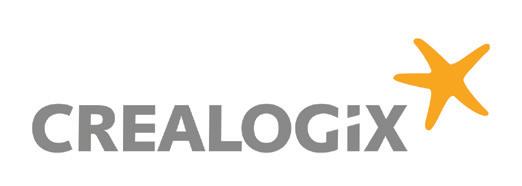
Read more Discover more about CREALOGIX and its solutions on The Wealth Mosaic Tom Bucktrout Senior Sales Manager tom.bucktrout@crealogix.com UK WealthTech Landscape Report 2023 33
The Adviser
The adviser section of this report examines the ways in which the world of the adviser has changed and the technology tools they now need to do their job well. Indeed, a large part of this particular puzzle lies in the best way to equip advisers with the digital tools and capabilities they need to be able to communicate with the client at a time and over a channel of their choosing, and to provide them with the means to make sure that it is a valuable and relevant conversation. Having easily accessible data insights and research, next best action tools, and being able to offer an, overall, more personalised experience, adds greatly to the adviser's capabilities.
UK WealthTech Landscape Report 2023 34
Investing in technology to support client-facing teams
Staying up to date when it comes to meeting client need is key to success in the wealth management world. Increasingly that means investing in technology to ensure a firm’s client advisers are supported and enabled when it comes to giving the best possible client experience possible. Accordingly, Rathbones has been on a strategic transformation journey of its core programme since 2021.
Chris Handley, Strategy and Change Director, comments: “This goes far beyond CRM and CLM - we are not just looking at static data. We are looking for the very best way to serve the client from an end-to-end point of view, from prospecting to onboarding to asset services right through to closures and offboarding.”
“We want our teams to have the tools to provide a whole journey to our clients that is high quality and engaging,” he continues.
Indeed, the logical extension to empowering professionals to do a better job is that they can spend more time with their clients and build an engaging and enduring relationship. In practice, that means shortening the onboarding time, for example, making it less arduous by asking for data once only and then reusing it rather than asking the client to fill in multiple forms.
“It is about being efficient and slick and offering digital engagement through our investor portal. It evolves continually in line with client expectation and
technological innovation so that we always support our teams to do the best job possible,” says Handley.
He explains how the firm started the overhaul in 2021, has now gone past the thinking stage, and is now actively upgrading and making positive changes to its technology offering. There is currently a pilot group that is testing new prospecting capabilities, and it is also trialling new digital capabilities around prospecting, lead management, and developing and testing an initial release that should improve client services. This is the first major step in digitising client journeys, from onboarding through to servicing. This way the firm captures data only once, reducing the administrative burden for clients and colleagues and enabling automation and process efficiencies.
“The idea is that we have much better management of the client relationship because we have supported our people in providing the technology to scaffold and improve certain previously disjointed and clunky processes. Things like better suitability and KYC tooling that make for a less time-consuming and sleek process are attractive to wealth managers and clients alike,” Handley explains.
The firm is also looking to introduce new digital capabilities to make for better client–adviser communications and make general and ongoing improvements to its client portal. “The easier it is for clients and their advisers to deal with each other, then the more productive the relationship,” says Handley.
Chris Handley, Strategy and Change Director at Rathbones, explains how the company’s technological transformation process will support its investment managers and financial planners to be more productive and spend more time with clients.
UK WealthTech Landscape Report 2023 36
He also points to data being heavily involved in the success of the business and emphasises the importance of the technology to enhance processes, as well as making the data that feeds those processes the best that it can be. He says personalisation tooling is a long-term strategy but admits there is a long way to go on that front.
“We have a backlog of new capabilities that we want to get going with - we want to integrate everything as much as we can onto our own operating system, again to get holistic synergies and further growth and efficiency gains. We will also get improved analytics capabilities and better visibility as a whole over our business,” he says.

UK WealthTech Landscape Report 2023 37
The idea is that we have much better management of the client relationship because we have supported our clientfacing teams in providing the technology to scaffold and improve certain previously disjointed and clunky processes. Things like better suitability and KYC tooling that make for a less time-consuming and sleek processes are attractive to wealth professionals and clients alike.
“
Business intelligence
Indeed in the context of Rathbones being a business that is growing via merger and acquisition (M&A), the ability to see the whole business gains new context.
“Ours is a business that grows organically as well as through M&A, and the principle behind that is being able to consolidate and combine systems and bring about efficiency of advice, regulatory reporting, KYC including Consumer Duty, and more.”
“So, in terms of the technology, we need our people to be enabled, but we also want to bring disparate systems together so that we have a holistic wholeof-group view - that way, we can better see upselling opportunities, improve retention and implement cost savings via operational efficiency,” says Handley.
He calls this business intelligence: “As a result of joining together our disparate parts, we get business intelligence. This means that our wealth managers can have targeted conversations with clients, and we can add a level of personalisation into the mix, see patterns when clients leave or are unhappy, and

or see growth in a certain sector. Our professionals gain from that as it gives them actionable points to spring from.”
Of course, half the battle with any transformation project is getting the input and buy-in of the people who are going to use the new technology. To this end, the company has the whole business involved throughout development regarding the selection process, regular communications and updates, and testing. In addition, the pilot group feeds back to the rest of the firm. “We think this approach involves people and does not seek to impose. As a result, we hope people are more interested and engaged from the off,” says Handley.
As with most companies, Covid-19 changed how people think about technological change and innovation, and a lot of the cultural resistance to change simply melted away during and after Covid-19. Now the industry has reached a position where technology is a pull, not a push, and client advisers who see the very real benefits of technology are growing in number.
UK WealthTech Landscape Report 2023 38
Handley comments: “Clients do not leave for technology. They leave if the servicing and human touch is lacking. Investment managers and financial planners want to spend more time with their clients to provide that human touch, and technology is playing a bigger and bigger part in supporting that. It can be a differentiator when attracting new people and retaining existing ones.”
“Our transformation journey attracts other companies and investment professionals and advisers. We have a serious and committed growth agenda from the board, which has been good in terms of support and momentum.”
Ultimately the idea is that the wealth manager can
have important conversations and have more free time to add value to the client relationship. This is not a new concept, but acting on it and striving to get those efficiencies and smooth processes is something that all firms need to do to support their people properly.

“We want to give our professionals the best tools possible to give their clients the very best experience. It is important to remember that this is still a very high-touch personal service offering, so we are looking to augment that with industry-leading capabilities that support both the client experience and the investment manager or financial planner. Technology is the enabler,” concludes Handley.
Chris Handley IT Strategy and Change Director
chris.handley@rathbones.com

“
Indeed, business success means success for client-facing teams, too, and technology has a fundamental role.
Read more Discover more about Rathbones UK WealthTech Landscape Report 2023 39
The future of the adviser
Predictions about Artificial Intelligence (AI) wiping out millions of jobs need not worry advisers too much. Why? Because the need for AI in the first place stems from a shortage of advisers and an acute undersupply of wealth management services. Technologies like AI and Cloud computing, along with business model changes like wealth management-as-a-service (WMaaS), are all, therefore, to be welcomed as the industry looks to democratise access to professional wealth management.
Today, 42 million people have access to a wealth management adviser. This sounds like a large number, but we think that there are 1.8 billion people with US$10,000 or more in investable assets. Indeed, our own estimates also point to US$33 trillion of investable assets are not professionally managed. This is much more than a missed opportunity to help people achieve better wealth management outcomes. With a global pension deficit running into hundreds of trillions of dollars, this unnecessarily risks leaving millions of people unable to live a comfortable retirement.
However, help is on its way. Technology and changes in business models will have a positive impact on advisers and, in turn, help democratise wealth management so that substantially more people have access to professional wealth management.
Is a wealth manager even necessary (anymore)?
There is a shortage of wealth managers. In the US, for example, there are 280,000 advisors compared to over 12 million High-Net-Worth (HNW) families and 35 million mass affluent families. Furthermore, according to Cerulli Associates, 37% of these wealth managers plan to retire in the next 10 years, so it is likely the number will shrink, not expand, over that time.
However, technological changes make it easier for more people to manage their own wealth. Some changes in technology, such as Cloud computing, make it cheaper to provide services. Other services make it possible to provide people with education and interactive services at scale, enabling them to better understand their financial position and options.
Nonetheless, while these technological advancements make it possible for a greater number of people to access and capitalise on basic services, as a person's requirements become more complex, their need for an adviser also grows. This happens when people get wealthier and want to diversify their investments; when people’s lives change, such as when they have children; when external circumstances change. In our recent Future of Finance report, for instance, Carston Kroeber, from bevestor, points out that automated (robo) investments lose their appeal in a rising interest rate environment, as customers expect better returns. While in the same report, Philipp Merkt, from PostFinance, says that at least part of the success of its mass-market investment services is owed to the fact that for investments from CHF5,000, every investor has access to an investment manager.
Can generative AI replace the wealth manager?
There is no question that the world changed in November 2022 with the introduction of ChatGPT. Like the iPhone or the steam engine, it was clear we had seen a step change in technology. One of the most impressive aspects of ChatGPT is how humanlike it seems. Up until now, computers have worked with forms and structured inputs and outputs, but now with the advent of large language models we can communicate with computers in natural language
Nils Frowein, CEO of additiv, believes AI will not replace advisers. Instead, it will create opportunities to democratise the wealth management industry.
UK WealthTech Landscape Report 2023 40
and get close-to-human responses in understanding and accuracy.
So, if computers can mimic an adviser in how they interact with clients at the same time as having access to all the world’s information, why not replace human advisers with AI?
AI will inevitably play a much bigger part in the role of the wealth adviser. If, for example, AI can update the CRM system after every client interaction, rather than the wealth adviser having to do so, then this is a big step forward. Similarly, in prepping the adviser for every meeting, reminding them of all past interactions as well as providing up-to-date and complete analysis of all the available options open to

the client, AI will prove invaluable – as UBS’s Marco Borer said in our recent report, AI will also make clients more knowledgeable.
That said, the role of adviser remains invaluable, but we see the future adviser will now be 'augmented'. In the same way as the robo-adviser did not displace the physical adviser, nor will AI. People will still seek the reassurance of dealing with a human adviser for advice on what remain deeply emotional topics and, for as long as the AI makes errors and hallucinates, banks and wealth management organisations will insist on human involvement. However, those advisers will be augmented by AI, spared mundane tasks, better prepared and more informed to be able to deliver an enhanced service to a broader base of customers.
“ UK WealthTech Landscape Report 2023 41
Advisers will be augmented by AI, spared mundane tasks, better prepared and more informed to be able to deliver an enhanced service to a broader base of customers.
Will the wealth manager be replaced by other types of relationship manager?
At additiv, we strongly believe in the power of WMaaS to expand service provision. By WMaaS, we mean the provision of wealth management services through nonwealth management-specific channels, such as a retailer or insurance company. The advantage of WMaaS is that services are distributed through channels that a customer is already using, so there is no additional financial cost to reach the customer (and the cost of customer acquisition falls), and the context is understood such that relevant services can be proposed at the right time. In short, WMaaS addresses the two major barriers to adoption: cost and education.
However, while wealth management services are increasingly provided through non-wealth management channels, we do not see this having much impact on the need for advisers.

Firstly, most of the embedded wealth management services will be of the basic variety, self-service, and not involving a wealth manager. For instance, we see opportunities such as turning cash rewards into investments or opening a pillar three pension account through a retailer. These will be initial onramps in the world of wealth management, after which people will likely see advised services.
Second, if financial advice is given, it will be given by qualified financial advisers. If embedded wealth services require advice, the consumer will either be re-directed to the underlying provider or, as may be the case, they could be offered advice by a relationship manager qualified to give advice, such as an insurance broker. In the case of the latter, AI will again play a part in augmenting their capabilities and the range of advice they can give at the same time as mitigating the short supply of wealth managers.
“ UK WealthTech Landscape Report 2023 42
In the same way as the robo-adviser did not displace the physical adviser, nor will AI. People will still seek the reassurance of dealing with a human adviser for advice on what remain deeply emotional topics.
The future of the adviser is bionic, augmented, but still human - and not just for the super-rich Ultimately wealth management is a service everyone with investable assets needs in order to make the right financial and commercial decisions to live a comfortable life and retirement. The urgent need to expand the provision of services is underlined by the huge number of people not receiving professional advice on the one hand, and the yawning US$800 trillion pension deficit on the other.
Robo-advice and other forms of self-service wealth management have been helping to address the provision gap, but they are not enough. The issues lie around cost and access, but we should note that robo-advice is not sufficient as people’s needs and circumstances change.
Nils Frowein CEO


With WMaaS, lowering the cost of acquiring customers and putting relevant products in front of customers is likely to have a much more profound impact on meeting customer demand. However, as with robo-advice, WMaaS is likely to cover more basic services and does not obviate the need for human advice.
The role of the adviser is, therefore, still critical to wealth management provision. The only remaining question is whether AI can replace the human. Our view is that this is unlikely, and instead, we foresee the human adviser becoming supercharged – freed from administrative tasks, empowered with more knowledge about the services their firm can provide, and laser-focused on every client’s individual needs.

Read more Discover more about additiv and its solutions on The Wealth Mosaic
sales-consultancy@additiv.com UK WealthTech Landscape Report 2023 43
Goals-based planninga new industry standard
Iwan Schafthuizen, Managing Director Business Development for goals-based planning at Ortec Finance, outlines a roadmap for achieving financial objectives
Goals-based planning is an approach to investing that is rapidly gaining popularity among wealth managers and financial advisers. But having the right technology to facilitate an improved relationship between advisers and clients, acts as a boost to goals-based planning because it makes it easier to expose a client’s financial goals and put concrete plans in place to achieve them.
Goals-based planning also provides a framework for structuring conversations related to assets. Rather than simply stating that the goal is to maximise returns, advisers encourage clients to contemplate a multitude of financial ambitions. Those ambitions must then be prioritised, ranked, and monitored by the adviser and the client with the assistance of the software.
Traditional wealth management often focuses the conversation between adviser and client on which products will get the clients to their wealth goals. However, if the goals are not well defined in the first place then the product chosen may not be a good match. Robust goals-based planning, thus, can help
ensure that the client’s investments are aligned with their values and priorities.
Goals-based planning is an efficient and cost-effective advisory process with clear insights into the trade-off between risk and return and the impact of particular investment decisions.
By contemplating the totality of a client’s investment goals, a holistic picture emerges for the adviser, leading to more meaningful conversations with the client based on an observable deepening engagement and strengthening trust. Goals-based planning provides a framework for more effective communication between the adviser and client.
The adviser can keep the client informed and engaged by ensuring progress meets the set goals and adjusting the plan as needed. Proactive monitoring of goals and alerting when clients are off-track leads to greater transparency, trust, and collaboration between the adviser and the client.
“ UK WealthTech Landscape Report 2023 44
By providing a means to meaningfully monitor performance, advisers can facilitate discussion when their clients are not on track to achieving their goals. Real-world, complex scenario planning is at the core of sophisticated monitoring that yields meaningful results.
Technology as an enabler
Supporting advisers with this financial planning approach comes easier with the right software technology. With a fully integrated cash flow planning tool for a holistic view of the client’s situation, software can address income and investment risk.
In particular, being able to access realistic portfolio projections of institutional quality, based on monthly updated economic scenarios for a full range of asset classes is valuable and can be linked to client financial goals. Linking and integrating this with cash flow planning means the adviser can easily identify possible budget shortfalls or surpluses, supporting efficient decisions.
Consumer Duty - introducing a higher standard of customer protection
These tenets are the basis of the Consumer Duty Act in the United Kingdom. As a new and higher standard of consumer protection in the financial services industry, Consumer Duty requires financial services companies to demonstrate that they are actively prioritising clients’ interests.

There are four outcomes of Consumer Duty in the UK, all of which are supported by goals-based planning. Consumers need to be at the heart of the business, and firms must focus on delivering good outcomes for them. So, this model emphasises the centricity of the consumer in the process by considering all the client’s goals and values.
Secondly, financial services firms must provide products and services designed to meet customers’ needs, offering fair value. With a goals-based planning approach, the selected products will always be aligned to meet the client’s goals rather than the product being the goal.
Thirdly, Consumer Duty demands that the adviser communicates and engages with customers to ensure they can make effective, timely and properly informed decisions. This philosophy is at the core of goals-based planning. By facilitating conversations that expose the client’s goals, advisers and clients are actively and effectively communicating in order to ensure that all parties to that conversation are satisfied with the outcome.
UK WealthTech Landscape Report 2023 45
Finally, Consumer Duty stipulates that outcomes must be monitored and reviewed regularly. Financial services firms and their advisers must, in conjunction with clients, take action to address any risks to good customer outcomes. This is where goals-based planning software is critical. By providing a means to meaningfully monitor performance, advisers can facilitate discussions when their clients are not on track to achieving their goals. Real-world, complex scenario planning is at the core of sophisticated monitoring that yields meaningful results.
A win-win-win
For the client, goals-based planning can help to reduce uncertainty and increase confidence in their financial future. By having a clear plan tailored to their specific goals, the client is more in control of their financial situation due to regular and ongoing monitoring of the plan and more confident in their ability to achieve their goals. This can lead to greater satisfaction and a stronger sense of trust in the adviser’s recommendations. It is much more effective to talk about the client's aspirations instead of the historical performance of an investment fund.
Indeed, this approach to wealth planning focuses on understanding and fulfilling financial requirements to UK
ensure that the client’s diverse goals are met rather than focusing on the singular goal of maximising returns. Thus goals-based planning creates added value for the wealth manager, adviser, and consumer in several ways; in other words: a win-win-win situation.
For the wealth manager and adviser, goals-based planning can increase client retention and loyalty. By understanding the client’s financial goals and tailoring advice to achieve them, the adviser will ultimately build a stronger relationship with the client based on a deep understanding of their objectives. In simple terms, this means asset allocation is done according to the client’s goals rather than the wealth manager’s guidelines.
The result is that the client feels heard because the wealth manager or adviser enters into a conversation with the client about their financial objectives rather than about their portfolio’s performance as a standalone objective - thus upping client satisfaction levels.
This, in turn, can lead to higher revenue through increased assets under management and client referrals. In fact, Morningstar revealed that applying a goals-based planning approach could lead to a 15% rise in the assets under management (AUM) of a bank, wealth manager or pension provider.

WealthTech Landscape Report 2023 46
Banks and wealth managers can deal with the changing regulatory landscape by adopting a proactive and adaptable approach. Some key strategies that they can consider:

• Banks and wealth managers must stay up-to-date with the latest regulatory developments and anticipate how they may impact their business. It is important that they include regulations, for example, suitability, by design. Suitability must be an integral part of the advisory process to give clients the best advice.
• Goals-based planning also helps with a risk-based approach: banks and wealth managers should develop a risk-based approach to compliance, focusing their resources on areas of highest risk.
This approach can help to streamline compliance efforts and ensure that resources are allocated where they are most needed. Not only by managing the risks of the investment portfolio but also the risks of not achieving clients’ personal goals.

A matter of trust
Ultimately, goals-based planning is about trust. It is a process supported by sophisticated tooling that promotes the development of trust between an adviser and a client, and most importantly, it is a process that enables clients to trust their own decisions. By focusing on outcomes rather than the process of accumulating wealth, clients learn to trust their priorities as well as the advice of their partners in wealth management.
Iwan Schafthuizen Managing Director Business Development

Read more Discover more about Ortec Finance and its solutions on The Wealth Mosaic
iwan.schafthuizen@ortec-finance.com
“ UK WealthTech Landscape Report 2023 47
By contemplating the totality of a client’s investment goals, a holistic picture emerges for the adviser, leading to more meaningful conversations with the client based on an observable deepening engagement and strengthening trust.
Bridging gaps in Consumer Duty
How challenging is the industry finding things now that the deadline for Consumer Duty has passed?
The purpose of the UK’s latest regulatory update goes beyond additional reporting and addresses the value created by wealth management and insurance businesses. It aims to set a higher standard of care and deliver better consumer outcomes throughout the customer journey. The overarching principles set out to change how products and services are evaluated, priced, explained and supported, and it should transform the relationships within wealth management value chains.
The degree of Consumer Duty readiness was certainly varied within the industry when the deadline was approaching, and many financial institutions certainly needed to rethink how they would approach their business going forwards.
A KPMG article in a recent PIMFA whitepaper devoted to Consumer Duty highlights that the key to assessing value creation, pricing strategies, and customer support lies in efficiently performing data-driven decisionmaking. Consumer Duty will now prompt the industry to recognise the need for high-performance data management, processing, and analysis. In some cases, that could mean leveraging financial simulation tools to improve consumer understanding of financial products through more visual, interactive, and pedagogical services. In other cases, the shift in regulatory expectations raises the urgency of long-standing issues the industry has failed to address, such as providing quality services to so-called orphan clients.
Onboarding excellence - maximising engagement and meeting Consumer Duty requirements
Today it is hardly possible to imagine a business without a digital presence. Even though the hybrid model seems to be an accepted consensus in the physical versus digital debate within finance, new customers will likely begin their journey with a firm via its website. One of our customers, a large Swedish insurer, discovered that for every Euro of monthly premiums executed in a digital channel, more than €10 would be executed in other channels within six to eight weeks by those customers that used self-service services prior to engaging further. Therefore, digital onboarding is critical for setting expectations, building relationships, and ensuring that customers understand the services on offer and the potential impact on their financial wellbeing.
An engaging onboarding experience that helps clients deepen their understanding of their financial situation, the available investment products, and the impact of financial markets on their portfolios over time is an excellent way to bring a firm closer to meeting Consumer Duty requirements. It is also instrumental to retaining customers - a clear, visual, and interactive view of services can help new investors understand the concept of risk and avoid uninformed financial decisions leading to premature churn and a decrease in life-long financial health. Financial institutions can use advanced financial analytics suites to incorporate goals-based planning components into their onboarding, effectively guiding customers to understand how a firm’s products or services can contribute to their financial objectives.
Fredrik Davéus, CEO of Kidbrooke, talks about onboarding tools to make sure Consumer Duty is more easily adhered to.
UK WealthTech Landscape Report 2023 48
By leveraging financial analytics technology, insurers can provide solutions tailored to a particular portfolio, identify financially unsuitable products, educate customers on financial risk, and offer self-service forecasting and scenario analysis.

“ UK WealthTech Landscape Report 2023 49
Unlocking consistency - elevating the customer journey with simulation technology
A responsible and consistent onboarding process can align customer expectations, serve as an engaging start to the relationship and leverage gamified elements to empower investors of all skill levels, providing unique insights and feedback for service development. However, another critical element of a successful omnichannel approach is consistency. Ensuring that all customer journeys are consistent, logical, and compatible with each other is crucial.
Consistent decision support is paramount to providing a high-quality multi-channel experience throughout a business, as well as fostering an efficient level of customer support. A simulation tool can ideally convert the entire client balance sheet to ensure consistency of all services and enable a holistic approach to a clients’ economy.
Furthermore, these tools can make a tremendous difference in the communication of value and price - by projecting the effects of taxes, fees and demonstrating value over time both visually and interactively. From Consumer Duty and

“ UK WealthTech Landscape Report 2023 50
Consumer Duty regulations necessitate higher standards of care and better outcomes for consumers in the wealth management and insurance industry. Data-driven decision-making, efficient data management, and responsible analysis will be essential.
business model perspective, equipping services with financial simulation technology can propel a firm towards better client outcomes in terms of understanding price, value, product, services, and support simultaneously.
Rethinking support - going beyond IFA services
Consumer Duty has drawn attention to dormant insurers’ customers, who have lost access to their advisers but still have assets with an insurer. They are often referred to as orphan clients. Orphans pose a challenge for financial institutions that strive to comply with Consumer Duty but do not wish to have, or do not have, regulatory permission to provide financial advice.
It is possible to support orphan customers without acting as an adviser. Insurers can provide financial guidance by ensuring the customer data is current and easily updatable and avoiding specific investment product recommendations. By leveraging financial analytics technology, insurers can provide solutions tailored to a particular portfolio, identify financially unsuitable products, educate customers on financial risk, and offer self-service forecasting and scenario analysis. Features like execution filters, automated investment rebalancing, and market-related notifications can enhance customer engagement and decision-making.
From a customer data perspective, solutions for orphan clients can be built considering the data available for a specific customer rather than a theoretical complete set, where age is the most important attribute.
Implementing such solutions promotes compliance and continuous monitoring for dormant or orphaned clients and fosters customer engagement and data sharing, leading to more customer-centric capabilities and improved data management.
Striking the balance - Consumer Duty, orphan clients, and the power of technologyenabled support
Consumer Duty regulations necessitate higher standards of care and better outcomes for consumers in the wealth management and insurance industry. Data-driven decision-making, efficient data management and responsible analysis will be essential.
Effective onboarding, facilitated by advanced financial analytics suites helps set expectations and build relationships while guiding customers towards their financial goals.
Consistency throughout the different customer journeys and using a financial simulation engine ensures a seamless and holistic approach, enabling better communication of value and price, initially and over time.
Supporting orphan clients without acting as advisors requires up-to-date customer data, avoiding specific investment recommendations, as well as focusing on tailored solutions and self-service tools.
Bridging the gaps in Consumer Duty while addressing orphan clients requires careful analysis of the regulatory context, utilising technology-driven solutions that empower customers and enhance regulatory compliance at the same time.
Fredrik Davéus CEO

fredrik.daveus@kidbrooke.com

Read more Discover more about Kidbrooke and its solutions on The Wealth Mosaic UK WealthTech Landscape Report 2023 51
Technology to unlock adviser efficiency and client focus
Look no further than today’s headlines and see the tremendous impact that technology is having on virtually every industry. The wealth management industry is no different - with major shifts over the past few years due to the adoption of new technology tools coupled with increased regulatory oversight and the expansion of Artificial Intelligence (AI).
As such, wealth advisers face industry-wide challenges that can either be helped or hindered by technology, depending on the approach. But to effectively compete and continue to provide exceptional service to their clients, firms need to identify and implement the right technology solutions to help them maximise efficiency while freeing up time to grow their business.
Challenge one - productivity
According to Capgemini, it is estimated that advisers dedicate 67% of their time to non-revenue generating, non-client facing activity. Much of this time is spent gathering data and information, re-keying data, correcting mistakes, and signing in and out of various applications. The same study found that just 9% of adviser time is spent on client interactions. With all this time spent on tedious administrative tasks at the expense of time spent with clients, it is no wonder adviser value is being questioned. Advisers struggle to find the hours in a day to focus on higher-value work and interactions that allow them to dedicate their efforts to achieving their client’s personalised goals. The right technology tools can automate much of the day-to-day; streamlining processes and functions that reduce both time and errors - and do
so at scale. With the right technology tools, advisers can bolster essential productivity and, thus, free up time for value-adding tasks that will grow and retain clients in this increasingly competitive environment.
Challenge two - data overload
Today both advisers and their clients have more access to information than ever before. However, when advisers are using disparate systems and multiple sources of information, they are also then dealing with disparate data. If there is no single source of truth, for advisers or clients, data is hard to find, action, and trust. This is a challenge that is not going to resolve itself, so the question becomes how you can use all this data to your advantage and improve your offering.
The first step in tackling data overload is to use technology to consolidate inputs from various structured and unstructured sources into one centralised location; ensuring security, accuracy, and usability. This is critical not only for adviser productivity but to meet the existential threat posed by a regulator who demands a single source of data as and when they require it.
With data consolidated and actionable, the right technology can then be deployed to help harness the power of this information, uncovering valuable insights and trends that can shape investment strategies. When these data resources are paired with user-friendly digital platforms and targeted content, advisers can drastically improve client engagement driving retention and growth of their accounts.
Michael Basi, Head of Wealth Proposition (EMEA) at InvestCloud, outlines the tools that help with personalisation.
UK WealthTech Landscape Report 2023 52
The right technology tools can automate, customise, and replicate at scale the specific details that allow for true personalisation. With the right data-driven tools, advisers can offer more personalised portfolios tailored to clients’ unique goals and risk tolerance.
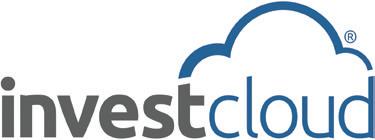

Challenge three - personalisation at scale
It is no surprise that clients today have higher expectations. More advisory options are available to them, more data resources to help educate and empower them, and more technology tools to individualise investment options. To effectively compete in this environment, advisers must be able to go above and beyond the mass available products and truly demonstrate their value and justify their expense. One way to ensure visible value is to offer true personalisation to each client. But with increasing books of business, how can advisers offer meaningful personalisation at scale?
The right technology tools can automate, customise, and replicate at scale the specific details that allow for true personalisation. With the right data-driven tools, advisers can offer more personalised portfolios tailored to clients’ unique goals and risk tolerance and do so for all their clients across the wealth continuum. These technology tools can be harnessed for real-time monitoring and reporting, helping advisers ensure portfolios stay on track and do so over time. Couple these tools with digitised behavioural analysis, and advisers are empowered to help guide each of their clients to remain engaged in their financial journey.
Michael Basi Head of Wealth Proposition (EMEA)

“
Read more Discover more about InvestCloud and its solutions on The Wealth Mosaic
sales@investcloud.com UK WealthTech Landscape Report 2023 53
The Business
The business section looks at the structural and thematic issues that the wealth management community and individual firms alike need to think about and incorporate into their tactics and strategies. In the UK, The Consumer Duty Act has received a lot of attention this year and feeds in well to providing the best possible investment outcome for the client. The adviser will need the tools to deliver on that. AI for personalisation is another theme of note.
With so much focus on the front end, the business section also covers the equally important back end and the all-important architecture that holds everything together. Finally, the degree to which wealth managers trust the capabilities that technology brings and the need for cultural change at the top has also found its way into the conversation.
UK WealthTech Landscape Report 2023 54
Technology - the scaffolding behind M&A scaling
Scale used to be all within the wealth management industry. And acquiring other companies to get that scale has become increasingly popular in recent years, with activity heightened in an industry that is disjointed and probably in need of some consolidation in the first place.
The idea is that the bigger the company, the easier it is to acquire more clients, grow assets under management, invest in tools to provide efficiency, and support an economy of scale, thus growing the business. This still holds true.
But scale is not all. In the post-pandemic period of rapid technological and digital acceleration, the quest is to leverage technology to get the best operating model possible. In doing so the firm enables the adviser to provide an enhanced client experience. Of course, that also lends itself to scale as operational efficiency, combined with client and adviser retention, promotes growth in assets under management (AUM), which supports scale and growth for the company as a whole.
The technology angle
What is true is that it is becoming increasingly critical for companies to deliver key digital and technological capabilities, such as digitally-enabled advisers and client experiences, while also leveraging technology to the end of operational and process efficiency and, thus, cost savings. Firms cannot do everything at once, and yet everything is important!
Hence needing good technology will increasingly form a part of the rationale behind mergers and acquisitions. Firms can acquire such capabilities by merging with others who want the scale that merger brings in order to fund growing demands for technological innovation. This will be a key theme going forward in an already consolidating industry.
The recent Rathbones/Investec deal is a good example of this. The deal will bring scale benefits and the ability to invest in technology; Rathbones has been embarking on a technology transformation journey since 2021, and the scale the deal brings will help to fund that going forward.
At the time of the announcement Fani Titi, Investec Group’s chief executive, said: “The bigger you are, the better you can invest in these capabilities, the more you can fight for talent in the industry, and generally, you are able to operate more efficiently.”
As for scale, the deal will bring together approximately £100 billion of funds under management and administration. The deal is expected to generate cost savings and increased income of £60 million per annum (pre-tax), which will take at least three years to come into effect. Of that, £18 million will be generated from consolidating technology platforms and operations. The group expects net income to increase by £19 million as a result of bringing Investec’s clients and cash onto Rathbones’ platform and banking license.
Consolidation activity in the UK wealth management sector is high. But it is not just scale on the list of wants, technology is high up on the priority list as a key enabler of scale. Alison Ebbage, Editor-in-Chief at TWM investigates.
UK WealthTech Landscape Report 2023 56
This is clearly a deal worth doing and is not the first for Rathbones. It bought financial planning firm Saunderson House in 2021 and also acquired Spiers and Jeffrey, a Scottish wealth management firm, in 2018.
Other notable examples of synergies along these lines include the Royal Bank of Canada (RBC)/ Brewin Dolphin deal last year. RBC bought Brewin Dolphin to access more than 30 offices and assets under management of £59 billion as of December 2021. Brewin now provides RBC with a platform to transform its wealth management business but gains
the ability to provide clients with a broader range of products and services and expand its distribution channels through RBC’s global presence.
And last year, Aviva acquired Succession Wealth Management in a bid to match its own scale and capabilities with the expansion of Succession Wealth’s leading client and planner proposition.
Other deals in the recent past include the acquisition of Charles Stanley by Raymond James. Quilter has also been busy acquiring smaller players such as Lighthouse and Charles Derby.

“ UK WealthTech Landscape Report 2023 57
Technology is fundamental to our success. It is the way that we drive efficiency and support new processes that allow for growth and scale.
Consolidators
It is not just the bigger players that are seeing action. Consolidators are growing in number. In this model, wealth managers are often backed by private equity firms to buy up smaller firms to create a whole that is greater than its component parts.
The market offers rich picking with over 5,000 IFA firms making for a highly fragmented sector. Many of the owners of those IFA firms are nearing the end of their careers and want to sell out or to pass on responsibility. This is amplified by the spiralling cost of compliance and the lack of resources to deal with that, or indeed invest in technology to modernise the business and deal with inefficiency.
Verso Wealth Management is an excellent example of this, backed by Cairngorm Capital private equity.
Miles Joseph, Head of Transformation at Verso Wealth Management, comments: “As a consolidator, we acquire IFA firms and work with them on their advice and investment proposition, operating model and technology, and integrate them into a single firm. The idea is that the value as an integrated business is greater than the sum of acquisition and integration costs. Since many IFA owners are looking to exit, and we have a differentiated proposition that serves their clients well, there is no shortage of pipeline.”
He explains that having a central investment proposition and operating model creates value and
drives efficiency, providing individuals with better tools to do their job and delivering better client outcomes into the bargain.
“The firm has a standard platform, CRM, and investment solution for all, and we are bringing in a digital spine to that as well. Our plan is that each acquired firm will use the same systems, but when it comes to process, for say onboarding, we have looked at how each of the founding firms approached it, and by taking the best bits from each of them, have built a new combined process that delivers best practice to our clients,” Joseph says.
“Efficient and effective client servicing is something that small firms often struggle with. They may not have the resources to deliver, or can lack the know-how to make informed decisions around the improvements that technology could bring,” he continues.

The scale is created by acquiring such firms and bringing together the assets. But that scale is supported by technology which then enables further growth and scale.
“Technology is fundamental to our success. It is the way that we drive efficiency and support new processes that allow for growth and scale. By creating standard processes on the same set of tools, we help everyone do business better and drive better outcomes for our clients,” says Joseph.
UK WealthTech Landscape Report 2023 58
The attraction of the UK wealth management market?
The UK, like many other countries, has a growing ageing population in need of saving for their retirement - thus, there is a need for advice.
According to Aviva, the UK wealth market worth £1.6 trillion in 2020 is expected to grow 7% a year to £2.1 trillion by 2024. By 2039 it says that the demand for advice will grow because a quarter of the population will be over the age of 65.

The retirement and pensions market in the UK is attractive due to the demographics but also due to reforms that date back to 2014
and which ended the requirement for people to use their pension pots to buy an annuity to provide a guaranteed income in retirement.
Instead, people are free to invest their savings as they see fit, which clearly represents an opportunity to provide advice on what to do and execute on that.
In addition, the UK has a complicated tax and savings landscape - thus adding to the opportunity.
The consequence is an industry full of high margins - an attractive pull for M&A, investors, private equity and the like.
Alison Ebbage Editor-In-Chief
alison@thewealthmosaic.com

Read more
UK WealthTech Landscape Report 2023 59
Making sense of wealth management - embracing trust and technology
The wealth management and private banking industry has embraced and undergone significant transformations in recent years. These technological advancements and the changing demands of clients have gone largely hand-in-hand. Change elsewhere in the lives of the end customers has been imported into their expectations for their private banking and wealth management needs.
And within the banking industry, we have often seen change led by the retail banking providers - the use of mass mobile functionality, for example, has been one noticeable change that has become pervasive further up the value chain into wealth management.
Integrating technology in wealth management and private banking presents numerous exciting opportunities. Professionals can leverage automation and digitisation to enhance efficiency, expand their service offerings, and reach a broader audience. Wealth managers can provide clients with personalised experiences, using data-driven insights to tailor solutions to their unique goals and aspirations. Technology enables professionals to collaborate seamlessly across borders, tapping into global expertise and networks to deliver optimal outcomes.
But where does trust come in? The wealth management industry is obviously no stranger to the concept of trust. Latterly, with the advent of technology, the industry has needed to move to a model where integrating technology and human expertise can lead to exciting opportunities for professionals and clients
alike. All too frequently, we see trust abused, which is the reminder that highlights what a valuable currency it represents.
The trust can reside in a brand and is delivered by the ability to instil trust from clients into individuals, their competence, and, beyond the firm, their access to networks of other professionals.
Doveryai, no proveryai or “trust, but verify”, the Russian proverb made famous by former US President Ronald Reagan, means that a responsible person always verifies everything before committing to a common business with anyone, even if the other party seems completely trustworthy.
Security
Trust has long been a valuable adage, but verify - it is essential for today’s wealthy individuals and families. Indeed, while integrated systems and platforms have revolutionised the possibilities for the industry, they have brought new challenges and risks in the digital sphere into play. For example, remote consulting for wealthy individuals and families is now a core proposition for leading wealth management firms. But this brings about authentication and security challenges. Thus, a central tenet underpins success: trust and whether the client trusts the bank to protect their data and affairs.
Applying a 'trust but verify' approach to information security and risk management is essential with today’s
Ian Ewart underscores the importance of trust with three compelling examples - cyber security, the family office environment, and embracing alternative investment classes
UK WealthTech Landscape Report 2023 60
speed of business, which is constantly challenged by an ever-evolving and advancing threat and vulnerability landscape. We often trust that security controls and capabilities have been implemented comprehensively and operate as intended. Unfortunately, for many, that is not always the case. As families and businesses evolve, they realise that their environments are not nearly as protected as previously thought. Audits, risk assessments, and security reviews uncover deficiencies in their security. In the most unfortunate of circumstances, families may not know how vulnerable they are until they experience a material security incident from which they believe they should have been protected.
Trust has always been at the core of wealth management and private banking. High-Net-Worth Individuals (HNWIs) and families seek out professionals they can rely on to safeguard their assets and provide strategic guidance. In an era of technological advancements, trust becomes even more critical. Clients need assurance that their financial wellbeing is in safe hands and that their interests are prioritised above all else.
The commoditisation of family office services

In this second example, we see that the rise of integrated systems and platforms has facilitated the commoditisation of family office-type services, making them more accessible to individuals with lower levels of wealth. This democratisation allows a broader range of clients to benefit from the expertise typically reserved for Ultra-High-Net-Worth Individuals (UHNWIs). While this shift presents challenges, it also creates opportunities for wealth managers and private bankers to expand their reach and deliver personalised services to a more diverse clientele.
In a recent study - Manifesto Growth Architects cite four key pillars of trust:
1. Delivering on the brand experience.
2. Bring digital-first, but human touch.
3. Using data to be close to your customers’ needs.
4. Engaging in two-way conversations.
Trust has always been at the core of wealth management and private banking. HNWIs and families seek out professionals they can rely on to safeguard their assets and provide strategic guidance. In an era of technological advancements, trust becomes even more critical.
“
UK WealthTech Landscape Report 2023 61
Clearly, at the family office and family adviser level, there is a premium on personal relationships and the quality of firm - which is often equated to the brand.

Some key factors to consider
Expertise and services; assess the expertise and services the family office offers. Look for a team with a strong background in wealth management, investment strategies, tax planning, estate planning, and other areas relevant to your specific needs. Consider whether the family office has experience working with families of a similar size and complexity.
Reputation and track record; research the family office's reputation and track record. Seek referrals and testimonials from existing clients or industry professionals. Review performance history, including investment returns, risk management practices, and client satisfaction.
Client-centric approach; consider the family office's approach to client service. Look for a client-centric culture where your unique needs and goals are prioritised. Assess its ability to provide personalised attention, tailored advice, and proactive communication.
Independence and objectivity: determine the family office’s independence and objectivity. Ensure it is not influenced by conflicts of interest that may compromise its ability to act in your best interest. Look for transparent fee structures and a fiduciary duty to prioritise financial wellbeing.
Network and connections; evaluate the family office's network and connections. A strong network of professionals, including legal advisers, tax specialists, and investment managers, can provide valuable resources and expertise to support your financial affairs.
Technology and reporting capabilities; assess the family office’s technology infrastructure and reporting capabilities. Look for modern systems that provide secure access to real-time data, performance reports, and customised financial statements. Efficient and transparent reporting helps you stay informed and make informed decisions.
Cultural fit and communication; consider the cultural fit between the family and the family office. Open and transparent communication is essential for a successful relationship. Ensure the family office
UK WealthTech Landscape Report 2023 62
understands and respects your family’s values, goals, and communication preferences.
Scalability and flexibility; consider the family office’s ability to scale and adapt to your changing needs over time. As your family and financial complexity evolve, ensure that the family office can accommodate growth and provide flexible solutions.
Risk management and compliance: evaluate the family office’s risk management and compliance practices. Look for robust risk assessment procedures, rigorous compliance measures, and adherence to regulatory standards. This ensures that your family's wealth is protected and managed within the boundaries of legal and ethical frameworks.
Cost and value; consider the cost and value provided by the family office. Assess the fee structure, including management fees and any additional charges. Balance the cost against the quality of services, expertise, and value-added benefits they bring to your family’s financial affairs.
By carefully evaluating these criteria, you can select a family office that meets your requirements and helps you achieve your long-term financial goals.
Adapting to changing investment landscape
Finally, the choice and selection of private investments have also evolved with the changing investment landscape - but can investors trust their advisers to deliver the right mix? Capital markets, venture capital (VC), and private equity (PE) funding have become more prevalent, providing alternative investment opportunities. Wealth managers must navigate this dynamic environment, staying
well-informed about emerging trends and identifying lucrative investment prospects for their clients. Technology plays a vital role in gathering data, analysing market trends, and supporting informed decision-making.
Making sense of it all encapsulates the core challenge faced by wealth management and private banking professionals. In a rapidly changing landscape, they must deeply understand complex financial concepts and provide best-in-class advice to clients. Combining human expertise and technology is key to successfully navigating this landscape. Technology empowers professionals to streamline operations, enhance data analysis, and provide clients with real-time insights. However, the human touch remains indispensable in building trusted relationships and interpreting nuanced client needs.
The future of wealth management and private banking lies in embracing the synergies between trust and technology. As the industry continues to evolve, the ability to instil trust in clients and provide expert guidance will remain paramount.

Professionals must navigate the changing investment landscape, capitalise on digitalisation and modernisation, and cultivate an understanding of clients’ evolving needs. By striking the right balance between human expertise and technological innovation, wealth management and private banking professionals can seize opportunities, creating a positive and exciting future for themselves and their clients.
It is this marriage of the enduring currency of trust and the deployment of technology at its service that will be a hallmark of successful firms.
Advisor - Commercial Development
Read more Discover
ian.ewart@acin.com UK WealthTech Landscape Report 2023 63
more about Ian Ewart and his industry experience Ian Max Ewart Board
Parts of the wholeNiche service providers form an important part of the ecosystem
The wealth management sector is evolving rapidly, thanks in part due to the improvements afforded by technology and the threat of being left behind in the quest to smooth and optimise processes, harness data and provide a superior client experience. No surprise then, that changes are as much at the individual firm level as they are at the industry level. Indeed, one of the most visible expressions of this change is in the development of an ecosystem approach.
In recent years we have also seen this concept developing within the banking industry, with some participants offering a subset of products and services, and relying on partner firms within an ecosystem to provide others requested by clients. Challenger banks and FinTechs in particular, have sprung up, offering a small selection of the services provided by full-service or incumbent banks.
In an ecosystem world, it is no surprise that the definition of what constitutes a wealth manager is subject to change as well. A report by McKinsey said that although traditional banks make up half of the market, the other half is now made up of specialists and FinTechs - all of whom contribute to the overall ecosystem by providing a part of what a full-service bank would offer, but by focusing on a smaller set of products and services and aim on doing them exceptionally well.
Wealth managers too, can form a part of someone else’s ecosystem by embedding their services into other propositions. In this model, potential wealth management clients come across a wealth management solution at their point of need, say when they do a will, arrange a mortgage, or anything else that might potentially lead to a need for a wealth
Sean Kiernan, CEO at Greengage, explains how offering a specialist service works within the wealth management community.
“ UK WealthTech Landscape Report 2023 64
We are literally providing the means to manage certain aspects of wealth, but we are not a traditional wealth manager. Instead, we form one component of the wealth management industry.
manager. The concept is the same as car finance being available in the car showroom, which can be provided by a lending firm external to the car manufacturer.
Within the ecosystem, there is no need to take the whole service or all of its component parts. Within wealth management itself, we can now see some wealth managers deciding against being a full-service offering and instead offering specialist services, providing a niche part of the whole.

Greengage is one of such offerings. Describing itself as a sort of 'Coutts crossed with Revolut' hybrid, the offering takes the best characteristics of each: personal service combined with technological capabilities and ease of use. It then applies this to offering specialist services to wealthy clients.
Instead of offering a full-service wealth management proposition, the firm has instead offered only the bits where it sees a current gap in the market. The firm began life as a predominantly corporate payments
and lending offering for digital firms, trusts and fiduciary services but also counts family offices, HighNet-Worth Individuals (HNWI) with over £5 million, charities, and foundations as its clients.
“We decided to offer a model where we are an entity that does a particular job for a group of wealthy clients. We are not a classic wealth management business; we look at family offices, HNWs, and fiduciary structures, but our services are more geared to the transactional. We offer our clients payments, cards, and a lending platform - all moderated with a dedicated relationship manager,” says Sean Kiernan, CEO at Greengage.
The firm offers digital assets lending introductions, which has a particular appeal to a certain market segment.
Sean comments: “For our customers that use crypto we see that on and off ramping is challenging, and we solve that by providing payments accounts in fiat currencies (e.g. GBP, EUR, etc.).”
UK WealthTech Landscape Report 2023 65
Wealth managers too, can form a part of someone else’s ecosystem by embedding their services into other propositions. The concept is the same as car finance being available in the car showroom, which can be provided by a lending firm external to the car manufacturer.

“ UK WealthTech Landscape Report 2023 66
He says that firms like Greengage are moving the needle when it comes to defining wealth management. “We are literally providing the means to manage certain aspects of wealth, but we are not a traditional wealth manager. Instead, we form one component of the wealth management industry.”

“We felt that the transactional element of private banking was missing from the traditional wealth management asset management proposition and that there was an opportunity to provide that, with the human touch, at an appropriate price point. With that in mind, we looked carefully at the client base, which today is 50% crypto investors. Most of them are also HNWI and also want family office services and trust structures. We thought these were all areas that are underserved by the traditional wealth management model,” says Kiernan.
Thus the proposition is to facilitate digital payments but with a compelling technology and service offering, which is also resonating with a wider client base.
“Many of our customers want to make payments that cross over existing threshold limits, such as buying into real estate or making a sizable investment in a company. Using a normal bank would trigger all sorts of processes that could be time-consuming hoops to jump through. But a conversation with a relationship manager here and it is all done, using the most efficient technology possible. We also have a wider private banking ecosystem available, where we can access best-of-class providers to add on to our core offering, through a panel of providers approach,” he says.
“Indeed, the whole firm is built on a new technology stack so onboarding for our core e-money account services can take as little as two weeks. For risk
compliance and CRM, the firm uses Salesforce, and then there are APIs for everything else - again feeding back into the ecosystem concept.
“Our app is sleek and smooth, offering the functionality that our client base wants and needs, and is easy to use with good user experience," says Kiernan.
He says that technology can play an immense role when it comes to cost reduction and removing friction. “It does not matter that our clients are using us for a specific purpose - they expect the technology to be of high standard, and we have invested heavily in the right infrastructure to provide what clients want and need to go about their business painlessly and seamlessly. The hidden costs of latency, friction, and pain points only really become apparent once you have ‘enjoyed’ the experience of not having it!”
He explains that clients, as standard within the wealth management sector, expect to have all the bells and whistles available to them. “Like with many things in life, you only really hear about it when things go wrong - our clients want an elegant and seamless interface, and they value the service that goes around that. However, there is still a demand for the human being to be available and there to be a means to access that and to build a relationship - we provide that too.”
Going forwards, Kiernan is open to embedding the service into other wealth management firms that provide a wider asset management offering (not something that Greengage provides) - to offer a niche and specialist transactional service as a compliment to an overall proposition. “This is the way that the market is moving, but instead of being all things to everyone, we think it better to have mastery over one element and extend our reach via an ecosystem approach,” he says.
Sean Kiernan Founder and CEO info@greengage.co

Read more Discover more about Greengage and its solutions on The Wealth Mosaic UK WealthTech Landscape Report 2023 67
The AI advantage - futureproofing your investment management firm
The investment management industry is undergoing a significant transformation, fueled by the rapid rise of Artificial Intelligence (AI) and automation. AI applications, such as ChatGPT, Perplexity AI, or Bing AI, have revolutionised the expectations for client interactions and portfolio management. However, the increasing adoption of AI has also raised major concerns about job displacement, ethics, and data security. In particular, the recent EU AI Act impacts firms using Generative AI tools through stricter regulations, requiring developers to undergo reviews before commercial release and potentially slowing down their deployment. The Act also upholds bans on real-time biometric identification and ‘social scoring’ systems, prompting firms to reconsider their AI strategies for these purposes.
But despite valid concerns about the use of AI, investment management firms can harness the power of AI strategically to future-proof their businesses while addressing these challenges. To effectively integrate AI into their operations, investment management firms must develop a well-designed AI strategy that aligns with long-term goals and values while harnessing three key components: data, talent, and tools.
Strategic success
Data serves as the foundation for AI-driven decision- making. Investment firms need to leverage various data sources internally, externally, and in aggregate to fully capitalise on AI's potential. A wealth management firm can use internal data
to streamline client servicing processes, set clear service level agreements (SLAs) for timely responses to client queries, and efficiently allocate resources across teams. AI-driven analytics can identify areas for improvement, ensuring high-quality service delivery. For example, AI-based tools can provide comprehensive client profiles, including preferences, risk tolerance, and financial goals, enabling advisers to tailor investment strategies effectively and enhance the overall client experience. Investment firms can also tap into external data sources to gain a comprehensive view of their clients' financial positions. Accessing held-away assets, illiquid investments, and the overall wealth picture of clients allows firms to offer personalised investment strategies. For instance, Ultra-High-Net-Worth (UHNW) advisory firms might integrate AI-driven data aggregation tools to consolidate clients' diverse assets and identify opportunities for wealth growth.
And by aggregating both internal and external data, investment firms can make better-informed decisions across the board. AI-powered analytics can analyse market trends, client preferences, and risk profiles, optimising investment recommendations and achieving superior portfolio performance.
A comprehensive AI-strategy includes a roadmap for leveraging all types of data as currency.
Talent
Second, the adoption of AI will also reshape the talent landscape within investment management firms. AI
Grayson Greer, Managing Director - Global, at First Rate, talks about data, talent, and tools to drive AI adoption.
UK WealthTech Landscape Report 2023 68
will make current talent more efficient by enhancing the productivity of existing talent by automating routine tasks, allowing employees to focus on highervalue activities. Wealth management firms could for example implement AI-driven portfolio rebalancing tools, reducing the time spent on manual adjustments and enabling advisers to build stronger client relationships. And as AI becomes a core component of investment management, new roles will emerge, requiring expertise in AI integration, data science, and Machine Learning (ML). Investment firms may need to hire data scientists, prompt engineers, and
other technicians to develop AI models that forecast market trends and optimise portfolio strategies. At the same time, unfortunately, some traditional roles may become obsolete with the advent of AI. For instance, brokerage firms that extensively adopt automated trading algorithms might no longer require as many human traders. The advent of AI tools could also redefine financial education for the better, both for employees and clients. Firms should anticipate roles dedicated to AI integration and management, highlighting the emphasis on continual education and training.

“ UK WealthTech Landscape Report 2023 69
AI adoption in investment management is not about adopting AI for the sake of it; it is about using AI strategically to drive business success and better serve clients.
Tools
While harnessing AI capabilities is essential, deciding whether to build, buy, or partner with external experts can accelerate progress and provide specialised solutions. Firms should be aware that advanced AI models, especially those focusing on generative tasks and deep learning, are on the horizon, and they promise significant advantages in terms of market intelligence and competitive advantage.
Firms might consider internally building their AI solutions if the goal is complete control over the development process. For example, family offices might build an in-house robo-adviser platform, catering specifically to their client base's unique needs.

Another approach is to acquire an existing AI-focused firm or capabilities and run it in-house. For instance,
a wealth management company may acquire a roboadvisory startup, integrating its technology and expertise into its own operations.
Working with best-of-breed AI providers can also offer scalable and tailored solutions for firms to implement. In this case, a large asset manager could partner with leading AI-driven analytics firms to enhance their trading strategies and risk management capabilities without large overhead internally.
The optimal approach depends on individual business objectives but we have witnessed a mix in the market. Firms can take advantage of all three strategies by integrating with what already exists, taking advantage of the wave of innovation by others while also investing in in-house capabilities that differentiate your firm supporting your unique value proposition.
UK WealthTech Landscape Report 2023 70
Adoption
• Wealth management firms can use AI to analyse extensive client data, including historical investment performance, financial goals, and risk appetite, to create personalised and optimal investment portfolios for each client.
• Pension funds can leverage AI to analyse vast amounts of financial market data, economic indicators, and demographic trends to make datadriven investment decisions, ensuring the longterm financial security of their beneficiaries.
• Family offices can also deploy AI-powered reporting platforms to augment the capabilities of their investment teams, empowering them to analyse complex investment scenarios more efficiently and provide bespoke customisation at scale.
• Brokerage firms can use AI-powered algorithms to automate routine trading tasks, enabling their traders to focus on high-value activities such as market research and risk management.
• Independent Financial Advisers (IFAs) can focus solely on relationship management and growing their assets under management by outsourcing to a provider who provides cutting-edge technology and data analytics capabilities, gaining a competitive edge in the market.
Future-proofing
In conclusion, the rise of AI presents both challenges and opportunities for investment management firms. By defining a well-rounded AI strategy, and investing in data, talent, and strategic partnerships, investment management firms can harness AI's potential to streamline operations, enhance client experiences, and drive business growth. Responsible AI adoption will not only future-proof these firms but also enable them to stay competitive in the ever-evolving landscape of the investment management industry.
Grayson Greer Managing Director, Global ggreer@firstrate.com


“ Read more Discover more about First Rate and its solutions on The Wealth Mosaic
The adoption of AI will reshape the talent landscape within investment management firms. AI will make current talent more efficient by enhancing the productivity of existing talent by automating routine tasks, allowing employees to focus on higher-value activities.
UK WealthTech Landscape Report 2023 71
Wealth platform wins - how to optimise your back end
Sameera
Technological change in wealth management has taken a dramatic turn over the past few years, with solutions and apps flooding the market. It finally feels like digital transformation in wealth management has arrived, although it is by no means yesterday’s news!

Indeed, from automating basic processes to using data to offer personalised solutions or quickly adapting to changing market conditions - digital transformation needs to be an ongoing process.
But as revolutionary technologies like AI break through we see front-end technology evolving at breakneck speed. But that has meant that back-end infrastructure is starting to get left behind.
So, how can you bake in an ongoing, future-ready digital transformation process into your back-end technology stack?
Udayanga, Head of Engineering at WealthOS, looks at the optimal features of back end architecture.
UK WealthTech Landscape Report 2023 72
Five things to consider:
1. Is it scalable, flexible, and agile?
Modular, microservices-based, Cloud-native architecture
A back-end system should allow for the deployment of high-priority feature(s) quickly and cost-efficiently. For example, if the account funding flow needs adjusting it should be done automatically. The optimal back end should have the agility and flexibility to go live fast with this feature in isolation.
The ideal back end should also allow for the addition of extra features such as investor onboarding or tax-wrapped products, at a time that suits the user. Having a modular microservices-based architecture is key to supporting an incremental build approach.
With the global democratisation of wealth, providers face pressure to scale up. To do this Cloud-native architecture is the unparalleled option available. It leverages the elasticity within cloud computing, allowing seamless scaling of infrastructure and resources to expand reach. By using on-demand computing power and storage, wealth management platforms can accommodate growing volumes of data, increasing client bases, and complex computational tasks efficiently at significantly lower operational costs than on-premise deployments.
And growth means a constant need to build and deploy new features, which requires maintaining additional test and staging environments. Without buying dedicated servers and spending upfront, using Cloud-native Infrastructure-as-a-Code (IaC) within a back-end system facilitates the provisioning, configuration, deployment, and decommissioning of environments within minutes. You only pay for what you use. Automating this process eliminates manual tasks, reduces human errors, and ensures consistency across multiple environments.
2. Is it safe and secure? Enhanced security and data protection
When dealing with highly sensitive personal information, security and data protection are paramount to building trust with clients. To be the ‘Fort Knox’ of client data, a future-ready back end
should offer robust security measures like multi-factor authentication, encryption, secure data storage, and regular security audits. These also need to comply with GDPR and financial industry standards.
While significant resources may have been invested in securing core enterprise platforms from external threats, what happens with internal threats? Indeed, any firm will have various internal users (business operators, system operators, database administrators, etc.) who can access sensitive, personally identifiable information (PII) data and confidential financial information. That is why any architecture should be enriched with advanced mechanisms like data anonymisation and tamper-proofing.
Data anonymisation removes or obfuscates PII from datasets, which protects client identities while allowing valuable insights to be extracted from the data. Anonymisation also makes sure that in the event of a security breach, the compromised data is useless to all unauthorised individuals.
Tamper-proofing ensures the integrity and immutability of data by using mechanisms that prevent unauthorised modification or data tampering. This also strengthens the auditability and compliance aspects of wealth management operations.
3. Is it reliable?
Automated self-testing
With digital services becoming a part of everyday life, users demand high availability and reliability, with little tolerance for interruptions, especially during peak events. Every tax year, when traffic and trading volumes peak amidst the flurry of customers maximising their annual tax-advantaged allowances, providers that miss the mark lose out.
Traditionally, this level of reliability involved significant investments in infrastructure and monitoring tools upfront - including provisioning resources to handle two and a half times normal activity. However, an optimised wealth platform ensures reliability at a lower cost with continuous monitoring and self-testing.
Continuous self-testing involves implementing automated monitoring and diagnostic tools within the back end.
UK WealthTech Landscape Report 2023 73
These tools proactively assess the health and performance of a platform, ensuring that any potential faults or issues are detected as early as possible. Any deviation or degradation from expected levels can be identified immediately, triggering automated alerts and notifications. Once detected, a well-designed platform can take prompt and proactive action.
For example, if loads reduce database performance, the platform should automatically scale the database to meet the higher resource demands. Once demand reduces, the platform can release the additional resources. This automated, real-time allocation of
resources is a powerful mechanism to keep the system responsive and reliable during peak events. Self-testing and feedback also let back-end developers access real-life usage data and enhance the platform build process. This iterative approach lets wealth platforms stay ahead of evolving customer expectations and industry demands. For example, if a particular module always takes longer to serve during peak activity, by using continuous monitoring and diagnostic mechanisms, those abnormalities will be fed into the platform build process and improvements can be deployed for better performance and reliability.

“ UK WealthTech Landscape Report 2023 74
By leveraging Cloud-native computing, robust security protocols and APIs, wealth management platforms can accommodate growing volumes of data, increasing client bases, and complex computational tasks efficiently at significantly lower operational costs than on-premise deployments.
4. Is it aligned with your expansion plans?
Regional intelligence layer
As a firm expands its wealth management offering to different geographies, the last thing you want is to have to set up different core back end systems in each place. The optimal wealth platform should traverse borders, with geographical regulatory settings abstracted from core microservices.
To support this, a modern back-end system should be designed with regional intelligence applied as a cross-cutting layer across the platform, allowing for region-specific modifications (eg, investor rules, taxwrapper rules, regulatory requirements, etc.) without affecting the platform's core. This abstraction enables the back end to swiftly adapt to evolving regulatory and compliance landscapes as well as meet specific local requirements.
This flexibility helps to meet the needs and regulatory frameworks of each market while negating the development and maintenance costs of deploying back ends at multiple locations.
Technology and operations staff can benefit from shared learnings and synergies of using the same platform globally, improving the ongoing operational experience. Therefore, the ideal core wealth platform reduces operational complexity, increases speed to market, and reduces firm-wide operational costs and risks.

5. Is it playing nice with others?
Seamless low code/no code integrations
With more niche applications being needed to help deliver next-generation wealth propositions,
third-party service providers are needed to integrate with your back-end platform or face an unwieldy web of disparate technologies. However, integrations can be time-consuming and costly - if a platform does not have the required connectivity and architecture.
By adopting open APIs and embracing modular architecture, the optimal back-end platform can easily integrate with a range of external services such as KYC/AML providers, banking APIs, custodians, risk management tools, financial data providers, payment gateways, investment analytics tools, and more. These integrations allow for leveraging the expertise and capabilities of thirdparty specialists, expanding your offering and delivering comprehensive solutions.
These integrations also serve to compose a customised, interconnected WealthTech ecosystem with just a few clicks - with a back-end platform as its beating heart.
Furthermore, back-end systems with pre-built thirdparty integrations can accelerate the development and deployment of new features. This helps to stay ahead of the competition, adapt swiftly to changing customer demands, and provide innovative offerings in a timely manner.
Ultimately, a highly robust and functional back end is the engine room of digital wealth management. Without it, the front end cannot function optimally and the differentiated service, upon which retention relies, cannot be achieved. Therefore, it is good business sense to invest in getting back end fundamentals right and ensure their continued successful operability.

Read more Discover more about Wealth OS and its solutions on The Wealth Mosaic Sameera Udayangana Head of Engineering sameera@wealthos.cloud UK WealthTech Landscape Report 2023 75
Consumer Dutyinitial impressions
Tara Swaminathan, Solicitor, and Charlotte Gregory, Partner at Capital Law, consider the newly implemented Consumer Duty and its likely
The Consumer Duty Act came into force on 31st July 2023 for all open products and services in the UK. Most firms will already have implemented Consumer Duty by now and will be discovering how it is changing their processes in practice. We anticipate many stakeholders will be well versed in those changes, particularly those who harness technology to deliver their offering.
Essentially, the FCA has introduced a new principle: Principle 12; Consumer Duty is the requirement of firms to 'deliver good outcomes for retail customers'.
Consumer Duty forms part of the FCA’s strategy to raise consumer protection standards. In light of the complexity of services being provided and cost of living pressures, the FCA’s view is that it is even more important that firms understand customer needs and how to support them.
The embedding of 'good outcomes for retail customers' is achieved by understanding the other elements that underpin Consumer Duty; the crosscutting rules and the outcomes.
Cross-cutting rules of Consumer Duty
Firms must:
1. Act in good faith.
2. Avoid causing foreseeable harm to retail customers.
3. Enable and support retail customers to pursue their financial objectives.
Four outcomes of Consumer Duty
The four outcomes that the FCA expects to see as part of a firm’s implementation of the Duty are:
1. Product and service
This is about product and service design, ensuring they meet the needs, characteristics, and objectives of a specific target market.
Ask yourself:
• Does the product design meet the needs of the target market?
• Is the distribution strategy appropriate to meet those needs?
• Are regular reviews being carried out to ensure that this outcome is met on an ongoing basis?
2. Price and value
This outcome is focussed on ensuring that products and services provide fair value, with a reasonable relationship between the price that consumers pay and the benefit they receive.
Ask yourself:
• Is the customer receiving fair value from a product/ service versus the benefits?
• Does a fair value assessment occur?
• Have benefits, limitations, fees, and charges of products/services over the lifetime of a customer relationship been considered?
impact on the wealth management sector.
UK WealthTech Landscape Report 2023 76
3. Consumer understanding
This centres on communication; typically through verbal or written communication, such as marketing materials or customer-facing terms and conditions.
Ask yourself:
• Have you provided sufficient information to a customer at the right time, in an understandable way, throughout the customer journey?
• Does the communication equip consumers to make effective, timely and properly informed decisions about a product or service?
4. Consumer support
This outcome is focussed on the support being provided to consumers; to ensure your business is meeting your consumers' needs, throughout the lifecycle of a product or service.
Ask yourself:
• Have you provided customer support at all relevant times (pre- and post-sale/service)?
• Have the financial objectives been understood?
• Is customer support efficient and easy to navigate?
• How are vulnerable customers supported?
How do you know if Consumer Duty applies to your firm?

In essence, Consumer Duty will apply to all firms who distribute or manufacture products and/or services to retail customers - establishing which customers fall into this definition for Principle 12 purposes is a process in itself. Even if your end-customer is not a retail client, that does not automatically disapply Consumer Duty to your products/services. It is also important to be aware that it is impossible to take a blanket approach, as Consumer Duty may apply to some products and services in your distribution channels, but not others.
Unless the answer is obvious, knowing whether Consumer Duty applies to you or not will require careful consideration, mainly in understanding how your distribution chain works from start to finish, where your firm sits in the chain and what it does, in the context of the services being provided to retail customers at the end of that chain. If you are deemed to have a ‘material influence’ over the end-user retail customer’s outcomes, then you are likely to be caught by Consumer Duty.
UK WealthTech Landscape Report 2023 77
How does this affect the wealth management sector?
Whilst traditionally the sector developed by helping the affluent grow and preserve their wealth, there has been - albeit slowly over a number of years - a clear shift away from this traditional approach to wealth management.
Several factors have contributed to this: the costof-living crisis; the rise of wealth in younger (and older) generations; the significant increase in the use of innovative and disruptive technology making products/services more accessible; and social media and outreach of investment platforms.

All of these factors contribute to the way that the general population now think about, and value, money.
This shift from traditional origins to a more consumerfocussed model places an oversight on the wealth sector that will be new for some firms, particularly when compared with well-established consumer-driven markets, such as insurance and credit. We anticipate that certain products and services being offered by managers or platforms will receive increased oversight from the FCA in light of Consumer Duty.
However, wealth managers are already adept at client categorisation requirements and changes to compensation rules, so will be in an advantageous position when compared with some other sectors in embedding the correct processes.
On client categorisation, the FCA’s 'Dear CEO' letter to asset managers (and others) reminded firms
“ UK WealthTech Landscape Report 2023 78
Consumer Duty will apply to all firms who distribute or manufacture products and/or services to retail customers - establishing which customers fall into this definition for Principle 12 purposes is a process in itself.
that High-Net-Worth clients are retail investors and, therefore, retail customers for purposes of Consumer Duty. Where a firm has incorrectly classified a retail investor as a professional investor, this is not an issue, as long as a rectification exercise has been taken out, which includes, the re-categorisation of the investor (from professional to retail) and the appropriate level of consumer protections being applied (whether by Consumer Duty or relevant risk warnings for retail investors).
It has been reported that St James’s Place has recently offered a reduction on fees for loyalty. The reduction followed St James's Place's assessment of Consumer Duty and how it applied to a particular product. This type of assessment typifies what the FCA will expect to see carried out in the wealth management sector. Not to say that a quick workaround - for firms aiming to demonstrate compliance with the Consumer Duty - is to cut fees. The FCA emphasises that firms should take a proportional approach, therefore a reduction of fees is not designed to inhibit natural business growth, rather firms should ask what is the fair value for a particular product, i.e. what is a reasonable price for consumers to pay, and is this appropriate with respect to the benefit they are receiving when taking out a particular investment product/service?
What is the impact so far?
Given we are in the early stages of Consumer Duty being in force, the FCA’s approach remains to be seen. We expect to see a more robust, proactive approach being taken by the regulator, as months go by.
The FCA plans to conduct a review across firms in the wealth sector and on a range of models, from
authorised fund managers to investment managers, focusing on the second outcome; price and value.
Given the wealth of literature, support, and guidance the FCA and other independent trading bodies have posted in this area, there will be an expectation that firms are ‘living and breathing’ Consumer Duty, especially when it comes to product design and fair value. Wealth management firms are on the FCA’s radar, given the nature and risk levels associated with products.
Firms that responsibly promote services to retail customers, by helping customers invest wisely and arming them with the relevant knowledge ahead of making any investment decisions, will fare well in terms of the implementation of the Consumer Duty principle, as those businesses capture the essence of good outcomes for retail customers.
If Consumer Duty is relevant to your organisation, you will hopefully already have your implementation plan in place. Embedding Consumer Duty into your systems, processes and controls should not be a static process but one that continually evolves, following a system of regular and proactive reviews, improving on processes, where appropriate.
We anticipate the FCA’s review of firms’ implementation of Consumer Duty will focus heavily on data. The FCA expects firms to 'assess, test, understand and evidence' the Duty. Whilst the FCA has said it will be pragmatic with firms in improving their use of data and technology to evidence compliance, we expect its approach in compliance with Consumer Duty itself to be robust. WealthTech firms by their nature, embedding technology into their business model will therefore be in an excellent position to demonstrate delivery of good consumer outcomes.
Tara Swaminathan Solicitor

 Charlotte Gregory Partner
Charlotte Gregory Partner

Read more Discover more about Capital Law
t.swaminathan@capitallaw.co.uk
c.gregory@capitallaw.co.uk UK WealthTech Landscape Report 2023 79
UK Solution Provider Directory
The UK Solution Provider Directory has been created to give any type of UK-based wealth management firm easy access to the technology and related solution-provider marketplace in one free to access resource.
Within our definition of wealth management, we include banks (domestic or international), private client investment managers, family offices, financial advisers, digital wealth managers, investment platforms, insurance-based, trust and fiduciary, and other forms of wealth managers that administer, advise on, manage, or support private wealth at any level.
Each solution provider included in this report is relevant to the technology or related business needs of the UK wealth management sector. Each of these firms is either a pure technology provider, uses technology to deliver solutions, or is relevant whether from a data, research, consulting or compliance perspective to an aspect of the UK wealth management sector.
Within the UK Solution Provider Directory, we have included 786 technology and related solution providers. Each listing included in this directory has a corresponding online business profile and relevant solution profiles available in our online Solution Provider Directory.
Visit our full online Solution Provider Directory at www.thewealthmosaic.com
UK WealthTech Landscape Report 2023 80
A guide to the Solution Provider Directory
The UK Solution Provider Directory has been created to give any type of UK-based wealth management firm easy access to the technology and related solution provider marketplace in one dedicated resource. Within our definition of wealth management, we include banks (domestic or international), private client investment managers, family offices, financial advisers, digital wealth managers, investment platforms, insurance-based, trust and fiduciary, and others forms of wealth managers that administer, advise on, manage, or support private wealth at any level.
We encourage our readers to visit our online directory for a comprehensive view of all the solution providers included in this report, as well as many more that are active in serving or seeking to serve the wealth management space internationally.
Visit our online directory
What is included in this report's UK Solution Provider Directory?
Solution Showcases
This report features four Solution Showcases. These provide a comprehensive overview of the specific solutions of a business, with details including an overview of their business, solution offering, features, benefits, use cases, users case studies and much more.
Solution Provider Profiles
This report includes 11 solution provider profiles, each of which offers an overview of their business, solution offerings, and key contact details.
A-Z Solution Provider Directory
Within the UK Solution Provider Directory, we have included 786 technology and related solution providers. Each listing included in this directory has a corresponding online business profile and relevant solution profiles available in our online Solution Provider Directory.
Within this report, we have segmented each of the directory listings into three categories:
1. Featured Solution Providers
The 40 solution providers listed in this section are either contributors in this report or TWM Members that are relevant to the UK market.
2. UK-headquartered Solution Providers
Of the 786 total solution providers included in this report's A-Z directory, 476 are UK-headquartered businesses.
3. Non-UK headquartered Solution Providers
Of the 786 total solution providers included in this report's A-Z directory, 310 are headquartered outside of the UK (though they might still have a presence in the UK).
Inclusion of Solution Providers
Each solution provider included in this report is relevant to the technology or related business needs of the UK wealth management sector. Each of these firms is either, a pure technology provider, uses technology to deliver solutions, or is relevant whether from a data, research, consulting or compliance perspective to an aspect of the UK wealth management sector.
In the daily build and maintenance of our online Solution Provider Directory, we have so far identified 786 solution providers that are relevant to the UK wealth management sector and are pleased to be able to include them here.
Both domestic and non-UK-headquartered firms are included in this report based on their relevance. We consider a solution provider to be relevant for this report if they fit one of the following criteria:
>
UK WealthTech Landscape Report 2023 82
• They are UK-headquartered and serve (or target) wealth management clients in the UK.

• They are headquartered outside of the UK but have at least one office in the UK.
• They are headquartered outside of the UK without an office in UK but still serve (or target) wealth management clients in the UK.
While in many instances, this information is accessible from each firm’s website and/or the news and other information that is accessible on them online, in some cases, we have also included firms in this report based on our knowledge of their business and its geographic focus and relevance.
There are solution providers among the 786 included in the directory that are not typically seen in the wealth management space, and are certainly not seen as WealthTech providers, but that we consider to be relevant in some way to the industry. Through our ongoing engagement with the solution providers in our online directory, we also have an information collection and maintenance process which helps us identify and understand which businesses are relevant in which geographies.
UK SOLUTION PROVIDER DIRECTORY HIGHLIGHT
Number of firms - 786 (up 8.2% from the 726 firms in 2022's report) 786
66 firms from last year's report removed 66
126 new firms added to this year's report 476 of the 786 firms are from the UK (UK headquartered)
TOP 10 HQ COUNTRIES
1 UK (476)
2 US (143)
3 Switzerland (40)
4 Australia (15)
5 Netherlands (11)
6 Germany (10)
7 France (10)
8 Singapore (10)
9 Canada (8)
10 Ireland (7)
310 of the 786 firms are from overseas (non-UK headquartered)
TOP 10 HQ CITIES
1 London (328)
2 New York (47)
3 Zurich (15)
4 Edinburgh (11)
5 San Francisco (10)
6 Singapore (10)
7 Sydney (10)
8 Bristol (8)
9 Geneva (8)
10 Amsterdam (7)
WealthTech Landscape Report 2023 83
UK
Business Need Categories
Our online Solution Provider Directory categorises solutions into dedicated marketplaces and, within those, into Business Needs. The most relevant marketplace for this report is Technology and Data and, within that, there are 24 Business Need categories that capture B2B solutions. To see each of the Business Needs categories, click on the text boxes below.
BI&PM Business Intelligence & Practice Management
C&NS Cyber & Network Security
BPM&O Business Process Management & Outsourcing
CC&R Client Communication & Reporting
DF&IS
Data Feeds & Information Sources
DM&A Data Management & Analysis
CE&M Client Engagement & Management
DP&T Digital Platforms & Tools
CM&P Client Marketing & Prospecting
D(R)I Digital (Robo) Investing
CO&IV Client Onboarding & Identity Verification
DLT&C Distributed Ledger Technologies & Cryptocurrencies
C&R Compliance & Regulation
DM&S Document Management & Storage
CB Core Banking
F&RP Financial & Retirement Planning
UK WealthTech Landscape Report 2023 84
Our technology and data marketplace features 25 Business Needs categories. Each of these reflect the range of technological functions that any given wealth manager is likely to require.
IP&T Investment Platforms & Tools
M&BI Market & Business Infrastructure
PBA&R Portfolio Build, Analysis & Reporting
P&WMS Portfolio & Wealth Management Systems
RA&M Risk Analysis & Management
SD&M Software Development & Management TS&C Technology Strategy & Consulting
T&BO Trading & Back Office
“ UK WealthTech Landscape Report 2023 85
Featured Solution Showcases
Showcases provide a comprehensive overview of specific solutions plus their role and function within the wealth manager’s overall technology infrastructure.
Solution
UK WealthTech Landscape Report 2023 86
Empowering Investment Management with Innovation
A single Cloud-based platform for running the entire investment management business with secure access to your data globally.
About FA Solutions
FA Solutions was established in 1999 and offers a market-leading portfolio management system for asset and wealth managers. The company currently has offices in five locations, with over 80 clients across 12 countries.

Our portfolio management system, the FA Platform, is a trusted enterprise PMS that allows for scalability and interoperability into an ecosystem that fits your business needs.
With full front to back office functionality all within one solution, the FA Platform provides managers with all the tools to effectively and efficiently meet the demands of their end clients.
About the FA Platform
The FA Platform is a fully Cloud-based SaaS Solution running on micro-services. The Platform has an open architecture, allowing users to integrate with other applications within their IT ecosystem, leveraging our APIs. Hosting is provided by Microsoft Azure, with management and maintenance overseen by FA Solutions.
Our Cloud-native technology enables users to benefit from a low total cost of ownership, with no physical servers needed on-premise or within a data centre. A single database across the platform ensures a high level of data integrity, allowing users to analyse, review, and report on their entire business efficiently and with ease.
The FA Platform is built on automated best practice workflows obtained from real life scenarios and experience, ensuring your business is in control and operating at an industry standard from the very start.
Website
Email
Year founded 1999 HQ location Helsinki, Finland No. of employees 51-100 No. of clients 51-100 Geographic relevance Asia, Eastern Europe,
East, Western Europe
Factfile UK WealthTech Landscape Report 2023 88
www.fasolutions.com
address uk@fasolutions.com
Middle
Type of wealth manager served External Asset Managers, Bank Wealth Managers, Family Offices, Financial Advisers, Insurance-based, Trust & Fiduciary, Digital Wealth Platforms,
Features
The FA Platform offers full front to back functionality across the entire wealth management workflow. Users are able to onboard end clients digitally whilst incorporating KYC/AML checking, capture a client’s risk profile, and create their investment plan, including any compliance that is required on the portfolio. In addition, users are able to execute trade orders through the FA Platform via FIX, generate the necessary payment and settlement instructions, reconcile their positions and manage all corporate actions. Extensive analytics are also available to aid decision-making and further analyse client portfolios.

In addition, a comprehensive set of tools is available for fund management, allowing users to manage their own funds with multiple share classes and view the shareholder registry.
Client reporting can also be managed through the FA Platform, with tools to dynamically send reports to
a mobile-friendly, react-based client portal for end clients to view and download. Clients also have the ability to self-serve through the client portal, with functionality to trade, deposit and withdraw funds.
Benefits
With the global intergenerational wealth transition, technological advances, and new investment trends, the demand for modern systems to provide valueadded customer experience is higher than ever.
Delivering the best experience starts with strong foundations in portfolio management and investment operations, seamlessly integrated into a flexible client portal and multi-channel experience. This can all be achieved with the FA Platform.
UK WealthTech Landscape Report 2023 89
Due to the industry environment changing so rapidly, wealth managers need to increase the frequency of major changes to their tech platform. By using an agile, Cloud-based provider, we can rely on them to keep watch on new industry developments and to reduce the cost it takes to implement the changes.
“
Helge Arnesen, CEO of Alfred Berg
Differentiators
The FA Platform is a fully integrated solution with a real-time single source of truth across your entire organisation. A single platform with one database provides users the tools to manage their entire wealth management workflow with confidence that all data is accurate and up to date.
Both public and private markets are natively supported within the FA platform. Our unrivalled asset class coverage ensures users have a holistic view of their business without complex integrations and data transfers.
With a standard solution that incorporates best practice automated workflows, driven from real
experiences, users can be sure that they are operating at the highest level of confidence and managing their operational risk from the very start.
Finally, our modern technology provides the benefit of reduced operational and data costs. System flexibility and design allow for maintenance, upgrades, and scalability to be easily catered for.
Users
The FA Platform has been primarily designed to support a wealth or asset manager’s business. Many family offices, pension funds and hedge fund managers also run their business through the FA Platform.
Use Cases
The FA Platform covers the full investment management workflow and is designed to be used by all front, middle, and back office users. In addition, a sophisticated onboarding process and digital client portal can be integrated for a complete wealth of experience. For users operating their own funds, the Fund Management capabilities can be leveraged and utilised.
Technology and Architecture
The FA Platform is a fully Cloud-based SaaS solution that has been built on micro-services with an open architecture.
The FA Platform is hosted on Microsoft Azure’s Kubernetes Service cluster, with data stored on customer-dedicated MariaDB database servers. The Azure Database for MariaDB service uses storage encryption for data-at-rest and is FIPS 140-2 compliant.
Installation and Deployment
The FA Platform is hosted by Microsoft Azure. The Azure Database uses the FIPS 140-2 validated cryptographic module for storage encryption of data-at-rest. Data, including backups, are encrypted on disk, with the exception of temporary files created while running queries. The service uses the AES 256bit cypher included in Azure storage encryption, and the keys are system-managed. Storage encryption is always on and cannot be disabled.
Partners and Integrations
FA Solutions has three types of partners.
Consulting partners who carry out the vendor selection process, design the target operation model, carry out RFI/RFP processes and advise on target markets.
Delivery partners who manage the governance and project management for our implementation projects and also manage the data migration.
Technology partners who develop apps and functionalities on top of the open architecture of the FA Platform.
UK WealthTech Landscape Report 2023 90
Case Study
Alfred Berg
Alfred Berg (Wealth and Asset Manager)
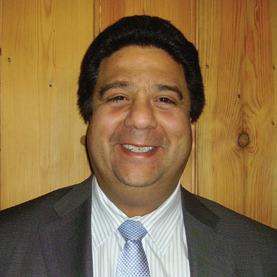

Prior to signing with FA Solutions, Alfred Berg had a fragmented, on-premise IT landscape with solutions from multiple vendors. Extracting data from this infrastructure was time-consuming, and the end result was both inaccurate and out of date.
The FA Platform is now the core Investment Book of Record for Alfred Berg. The Platform provides a real-time view of their entire business across all asset classes. In addition, the FA Platform provides tools for investor and regulatory reporting, position keeping, and NAV calculations across their internal funds.
This has resulted in data consolidation, enhanced connectivity and enhanced automation for Alfred Berg.
Where you can manage all your asset types holistically: FA Platform is a solid foundation for expanding your asset and wealth management business by automating and adapting to your critical business processes.
Joey Cozens-Smith Chief Revenue Officer joey.cozens-smith@fasolutions.com
Peter Dingomal Business Development Director peter.dingomal@fasolutions.com
UK WealthTech Landscape Report 2023 91
Get in touch
The FA Platform is a solid foundation for expanding your asset and wealth management business by automating and adapting to your critical business processes.
Where you can manage all your asset types holistically
OPAL Goals-based Wealth Planning and Monitoring
We translate client’s financial goals into an optimal investment strategy, reflecting their personal ambitions, cash flows and risk appetite.
About Ortec Finance
Ortec Finance is a leading global provider of technology and solutions for risk and return management, enabling institutions and private clients to manage investment decisions.
Building on 40 + years of industry experience, we design, develop and deliver high-quality software models for asset-liability management, risk management, (impact investment) portfolio construction, performance measurement and attribution, wealth management and financial planning. Using the latest technology, data, and market knowledge, we continuously find new ways to collborate with our global clients, to face the growing complexity of investment decision making. We serve both the institutional and wealth management sectors.
About OPAL
Ortec Finance supports wealth management companies, banks and IFA’s move from a productcentric approach to client-centric advice. The OPAL solution improves the quality of client investment decisions, seamlessly optimising clients’ investment portfolios aligned with their individual financial goals and liabilities, while integrating risk and sustainability preferences and ensuring regulatory compliance (MiFID II/Consumer Duty) throughout the advisory process. OPAL has been elected in the Global WealthTech 100 for five consecutive years.
As wealth and cashflow planning (goals-based planning and monitoring) tool, OPAL aims to provide advisers with the ability to model a client’s assets, liabilities, income, and expenditures in order to create a goalsbased future financial plan and support investment decisions in an optimal way.
Website www.ortecfinance.com/en/solutions/goal-based-planning
Email address contact@ortecfinance.com
Year founded 1981
HQ location Rotterdam, Netherlands with a subsidiary in London, UK
No. of employees 101-500
No. of clients 501-1000
Geographic relevance Asia, Caribbean, Middle East, North America, Oceania, Western Europe
Type of wealth manager served External Asset Managers, Banks, Wealth Managers, Family Offices, Financial Advisers, Insurance-based, Digital Wealth Platforms, Pension providers
Factfile
UK WealthTech Landscape Report 2023 92
Features
Using OPAL, wealth managers can translate their clients’ personal goals into an optimal investment plan and monitor these goals over time. It offers solutions for all stages in a goals-based advisory process in wealth management. From client onboarding and risk-profiling to (online) client reporting and proactive monitoring, the tool can be easily integrated with existing business processes, bringing structure, efficiency and compliance with local regulations.
OPAL uses realistic wealth projections of institutional quality, based on monthly updated economic scenarios for more than 700 asset classes, which can be linked to clients’ financial goals. Additionally in some regions, the product offers fully integrated cash flow planning to enable easy identification of possible budget shortfalls or surpluses, which thus supports efficient investment decisions. OPAL Planning differentiates itself from all other financial planning tools by integrating the effect of investment risks on the realisation of expenditure goals.
Benefits
OPAL is a leading software solution for financial services globally, providing goals models that enable advisers and consumers to manage the complexity of investment decision making.
For financial services companies seeking to scale goals-based wealth and cashflow planning, OPAL is the proven industry leader in translating clients’ personal goals into an optimal investment and monitoring plan. OPAL helps to improve (pro-active) client engagement to meet clients’ expectations and build and maintain client trust and client satisfaction, truly understanding unique financial goals, risk tolerance and preferences of clients.
OPAL brings down costs and time for advice; it can implement hybrid advice, and will streamline compliant advisory processes; providing efficiency and better suitability (in line with MiFID II/ ESMA/ Consumer Duty). OPAL will improve client retention and help attract new clients.
“
Helping people with investment decisions is more important than ever in the current environment of market uncertainty.
UK WealthTech Landscape Report 2023 93
Differentiators
OPAL delivers more efficiency and better client engagement with pro-active and automated goal monitoring and automated solutions to get back-ontrack again. Cashflow planning is integrated for making clients’ goals more concrete and showcase the impact of investment risk on future cashflows.
Clients’ expectations are managed by using Ortec Finance’s state-of-the-art, industrial-grade stochastic engine for realistic insight in feasibility of clients’ goals and better investment decisions.
Use Cases
The OPAL solution enables financial institutions and advisers to translate their clients’ personal goals into an optimal investment plan and monitor these goals over time. It offers solutions for all stages in an advisory process from a client intake and risk-profiling to (online) client reporting and proactive monitoring. In several European countries, a cash flow planning add-on module provides fully-fledged goals-based financial planning, combining cash flow planning with wealth and retirement planning.
Technology and Architecture
Ortec Finance delivers the OPAL platform for personal advice Including a front-end advisory tool, digital solutions (via API) and hybrid solutions and is the engine behind many private banks, wealth and asset managers. OPAL can be tailored to precisely fit into any IT architecture. Our technology can be integrated with the front and back-end systems of banks or thirdparty providers. In addition, OPAL is available as a native app via the Salesforce App Exchange.
Typical users of OPAL are wealth managers, relationship managers, investment advisors, financial planners, and IFA’s. They can use the OPAL front-end advisory tool for full holistic advice, linking clients’ (multiple) goals with their (multiple) assets. OPAL API can be used to be integrated into more hybrid or B2C/ robo propositions. Use cases do include accumulation but also specifically decumulation to give insight in longevity risks when future cashflows are dependent on an investment pot.
Installation and Deployment
Users OPAL is a private Cloud-hosted solution by default. The hosted private clouds reside on Ortec Finance's own infrastructure, firewall protected and physically secured. This means that there are no IT hurdles to overcome. In first half of 2024 OPAL will become fully Cloud-native.
Partners and Integrations
OPAL delivers huge configurations options. Ortec Finance will also implement OPAL, so no third-party implementation partner is required, even if data interfacing would be required. OPAL is provided as a SaaS solution, which massively reduces IT hurdles.
Furthermore, Ortec Finance works alongside its partners to deliver end-to-end solutions that address our clients’ complex advisory challenges while accelerating growth. We have trusted business partnerships with leading global consultancies and platform providers including Salesforce, Deloitte, Conquest, additiv, everyoneINVESTED, and Wealth Dynamix.
UK WealthTech Landscape Report 2023 94
Case Study
Ortec Finance works with over 600 clients across Europe, Middle East, North America, and Asia Pacific, maintaining 96% retention rate and supporting the management of over € 14 trillion in AUM.

Client names include St. James's Place in multiple countries, Lawsons Wealth, ING in multiple countries, ABN Amro in multiple countries, Insinger Gilissen (Quintet Group), VisualVest (Union Group in Germany), Mandatum Life (Finland), Lansforsakringar (Sweden), Van Lanschot Kempen (multiple countries) and Triodos Bank (the Netherlands).
Iwan Schafthuizen Managing Director Business Development iwan.schafthuizen@ortec-finance.com
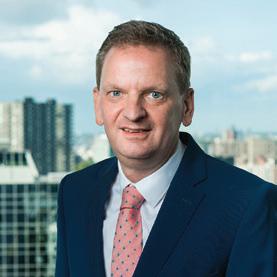 Waleed Khan
Head of Client Support UK - Wealth waleed.khan@ortec-finance.com
Waleed Khan
Head of Client Support UK - Wealth waleed.khan@ortec-finance.com

OPAL’s is the proven industry leader in translating clients’ personal goals into an optimal investment and monitoring plan, truly understanding their risk tolerance and preferences, providing efficiency and better suitability.
Get in touch
Data-first investment management. Aggregate. Analyse. Visualise. Share.
About Point Group
Point Group is a London-based FinTech providing technology solutions and expertise to wealth and asset managers, family offices and private banks.
Founded in 2017, Point Group is an experienced team drawn from across the FinTech, operations, digital transformation, and consultancy sectors. We have a proven track-record in building enterpriseready technology and delivering technological transformation for investment managers of all sizes.
Our software focuses on the collection, management, analysis, and integration of complex investment data to generate intelligence, embed scalability to client operating models, and enable end clients to receive market-leading investment management experiences.
eXeer is a Cloud-based data intelligence solution for wealth and asset managers.
It places data at the centre of user businesses and delivers the intelligence needed for managers to make accurate, timely decisions, and develop deep end-client relationships.
eXeer aggregates transactional level investment and market data from multiple underlying sources of record, including custodians, investment platforms, alternative investment managers (RE, PE, etc.) and market data providers.

Data is mapped to an independent Investment Book Of Record and stored in a persistent data warehouse. This provides users with a permanent, historical, and single source of investment data truth.
Website www.pointgroup.io

address
Year founded 2017 HQ location London, UK No. of employees 1-10 No. of clients 1-10 Geographic relevance Eastern Europe, Middle East, North America, Western Europe Type of wealth manager served External Asset Managers, Bank Wealth Managers, Family Offices, Digital Wealth Platforms Factfile
Email
contact@pointgroup.io
eXeer
UK WealthTech Landscape Report 2023 96
eXeer. your data-first modular investment management solution.
Nine times out of 10, requirements are best met by building a modular operating model that mixes capabilities from different providers at different times; whilst maintaining oversight and control over the key commodity - investment data.
Tom Williams, CEO at Point Group
eXeer delivers real-time analytics to user fingertips, allowing managers to slice and dice their data any way they wish, generating actionable intelligence for portfolio management, strategic decision-making, operations and end-client relationship management.

The solution visualises the data for internal users via a series of intuitive dashboards, and provides pixelperfect end-client reporting, customisable to meet user needs.

Critically, eXeer shares calculated investment with third-party solutions across user tech stacks including end-client digital interfaces, CRM and CLM platforms, order management solutions and specialist analytical tools.
Benefits
eXeer breaks down technology and data silos providing users with a single source of investment data truth from which to conduct analysis, drive thirdparty technology solutions and engage end-clients.
The powerful analysis engine slice and dices data to meet individual business requirements at the single, multiple portfolio or business levels. The flexibility of the solution providing value to portfolio and relationship management, operation, and leadership teams.
eXeer replaces costly, unscalable, and high-risk activities with streamlined, repeatable processes that enable managers to increase client numbers and AUM without incurring prohibitive costs.
The solution operates alongside, and supports existing (and changing) workflow technology stacks including CLM/CRM systems, PMS/OMS solutions, digital interface and accounting platforms. As such, eXeer does not require large scale implementation and integration projects.
The solution’s configurable end-client reporting capability provides users with a customisable PDF report capability and delivers accurate data to user digital engagement tools (apps and portals).
“ UK WealthTech Landscape Report 2023 97
Differentiators
Rarely does a one-size-fits-all technology solution meet all the requirements a manager may have.
Nine times out of 10, requirements are best met by building a modular operating model that mixes capabilities from different providers at different times; whilst maintaining oversight and control over the key commodity - investment data.
eXeer’s enables exactly this. By sitting outside the workflow technology stack; through its open architecture; and via its powerful aggregation, analytics, and integration capabilities, eXeer is the data foundation a manager needs to become truly data first.

Users
eXeer delivers values to users across the business.
Relationship managers can answer end-client questions instantly and with confidence whilst delivering beautiful and accurate reporting.
Portfolio management teams can look at single or consolidated portfolios any way they wish, at any point in time; instantly.
Operations teams benefit from eXeer’s automation thus de-risking the business, enabling growth and providing data assurance.
Leadership teams can make intelligence led decisions at speed; meaning enabling opportunities to be seized, risks mitigated, and long-lasting end-client relationships to be built.
Installation and Deployment
eXeer is a Cloud-based, SaaS solution. Hosted by Point Group, or delivered and managed on the client’s infrastructure.
Fees comprise a SaaS licence fee, an onboarding fee and a data service fee. All scaled according to the complexity of the manager concerned.
Technology and Architecture
eXeer comprises, aggregation layer, persistent data warehouse, investment book of record, analytics engine, reporting engine, and integration layer.

Partners and Integrations
eXeer has been designed to work with a wide variety of third party solution providers including: CLM and CRM solutions; PMS/OMS providers; end client engagement tools; and advanced and specialist analytic tools.
UK WealthTech Landscape Report 2023 98
Case Studies
The start-up wealth manager
Aggregating data from two UK investment platforms and one global custodian. Integrating with existing CRM, and powering white-labelled end-client digital engagement interfaces. Consolidated reporting and analysis. Option to enhance operating model with OMS to enable trade and execution as business grows.
The MFO
Aggregating data from multiple custodians, specialist PE investment platforms and internal books of record. Integrating with specialist family office governance platform and delivery of customised reporting. Portfolio analysis powering strategic asset allocation advice and oversight of third party fees and charges.

The institution going through technology transformation
Aggregation of underlying custodian and legacy books of record, enabling wider technology stack transformation using best-in-class, third-party solutions.
The M&A play
The consolidation of multiple books of record from multiple different systems, enabling migration as part of acquisition strategy.
Tom Williams Chief Executive Officer tom.williams@pointgroup.io

 Martin Ross Chief Technology Officer martin.ross@pointgroup.io
Martin Ross Chief Technology Officer martin.ross@pointgroup.io
Get in touch
UK WealthTech Landscape Report 2023 99
eXeer. your data-first modular investment management solution.
CLMi an end-to-end Client Lifecycle Management solution
About Wealth Dynamix
Wealth Dynamix delivers a unified, digital-first platform to private banks and wealth management firms, fuelling AUM growth, bolstering efficiency, and ensuring compliance.
Catering to diverse entities, from boutique investment firms to global mass affluent wealth managers, we enhance the complete client journey. Leveraging data-centric tools, automation, and dynamic portals, our CLM solutions transition firms from manual operations to technology-driven models. This pivot accentuates value-driven tasks and fosters deeper client engagements, refining each stage from prospect identification to wealth succession.
About CLMi
CLMi is a cutting-edge, SaaS solution tailored specifically for wealth managers and private banks. The software is used by all departments within wealth management and private banking firms as a single solution to automate client processes. As a mobile-centric platform, CLMi is accessible by remote and in-person operations. CLMi creates a holistic approach to client management, automating tasks and leveraging a data-driven process engine. This engine eliminates redundancy and provides invaluable insights for firms using intuitive dashboards. CLMi is used by firms from 10-1000 users including Mirabaud in Switzerland. The breadth of the solution is across prospecting, onboarding, and client servicing. These modules can be delivered separately or in combination. CLMi can help firms grow revenue, boost operational efficiency, and deepen client relationships.
Factfile
Website www.wealth-dynamix.com

Email address connect@wealth-dynamix.com
Year founded 2012
HQ location London, UK No. of employees 101-500
No. of clients 21-50
Geographic relevance Asia, Caribbean, Middle East, North America, Oceania, Western Europe, United Kingdom and Channel Islands
Type of wealth manager served Private Banks, Wealth Managers, Family Offices, Financial Advisors, Discretionary Fund Managers
UK WealthTech Landscape Report 2023 100
Fully integrated SaaS Cloud-based client lifecycle management (CLM) solution powering private banks and wealth management firms via a single platform.
Features
CLMi integrates a comprehensive set of workflows, dashboards, and interfaces for client data geared to the wealth management and private banking world. Built-in integrations grant seamless access to pivotal systems, covering KYC, AML screening, and more.
Designed for digital transitions, it provides mobile and remote client access. Its process engine, anchored in rules and automation, optimises workflow and ensures proactive compliance. Simplistic at its core, CLMi deciphers intricate client data, providing informed decision-making.
It consists of three modules that allow firms to automate prospecting, client onboarding, and client servicing. The user interface is clean and adaptable to each user's profile, with the ability to create specific reports and workflows directly.
The system allows you to collaborate with staff conversationally within the tool, removing the need for separate emails and phone calls.
The system is deployed through the Cloud and managed by Wealth Dynamix, leading to reduced IT costs and no costly upgrade projects.
Benefits
Client management of the entire lifecycle in an automated fashion, with all the data in one place leads to many benefits. From a compliance point of view, data is readily accessible with a full audit trail of changes. This saves time and effort, and ensures compliance is built into the process, not an afterthought.
The replacement of manual processes including forms creates efficiency and speeds up processes. CLMi has built-in secure messaging, document signatures, and client websites, as well as efficient workflows for areas that involve client interaction.
CLMi revolutionises hybrid client service, cutting costs by a sixth compared to conventional methods. It offers a comprehensive 360° client view, creating insights across the entire journey. Role-tailored dashboards drive actionable outcomes, helping to reduce administrative burdens which means all staff have a single view of all the information required.
Centralising data ensures minimised rekeying. This allows firms to reduce onboarding times from an industry average of 14-28 days, to as quickly as a single day.
UK WealthTech Landscape Report 2023 101
“
Liberate advisors from the administrative burden, empowering them to win new prospects and deepen client relationships.
Differentiators
The CLMi platform is unique in that it is built specifically for wealth managers and private banks using over 12 years of experience. The CLMi data model caters for complex HNW relationships, including trusts and corporate entities. It has over 100 prebuilt best practice intelligent workflows, dashboards, and reports with the flexibility to build on top of those. This creates efficiency, minimises rekeying, and enables real-time business management. Its user-friendly design negates the need for lengthy training, freeing advisers to chase revenue.
Use Cases
CLMi adds value across many use cases. One of the examples is explained below.
The end-to-end onboarding module deployed for one of our tier-one banking clients drastically reduced their onboarding timelines. Integrating directly with advanced screening tools and negating redundant data inputs across platforms, we accelerated their screening efficiency by over tenfold. This precise system fortified compliance teams' confidence in screening accuracy, notably reducing iterative clarifications per case.
Technology and Architecture
CLMi epitomises modern Cloud-centric design, utilising cutting-edge technology to offer a SaaS solution, hosted on the Microsoft Azure Cloud by Wealth Dynamix. With its unique wealth-specific data model, intuitive UX, and comprehensive integration capabilities, CLMi aligns seamlessly with client lifecycle requirements. Its versatile design and open API ensure effortless configuration and integration with existing infrastructure. With three secured public access points - CLMi Web Application, API, and Static Service, safeguarded by Cloudflare’s WAF - it guarantees robustness and security.
CLMi is used by all departments within wealth management and private banking firms in a single solution to automate client processes; front office, operations, support, compliance, marketing, and management. Adaptable workflows feed dashboards, that deliver insights and alerts tailored to user roles. CLMi also provides digital engagement with both prospects and clients. CLMi provides seamless integrations and real-time data through an open API. CLMi's key benefit is that by creating workflow digitisation, the organisation is more efficient and collaborative.
Installation and Deployment
Users CLMi offers a centralised, fully managed client lifecycle management system operating on Microsoft's Azure Cloud. This multi-tenant SaaS platform processes all client data, negating the need for internal data centre footprints. Client deployments can be done quickly & efficiently, due to the large number of pre-configured workflows covering the majority of industry best practices for prospecting, onboarding, reviews, and client management.
Partners and Integrations
CLMi collaborates with best-of-breed technology vendors and back office platforms. Our solution thrives with support from various technology vendors. These solutions cover marketing automation, Artificial Intelligence (AI) and Machine Learning (ML), document management, and digital onboarding services. Among many others, our vendors include DotDigital for marketing automation, SharePoint for document management, DocuSign for e-signature services, Unblu for client chat engagement, SmartSearch for AML/ compliance screening, and Veridas for ID&V validation. Core banking and PMS integrations include Avaloq, Temenos, Azqore, and Third Financial, among others.
UK WealthTech Landscape Report 2023 102
Case Study
Mirabaud
In April 2022, Mirabaud, the esteemed Swiss banking group, embarked on a groundbreaking digital transformation journey, facilitated by CLMi. This initiative marks a pivotal stride in Mirabaud's clientcentric approach, leveraging digital capabilities to enhance service quality. Wealth Dynamix, in collaboration with Temenos, supports Mirabaud's transition from traditional systems to a comprehensive digital wealth management platform. The adoption of CLMi ensures swift adaptation to evolving investment trends and regulatory changes, fostering agility and personalised client experiences.
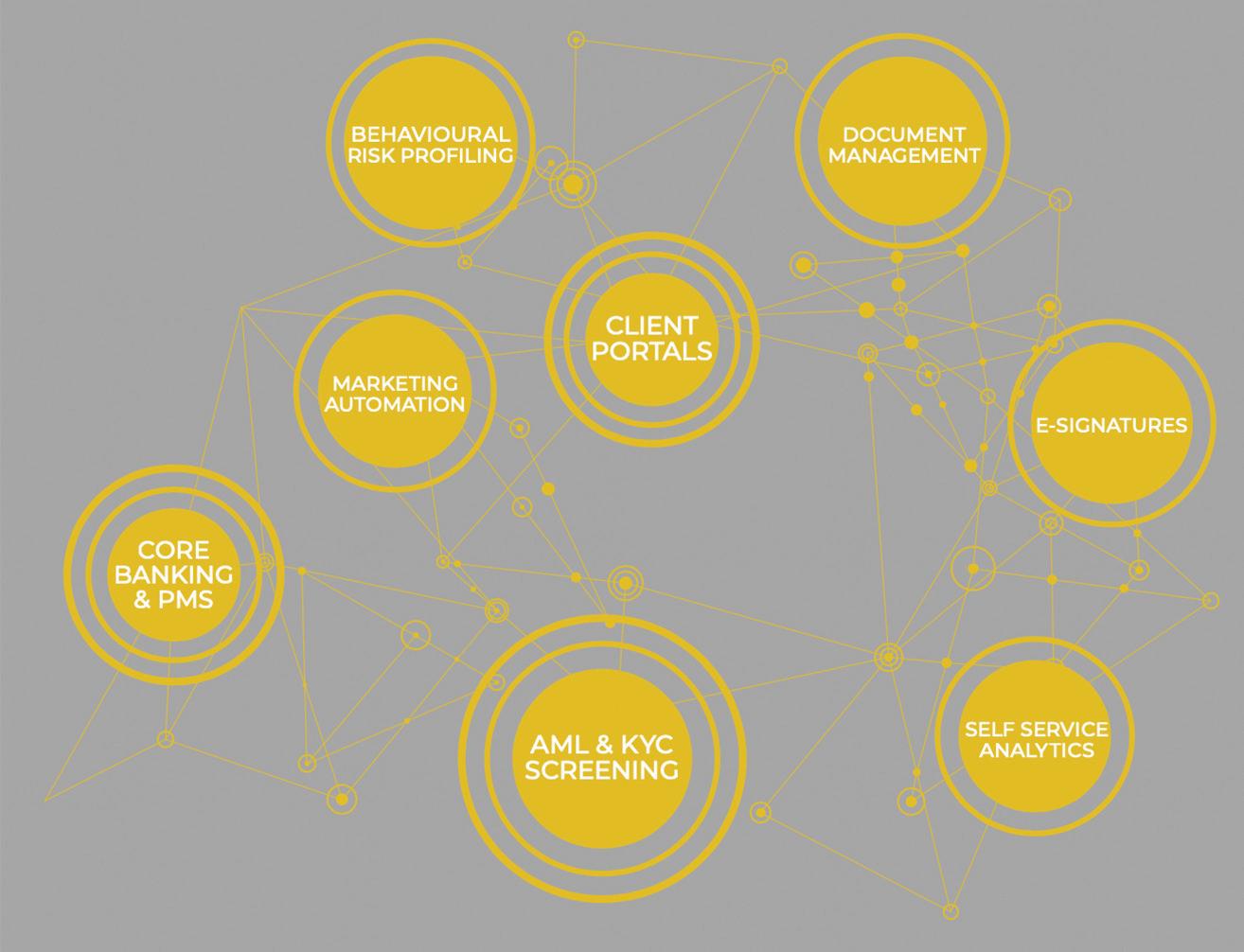 Steve D'Souza Direct Sales Director steve.dsouza@wealth-dynamix.com
Steve D'Souza Direct Sales Director steve.dsouza@wealth-dynamix.com
 Robert Roome Chief Strategy Officer robert.roome@wealth-dynamix.com
Robert Roome Chief Strategy Officer robert.roome@wealth-dynamix.com

UK WealthTech Landscape Report 2023 103 Get in touch
CLMi. Fully integrated SaaS Cloud-based CLM solution powering private banks and wealth management firms via a single platform.
Featured Solution Provider Profiles
Full or half-page Featured Solution Provider Profiles for 11 technology (WealthTech) businesses relevant to the Business Needs of UK-based wealth management firms.
UK WealthTech Landscape Report 2023 104
Business overview
additiv enables leading financial institutions and brands globally to transform their business models, capitalising on digital innovation and Finance-as-a-Service (FaaS) capabilities. additiv's API-first Cloud platform is one of the world's most powerful solutions in wealth management, lending and insurance. The technology, together with the global ecosystem of regulated financial service providers, opens new opportunities for banks, insurance companies, asset managers, IFAs but also 'consumer brands' to offer their own and third-party financial solutions quickly and flexibly via existing or new customer channels.
Solution overview
Our Hybrid Wealth Manager is a set of applications to manage investment and client relationships through adviser-assisted personalised council, self-service, or a hybrid of the two. Our Embedded Wealth solution is a range of products making it easy for financial/non-financial institutions to embed wealth into customer journeys. Banking-as-a-Service (Baas) is an orchestration platform providing regulated wealth components to brands.
Nils Frowein CEO nils.frowein@additiv.com
 Christine Schmid Head of Strategy christine.schmid@additiv.com
Christine Schmid Head of Strategy christine.schmid@additiv.com
Year founded 1998
HQ location Zurich, Switzerland
No. of employees 101-500
No. of clients 101-500
Geo relevance Africa, Asia, Eastern Europe, Middle East, Oceania, Western Europe
Type of wealth manager served Asset Managers, Bank Wealth Managers, Family Offices, Financial Advisers, Insurance-based, Trust & Fiduciary, Digital Wealth Platforms


Wealth Robo Advisor > Hybrid Wealth Manager > Website www.additiv.com
sales-consultancy@additiv.com
Email address
Factfile Solutions include: Wealth Solution Builder > Embedded Wealth Solutions > Banking-as-a-Service (BaaS) > CE&M DP&T IP&T PBA&R M&BI P&WMS Get in touch Read more on The Wealth Mosaic
106
Business overview
aixigo has the world's fastest API-based wealth management platform for investment advisory, portfolio management, portfolio risk management, financial planning, portfolio analysis and portfolio monitoring. The platform, which is equipped with more than 100 digital services delivers constant trend-setting and real added value innovations to aixigo’s customers and their savings and investment customers. aixigo’s international customers including Bank Vontobel, BNP Paribas, Commerzbank and Hargreaves Lansdown are already benefiting from the aixigo platform. Furthermore, aixigo was awarded the Banking IT-Innovation Award by the University of St. Gallen (Switzerland) and has received a total of nine internationally recognised awards in 2023 alone.
Solution overview
aixigo has the world's fastest API-based wealth management platform for investment advisory, portfolio management, financial planning, portfolio analysis and portfolio monitoring. The platform, which is equipped with more than 100 digital services delivers constant trend-setting and real added value innovations to aixigo’s customers and their savings and investment customers.
 Christopher Baxter Senior Solution Consultant - Global christopher.baxter@aixigo.com
Christopher Baxter Senior Solution Consultant - Global christopher.baxter@aixigo.com

No. of employees 101-500
No. of clients 21-50 Geo relevance Eastern Europe, Western Europe
Portfolio Analysis & Monitoring Software > Investment Advisory Software > Website www.aixigo.com Email address solutions@aixigo.com
Year founded 1999 HQ location Aachen, Germany
Bank
Factfile Solutions
Portfolio Management Software > Financial Planning Software > CE&M DP&T F&RP IP&T PBA&R Get in touch Read more on The Wealth Mosaic
107
Type of wealth manager served
Wealth Managers, Financial Advisers, Digital Wealth Platforms
include:
Business overview
CREALOGIX has over 25 years of experience delivering proven customer-centric systems to the world's leading financial institutions. CREALOGIX Software as a a Service (SaaS) solutions for private banks and wealth management firms drive engagement online. The platform helps financial brands integrate new FinTech features and improve efficiencies with a positive UX.
Financial institutions can rapidly deploy a modern and unified interaction layer across their digital services and extend their solution with new functionality. The immediate benefit to financial institutions is lower costs compared to custom in-house development. And by reducing long-term technical complexity allowing the firm to focus on satisfying existing customers and attracting new users.
Solution overview
Clients use CREALOGIX’s solutions to better respond to their digital transformation requirements, enabling them to remain competitive in a demanding and dynamic market.
We have a presence in Switzerland, Austria, Germany, Middle East, Singapore, Spain and the UK, with a global client base comprising more than 550 banks, wealth management firms and other financial institutions.
Solutions include:
Tom Bucktrout Senior Sales Manager solutions@crealogix.com

Factfile
Website www.crealogix.com
Email address solutions@crealogix.com

Year founded 1996
HQ location Zurich, Switzerland
No. of employees 501-1,000
No. of clients 501-1,000
Geo relevance Asia, Central America, Eastern Europe, Middle East, North America, Western Europe
Type of wealth manager served Asset Managers, Bank Wealth Managers, Digital Wealth Platforms
CREALOGIX Conversational >
Invest >
CREALOGIX
CREALOGIX
Hub > CREALOGIX Mobile Application Framework > CREALOGIX User Experience Framework > CE&M D(I)R DP&M IP&T M&BI SD&M Get in touch Read more on The Wealth Mosaic
Digital
108
Business overview
Crypto Index Series serves financial institutions and FinTechs firms by providing data, index, and portfolio analytics solutions for digital asset markets. From pricing data to fair price indices, wallet transaction collection to portfolio analytics, Crypto Index Series APIs and white-label products are the most comprehensive data and analytics solutions in the digital asset markets.
Firms looking to provide digital asset services to their clientele can leverage the Crypto Index Series product suite to form the data and analytics layer of their products and quicken the idea-to-delivery process for their own products whilst economising on the resources.
Crypto Index Series products serve crypto funds in managing their funds distributed into hundreds of wallets, wealth managers in assessing and managing the portfolio of their customers, digital asset banks in offering digital asset portfolio features to their customers, FinTech firms in building the data layer for their products.

Established in the UK in 2019 by co-founders with many years of experience in traditional finance, Crypto Index Series brings that expertise to digital asset markets. Crypto
Index Series is a crypto data contributor for Refinitiv, and our investors include SIX Fintech Ventures, Generali, CoinIX, Tenity, Z5 Capital among others.
Solution overview
Data collection, normalisation, account aggregation, portfolio analytics are challenging for financial institutions looking to provide digital asset services to their clientele. Setting up an in-house team is expensive and may result in an opportunity cost due to time spent. Crypto Index Series provides robust and scalable solutions to power such institutions.


Transaction Collection API (TRAC API) > Digital Asset Data API (Data API) > Website www.cryptoindexseries.com Email address contact@cryptoindexseries.com Year founded 2019 HQ location London, UK
of employees 11-20 Geo relevance Eastern Europe, Middle East, North America, Western Europe Type of wealth manager
Asset Managers, Bank Wealth Managers, Family Offices, Financial Advisers, Digital Wealth Platforms Factfile Solutions include: News Sentiment API (News API) > Portfolio Analytics API, Admin & Client Views > Index Calculation Services > DF&IS DLT&C DP&T IP&T PBA&R Get in touch Read more on The Wealth Mosaic Dr Gökçe Phillips Co-Founder & CEO gokce.phillips@cryptoindexseries.com Richard Phillips Co-Founder & CTO richard.phillips@cryptoindexseries.com 109
No.
served
Business overview
ERI is the provider of the OLYMPIC Banking System, a fully-integrated, real time, front-to-back, parameterdriven digital platform; supporting banks and financial institutions in streamlining their core business activities across their clients’ entire lifecycle. Over 400 banks and wealth managers across 60 countries have chosen OLYMPIC Banking System to streamline, automate and digitise their daily processes. Our solutions assist banks and financial institutions in achieving cost and operational efficiency while keeping the focus on anticipating their clients’ needs.

The platform provides a complete set of decision-making, transaction processing and control tools to support domestic and international core services. It comprises a functionally rich client-centric core system and a wide range of integrated front, middle and back office functions; CRM, client onboarding, regulatory reporting, portfolio and order management, advisory and digital banking. OLYMPIC Banking System is designed to be entirely tailored and managed directly by the user’s organisation. The solution also leverages Cloud computing and is available in a SaaS model supporting financial institutions in achieving operational efficiency and future-proof their profitability.
Solution overview
OLYMPIC Banking System responds to the challenges of various banking and financial sectors. Whether your institution is a private, corporate or retail bank, a central bank, a credit union or a business focusing on custody, fund administration and brokerage services, OLYMPIC Banking System helps you automate complex processes from front-to-back office, unlocking your institution’s full growth potential.
Solutions include:
Geo relevance Africa, Asia, Caribbean, Eastern Europe, Middle East, North America, Western Europe
Type of wealth manager served Asset Managers, Bank Wealth Managers

OLYMPIC Banking System - Portfolio Management > OLYMPIC Banking System - Core Banking > Website www.olympicbankingsystem.com Email address info@olympicbankingsystem.com No. of
101-500
employees
No. of clients 101-500
Factfile
OLYMPIC Banking System
Management
OLYMPIC Banking System - Custody services > OLYMPIC Banking System - Fund administration > CB M&BI CE&M DP&T IP&T P&WMS PBA&R T&BO Get in touch Read more on The Wealth Mosaic Adam Kasraoui
Adam.Kasraoui@ldn-eri.co.uk 110
- Order
>
Sales Manager
Business overview
We are First Rate, a global WealthTech firm with over three decades of experience delivering innovative technology solutions to the financial services industry. Unlike many of our peers, we remain privately held and our future does not involve an exit; rather, a vision of operating as a permanent holding company that exists to serve its co-workers, customers, and communities worldwide. Why? We believe in conducting business for the purpose of something greater. Our mission is to positively impact business practices in the communities we operate in through modeling our values of love, give, serve, and enjoy. We call our relational corporate philosophy, First Rate Living, enabling us to provide longterm access to technology and world class service, all created to help you build and scale your business. Through our continuous innovation, our customers are able to more easily manage the most internationally diverse and complex portfolios. The way we see it, no corner of the financial world should be beyond reach. Founded in Arlington, Texas in 1991, First Rate serves over 400 clients across the globe through its local teams in Texas, Chile, United Kingdom, Singapore, UAE, India, and Afghanistan. Empowering our people is the foundation for our success.
Solution overview
We embrace a business philosophy that is hyperfocused around the client. Thus, instead of operating as one large company structure, we deliver our software and services through multiple market business lines which create tailored solutions for the private banks, Ultra-High-Net-Worth (UHNW) wealth management, broker-dealer, family office, institutional, and RIA/IFA spaces. First Rate provides data aggregation, investment performance, client reporting, and data analytics to customers requiring out of the box and/or bespoke functionality.
Director, Global ggreer@firstrate.com


Year founded 1991
HQ location Arlington, Texas, USA
No. of employees 101-500
No. of clients 501-1,000
Nayan Madhamshettiwar Managing Director nmadhamshettiwar@firstrate.com

Geo relevance Africa, Asia, Caribbean, Central America, Eastern Europe, Middle East, North America, Oceania, South America, Western Europe
Type of wealth manager served External Asset Managers, Bank Wealth Managers, Family Offices, Financial Advisers, Trust & Fiduciary, Digital Wealth Platforms
CORE Wealth Platform > Data Services - Aggregation & Reconciliation > Website www.firstrate.com
Email address info@firstrate.com
Factfile
Human in the Loop Service Team > Vantage Alternative Asset Management >
as a Service - Enhanced Analytics, Insights,
BOT’s > BPM&O BI&PM CE&M DM&A IP&T RA&M PBA&R SD&M T&BO Get in touch Read more on The Wealth Mosaic
Solutions include:
AI
&
Grayson Greer Managing
111
Business overview
We are InvestCloud , a global company specialising in the digital transformation of the financial industry. Our approach is revolutionary - a single, Cloud-based platform that can be configured in infinite ways using our ever-expanding library of digital financial apps. User insights and product design are at the centre of our process, ensuring that everything we build is beautiful, usable and transformative.
Headquartered in Los Angeles, InvestCloud has over 20 global offices including New York, London, Geneva, Zurich, Singapore, Tokyo and Sydney, supporting US$6.3 trillion in assets across hundreds of diverse clients - from the largest banks in the world to wealth managers, asset managers and asset services companies.
Solution overview
InvestCloud is the only unified wealth management platform built for today’s global financial services industry. InvestCloud is a scalable, modular technology platform for best-in-class digital experiences - spanning the complete wealth continuum - designed to unlock success at scale for wealth managers and their clients.
The digital wealth product suite is comprised of many components that optimise and modernise an advisers workday – accessible from a single platform and log in. Products including Prospect Experience, Client Experience, Adviser Experience, and more, are designed to enhance productivity and engagement with the most modern digital tools for advisers and their clients - driving revenue and growth.
Michael Basi Head of Wealth Proposition (EMEA) sales@investcloud.com

Website www.investcloud.com
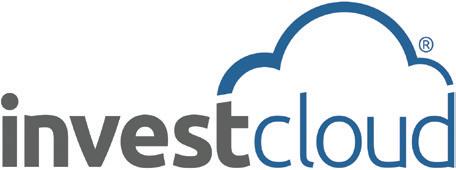
Email address sales@investcloud.com
Year founded 2010
HQ location West Hollywood, CA, United States
No. of employees 1,000+
No. of clients 550
Nawaz Mucadam VP, Head of Sales nmucadam@investcloud.com

Geo relevance Asia, North America, Oceania, Western Europe
Type of wealth manager served Asset Managers, Bank Wealth Managers, Family Offices, Financial Advisers, Digital Wealth Platforms
Get in touch Read more on The Wealth Mosaic
Factfile
CE&M DP&T IP&T PBA&R T&BO 112
Business overview
Kidbrooke® enables financial institutions to create engaging customer journeys providing superior financial decisionsupport in a fraction of the time and cost, increasing profitability by consistently serving more customers across multiple channels. Access to Kidbrooke®’s technology can improve customer engagement, make a real difference with respect to inclusion and ultimately improve the quality and profitability of the underlying business models. By providing B2B automated financial analytics via the OutRank® API, it is designed to shorten time to market as well as lower the cost of providing wealth management services without compromising on performance or scalability. The personalised automation and holistic approach increases profitability by allowing more customers to be served in a better way, more frequently and at a lower cost.

Solution overview
OutRank® powers seamless financial decision-making by simulating the personal balance sheets of the end-customers. It empowers firms to build the required financial journeys covering pension planning, investment advice and guidance, credit, mortgages, insurance and tax, as well as integrate all of these together for a truly holistic experience.
No. of employees 11-20
No. of clients 1-10
Geo relevance Africa, Asia, Caribbean, Central America, Eastern Europe, Middle East, North America, Oceania, South America, Western Europe
Type of wealth manager served Asset Managers, Bank Wealth Managers, Family Offices, Financial Advisers, Insurance-based, Trust & Fiduciary, Digital Wealth Platforms


Holistic Financial Planning > OutRank > Website www.kidbrooke.com
Email address info@kidbrooke.com
Year founded 2011 HQ location Stockholm, Sweden
Factfile Solutions include: Pension Planning > Credit and Mortgage Analytics > Short-to-Medium Term Savings > DP&T D(R)I F&RP IP&T PBA&R RA&M Get in touch Read more on The Wealth Mosaic
113
Zaliia Gindullina Head of Business Development zaliia.gindullina@kidbrooke.com Natalie Burke Marketing and Sales natalie.burke@kidbrooke.com
Business overview
WealthOS is a Cloud-native operating system that offers future-proof technology infrastructure to build and run the next generation of savings, investment and retirement products.
Founded in 2019, Anton started WealthOS to address years of frustration from working with suboptimal WealthTech platforms that were unfit for digital progress. Anton has 18+ years of experience in the UK wealth and retirement space, and co-founder Chamat has spent 13+ years deploying mission-critical software for leading fintechs globally.
Collectively, the team has decades of experience from Fidelity, London Stock Exchange Group, Smart Pension, and Russell Investments, excelling in large client onboarding and revolutionising technology for financial services. As a minority-founded business, WealthOS's mission is to build fast and frictionless digital infrastructure, to enable equitable financial access for everyone, everywhere.
Solution overview
WealthOS provides middle and back office core operating system SaaS for wealth management. Our platform significantly reduces operational time and costs through extensive automation and orchestration of processes as well as remote maintenance and updates. With WealthOS you can go to market 3x faster and 40% cheaper than with current technology offerings.
Shri Krishnansen Chief Commercial Officer shri@wealthos.cloud

Website www.wealthos.cloud

Email address contact@wealthos.cloud
Year founded 2019
HQ location London, UK
No. of employees 21-50
Geo relevance Asia, Eastern Europe, Middle East, North America, Western Europe
Type of wealth manager served Asset Managers, Bank Wealth Managers, Financial Advisers, Insurance-based, Digital Wealth Platforms
Factfile Get in touch Read more on The Wealth Mosaic Unified Pension Transfer Manager > Wealth Operating Platform > Solutions
Fee Computation and Billing Software > Pension Drawdown Administration Software > Pensions Projections & Illustrations Software >
include:
BI&PM DP&T F&RP IP&T M&BI P&WMS T&BO 114
The Apiax Embedded Compliance solution replaces manual compliance processes with instant, accurate, and actionable answers to business units’ most pressing regulatory questions, right when and where they need them. Apiax's Embedded Compliance solution can be seamlessly integrated into CRM systems, trading tools, wealth management platforms, and many other systems used in the financial industry.
This enables business leaders to make critical decisions more quickly, delivering answers to the financial industry's most pressing regulatory issues in real time. Backed by regulatory knowledge from the world’s top legal experts allows for Apiax’s products to be up-to-date, ensuring reliability on verified compliance knowledge.

Website www.apiax.com
Email address hello@apiax.com
Year founded 2017
HQ location Zurich, Switzerland
No. of employees 51-100
Geo relevance Asia, Eastern Europe, North America, Western Europe
Type of wealth manager served Asset Managers, Bank Wealth Managers, Family Offices, Financial Advisers, Digital Wealth Platforms
Sonia Sarha Head of Marketing sonia.sarha@apiax.com

WealthKernel is a regulated custodian and investment infrastructure provider. We provide the building blocks to power any digital investing offering, empowering a better, more accessible wealth and investment industry.
With the help of our API, companies can quickly and easily launch an investment proposition for their customers. We can also help existing wealth businesses reduce costs and improve customer experience through our easilyembedded technology.
With our publicly available API documentation, we want to show that launching and managing an investment proposition does not need to be lengthy or complicated, and that our trusted technology can support their customers at scale.
Website www.wealthkernel.com
Email address sales@wealthkernel.com

Year founded 2015
HQ location London, UK
No. of employees 21-50
Geo relevance UK, Western Europe and Eastern Europe
Type of wealth manager served Asset Managers, Bank Wealth Managers, Financial Advisers, Digital Wealth Platforms
Karan Shanmugarajah CEO and Founder karan@wealthkernel.com

Factfile
Get in touch
Factfile
in touch Read more on The Wealth Mosaic 115
Get
A-Z Solution Provider Directory
The UK Solution Provider Directory has been created to give any type of UK-based wealth management firm easy access to the technology and related solution provider marketplace in one free-to access resource. In this year's report, we include 786 entries.
UK WealthTech Landscape Report 2023 116
Featured Solution Providers









This section includes all report contributors and TWM Members.
The 40 solution providers listed below are contributors in this report or TWM Members that are relevant to the UK market. Enter a business name in the search bar of our website, www.thewealthmosaic.com, to find a business and solution profiiles in our online solution provider directory.
additiv

Zurich, Switzerland
aixigo
Aachen, Germany
Altoo
Zug, Switzerland
Apiax
Zurich, Switzerland
Azentio Singapore
BITA Risk
London, United Kingdom
CREALOGIX Group




Zurich, Switzerland
Crypto Index Series
London, United Kingdom
Dorsum
Budapest, Hungary
ERI
Meyrin, Switzerland
Evooq
Lausanne, Switzerland
FA Solutions

Helsinki, Finland
FirstRate
Arlington, TX, United States
FundCount
Norwood, MA, United States
FundsDLT
Luxembourg
FundSense


London, United Kingdom
Futora
Tel-Aviv, Israel
GoUpscale
Bangkok, Thailand

UK WealthTech Landscape Report 2023 118
InvestCloud

Beverly Hills, CA, United States
Jacobi

San Francisco, CA, United States
Kidbrooke
Stockholm, Sweden
Moxo

Cupertino, CA, United States
Objectway

Milan, Italy
OpenFin

New York, NY, United States
Opus Nebula
London, United Kingdom
Opus Una
London, United Kingdom
Ortec Finance


Rotterdam, Netherlands
PandaConnect
Soborg, Denmark
Point Group
London, United Kingdom
Profile Software






Athens, Greece
Raise Partner

Grenoble, France
SaaScada
London, United Kingdom
swissQuant Group



Zurich, Switzerland
Umlaut
Sydney, NSW, Australia
Unblu
Basel, Switzerland
Venn by Two Sigma

New York, NY, United States
Wealth Dynamix

London, United Kingdom
Wealth Wizards
Royal Leamington Spa, United Kingdom
WealthOS

London, United Kingdom
WealthKernel

London, United Kingdom

UK WealthTech Landscape Report 2023 119
UK-Headquartered Solution Providers
This section includes all UK-based Solution Providers.
Of the 786 total solution providers included in this reports A-Z directory, 476 are UK-headquartered businesses. These businesses, with their headquarters location, are listed below and over this and the next 11 pages. Enter their business name in the search bar of our website, www.thewealthmosaic.com, to find their business and solution profiiles in our online solution provider directory.
AJ Bell
Manchester
Akoni
London
Albourne Partners
London
Advantra Wealth
London
AlgoDynamix
London
Algomi
London
Allocator
London
Alpha FMC
London
Alpha Quants
Cheadle
Adviser Portals
Milnrow AdviserAsset
Kent AdviserBook
Newport Air Sourcing
Gloucester Aiviq London
London
AltAssets
London
Altergaia
London
AlternativeSoft
London
Altus
Bath
Alveo
London
11:FS London 1fs Wealth London 1RS London 2RSquared London 360 Dotnet Leicester 360 Fund Insight London 3AI London 7IM London A2Risk London Aave London Abaka London abrdn Edinburgh Accelex London
AccountsIQ London Acin London Actuare Harpenden
AdviceBridge London Advicefront London Advise Wise Leeds
Adviser Cloud
UK WealthTech Landscape Report 2023 120
AM Insights
London
Ammonite
London
aosphere
London
Appital
London
Aqua Global Solutions
Wallington
Arbor Fund Solutions
London
Archax
London
Armadillo Group
Hitchin
Artclear
London
Asset Match
London
Assured Thought
London
Assyst Software
Swindon
Asura Financial Technology
Glasgow
ATEB Compliance
Durham
AtomInvest
London
Auquan
London
AutoRek
Glasgow
Aveni
Edinburgh
Aviva for Advisers
Norwich
Axxsys Consulting
London
B2C2
London
Bark
London
BDO UK
London
Be-IQ
London
Beauhurst
London
Beyond
London
Beyond Encryption
Fareham
BITA Risk
London
BITE Investments
London
Bizagi
Chalfont St Peter
Bondsmith
London
Bovill
London
Brandwatch
Brighton
Brickendon Consulting
London
Bricklane
London
Broadgate Consultants
London
Bud
London
Bureau van Dijk
London
Burnmark
London
BVNK
London
BYOB
London
Calastone
London
Capco
London
Capnovum
London
Cascade Cash Management
Gateshead
Cashfac
London
Caspian
Newcastle upon Tyne
causaLens
London
CCData
London
Centapse
London
Centology
Portsmouth
Certua
London
Cervest
London
Charizone
London
CIExpert
Berkhamsted
CityFalcon
London
Citywire
London
UK WealthTech Landscape Report 2023 121
UK-Headquartered Solution Providers (A-Z)
ClauseMatch
London
ClearDil
London
ClearMacro
London
Clever
Chester
CleverChain
London
Closir
London
Codepotato
Waterlooville
Cognitiv+
London
Coinfirm
London
CoInvestor
London
Collidr
London
Colmore
Birmingham
Commcise
London
Compare Wealth Managers
London
Compliance First
Glasgow
ComplianceAssist
Sussex
ComplyAdvantage
London
Complyport
London
Computershare
Bristol
Contengo
Oxfordshire
Control Now
London
Control Risks
London
Copper
London
Corizance
London
Cosegic
London
CreativeAdviser
Herts
CreditSafe
Caerphilly
Credo Group
London
Crypto Index Series
London
CUBE
London
CurrencyCloud
London
Cyberseer
London
CybSafe
London
Cygnetise
London
CyNation
London
Darktrace
Cambridge
Datactics
Belfast
DCI
Bristol
Defaqto
Haddenham
Delio
Cardiff
Delta Capita
London
Delta Financial Systems
Birmingham
Dianomi
London
Digital Clipboard
London
Digital Wealth Solutions
Cheltenham
Digital Wealth Systems
Manchester
Digiterre
London
Door Ventures
London
Duco
London
Dunstan Thomas
Portsmouth
Durell
Somerset
Dynamic Planner
Reading
Edgefolio
London
Egress Software Technologies
London
UK WealthTech Landscape Report 2023 122
Connecting Expert Talent with Exceptional Organisations through Longterm Partnerships.
We partner beyond the hire, ensuring success for clients and candidates alike.

Consultation at Core : More than staffing, we’re about understanding and aligning with your distinct vision.
Direct Touchpoints : Working closely with senior hiring managers, we ensure that each placement aligns seamlessly with your organisational ethos and objectives.

Focused Service : We steer clear of broad-brush approaches, each of our engagements is uniquely tailored, committed, and unparalleled in its depth.
Global Reach, Local Expertise : From the USA to the UK, Canada to the EU, our footprint is Global, but our insights are focused.
Trust & Results : They aren’t just words; they’re our foundational pillars.
Industry Acumen : Our expertise in the Wealth Management sector guarantees optimal talent placements.

Strategically Aligned : Every placement we make serves not just to fill a role but to further your strategic objectives.
Elevate Your Talent Strategy with eMFusion Global
Contact us today and experience the eMFusion Global difference first-hand. With us, you’ll find more than just a job or a candidate - you’ll find the perfect partner.
info@emfusionglobal.com
UK-Headquartered Solution Providers (A-Z)
Elgin White Consulting
London
Elliptic
London
Elwood
London
Embark Group
London
Endava
London
Enlighten ESG
London
EnOC Technologies
London
Envestors
London
enVisual
Doncaster
envizage
London
Equiniti
Worthing
ERIC
Edinburgh
ESG Book
London
Essentia Analytics
London
Etcho
London
ETF Stream
London
EV
Newbury
Evolution AI
London
eXate
London
EY - Wealth & Asset Management
London
Factbook
New Malden
FE fundinfo
London
Featurespace
Cambridge
FeedStock
London
Fidelity Adviser Solutions
Tonbridge
Finage
Poole
FinalytiQ
Basildon
Finance & Technology
Research Centre
London
FinanceBI
London
Financial Software
London
Finastra
London
Find a Wealth Manager
London
Fingerprint
London
Finlight
London
Finova
London
FinTech Compliance
London
Fintegrate
Preston
Finvent
London
Fitch Solutions
London
Flagstone
London
FNZ
London
Focus Solutions Group
Leamington Spa
Forensic Alpha
London
Form3
London
Fortu
London
FullCircl
Winnersh
FundApps
London
Fundipedia
London
Fundment
London
FUNDSaiQ
London
Fundscape
London
FundSense
London
Futureform
London
UK WealthTech Landscape Report 2023 124
GaiaLens
London
GBG
Chester Genovo
Shrewsbury
GlobalBlock
London
Goji Investments
London
GPP
London
Grath
London
Gresham Tech
London
Growthdeck
Milton Keynes
GrowthProvision
Newcastle Upon Tyne
HedgeGuard
London
Hedgehog
London
Heliocor
London
Hourglass Software
Plymouth
HRComply
London
IFA Dataflow
Cheltenham
IFAC
Cheltenham
iFinancial
London
illio Technology
London
IlliquidX
London
Immersive Labs
Bristol
Inalytics
London
Index One
London
InfinitX
Glasgow
Insight Regulatory Consulting
London
Insignis Cash
Cambridge
IntelliBonds
London
intelliflo
London
Intelligent Partnership
London
interop.io
London
Invessed Client Portals
Long Crendon
Investment & Wealth
Management Consultants
London
Investment Software
London
Ionic Information
London
iProov
London
ipushpull
London
ISAAC Intelligence
London
ITC Secure
London
ITDuk
London
ITRS
London
JustFA
London
Kaizen Reporting
London
Kaspersky
London
KAWC
Knaresborough
KiteEdge
London
KlarityRisk
London
Knowledge Bank
Barnsley
Kocho
London
Kompli-Global
London
Kore Labs
London
Kurtosys
London
KYC Hub
London
Kyckr
London
Landytech
London
Lanware
London
Legado
London
Level E Research
Edinburgh
UK WealthTech Landscape Report 2023 125
ACCESS TO GLOBAL


REASONS

THE BEST AND BRIGHTEST IN FINTECH, FINANCIAL SERVICES & TECHNOLOGY
MARKETING GETS THE RECOGNITION IT DESERVES fintechb2bmarketingawards.com #FTBMAwards2023 Awards Ceremony 17 Oct 2023 London Headline Sponsor After Drinks Sponsor Cloakroom Sponsor Category Sponsor Red Carpet & Awards Experience Sponsor Welcome Drinks Sponsor Table Packages SPONSORSHIP OPPORTUNITIES AVAILABLE
WHERE
B2B
TO PARTNER
SENIOR
AND BUILD RELATIONSHIPS WITH PROSPECTS,
& RAISE YOUR BRAND
DECISION MAKERS & INFLUENCERS NETWORK
CLIENTS & PARTNERS STRENGTHEN
PROFILE
UK-Headquartered Solution Providers (A-Z)
Life in Cache
London
LifeQuote
Chichester
LifeTidy
London
Linkedtrade
London
Liqueo
London
LyfeGuard
London
M&G Wealth
Bath
Maanch
London
MDOTM
London
Meniga
London
Mergermarket
London
MessageMatrix
London
MetCloud
Birmingham
Mimecast
London
Mitigo Group
Cheadle
mnAI
Gatwick
Model Office
London
Modulr
London
Money Alive
Bedford
Money Dashboard
Edinburgh
Moneybox
London
Moneyfarm
London
Moneyhub
Bristol
moneyinfo
Henley-in-Arden
Mortgage Brain
Bromsgrove
Mortgage Broker Tools
London
Multrees Investor Services
London
My Compliance Centre
London
My Factfind
Doncaster
MyDocSafe
Bedford
MyRegData
Oldham
Napier
London
Navos Technologies
Bristol
NayaOne
London
nChain
London
Neotas
London
Net Purpose
London
NewGate Compliance
London
NextWealth
London
Ningi
Peterborough
Nivo
Manchester
Norman & Sons
London
NorthRow
Abingdon
Nous Infosystems
Brentford
Novia Financial
Bath
Novia Global
Bath
Nucleus Financial
Edinburgh
Nucoro
London
Nutmeg
London
O&M Pension Solutions
Colchester
Obsidian Solutions

London
Octo
London
Omdia
London
One Mortgage System
West Sussex
UK WealthTech Landscape Report 2023 127
UK-Headquartered Solution Providers (A-Z)
Onfido
London
OpenGenius
Cardiff
Opportunity Network
London
Opus Nebula
London
Opus Una
London
OpusDatum
London
Origo
Edinburgh
Overstone Art Services
London
Oxford Risk
London
P1 Investment Management
Exeter
Panaseer
London
Parkwell Management Consultants
London
Parmenion
Bristol
PlanHappy
Stockton on Tees
Plannr
Waterlooville
Platform One
London
Platforum
London
Pocket Risk
London
Point Group
London
Pomanda
London
PortfolioMetrix
London
Post-Quantum
London
Preqin
London
Prestwood Software
Kingswinford
Private Markets Alpha
London
Privitar
London
ProFundCom
London
Projecting
Edinburgh
Protection Group
International (PGI)
Bristol
PwC
London
Qomply
London
Quant
London
Quantexa
London
QuickBlox
London
Quilter
Southampton
Qwil Messenger
London
Raymond James
Investment Services
London
Recordsure
London
Redington
London
Refinitiv
London
Regionally
Walsall
RequirementOne
London
Ripjar
Cheltenham
Robur
London
RuleGuard
London
SaaScada
London
Schwarzthal Tech
London
Seccl
Bath
Seedrs
London
Selectapension
Crowborough
Sense Network
Cheshire
UK WealthTech Landscape Report 2023 128
Senseon
London
Sharegain
London
Shark Finesse
Basingstoke
SIFA
London
sigMacity
Birmingham
Signal AI
London
Sikoia
London
SimplyBiz
Huddersfield
Sionic
London
Smart Communications
London
smartKYC
London
Smartr365
London
SmartSearch
Leeds
Solve
London
Sophos
Abingdon
Specialist Mortgage Group
Cardiff
Sprint Enterprise Technology
Milton Park
SRL Global
London
SS&C Blue Prism
Warrington
SSP Worldwide
Halifax
Standard Life
Edinburgh
SteelEye
London
Step Fourth
Birmingham
Stratiphy
London
Succession Advisory Services
Plymouth
SumSub
London
Synaptic Software
Whiteley
Synetec
London
TAINA Technology
London
Tapico
London
The Berkeley Partnership
London
The Consulting Consortium
London
The Disruption House
London
the lang cat
Edinburgh
The London Stock Exchange
London
The Marque
London THETA
London
thewealthworks
Haywards Heath
Third Financial Software
London
Thistle Initiatives
London
Thought Machine
London
threesixty services
Manchester
Time4Advice
Norwich
Titanbay
London
Titania
Worcester Toggle
London
Toqio
London
Trace Financial
London
TradingView
London
Trailblazer Tracking
Worksop
Trailight
York Transact
London
Treble Peak
London
True Potential
Newcastle upon Tyne
TrueLayer
London
Truffle Private Markets
London
TrustQuay
Fleet
UK WealthTech Landscape Report 2023 129
UK-Headquartered Solution Providers (A-Z)
TSG
London
Tumelo
Bristol
Twenty7Tec
Bournemouth
Tyler Wood Consulting
London
UCAN Comply
Thame
ULTUMUS
London
Unbiased
London
Util
London
Vadevalor
London
Validata Group
London
VALK
London
Varramore Consulting
London
Vauban
London
Vega Technology
Reading
Velexa
London
Velocity Black
London
Veridium
London
Verve Group
Darlington
Vestrata
London
Virtual Cabinet
Cambridge
Vizolution
Swansea
Voly
Cheadle
VouchedFor
Teddington
VoxSmart
London
Waymark Tech
London
Wazoku
London
Wealth Dynamix
London
Wealth Wizards
Royal Leamington Spa
Wealthify
Penarth
Wealthium
London
WealthKernel
London
Wealthmonitor
London
WealthObjects
London
WealthOS
London
Wealthtime
Salisbury
WELREX
London
Winterflood Business
Services
London
WiseAlpha
London
witsIFA
Middlesbrough
Woltix
London
Woodhurst
London
Worksmart
Milton Keynes
Woven Advice
London
WTax
London Xceptor
London
Xcina Consulting
London
xDesign
Edinburgh
Xenomorph
London
Xpedition
London
Yapily
London
Yoti
London
YouCanBook.me
Bedford
Zenith One
London
Zodia Custody
London
UK WealthTech Landscape Report 2023 130
The saying everything is BIGGER and BETTER in Texas is certainly true about Arlington Texas' very own -The Founders Arena and the world's first truly dedicated Wealthtech Accelerator.

BIGGER because the WealthTech accelerator globally sources high-flying startups that are not only ready to solve industry problems on day one but are ready to take on growth, scale, and opportunities.
BETTER because The Founders Arena is leading the mission of co-creating the future of WealthTech and want YOU involved.

WealthTech, wealth managers, and industry influencers are invited to join us
www.thefoundersarena.com or contact us directly at +1 817 213 6274 info@thefoundersarena.com
Fueling the Future of WealthTech

The
501(c)(3) Corp. UK WealthTech Landscape Report 2023 131
Founders Arena Inc. is a
Non-UK Headquartered Solution Providers
This section includes non-UK-Headquartered Solution Providers.
Of the 786 total solution providers included in this reports A-Z directory, 310 are headquartered outside of the UK (though they might still have a presence in the UK). These businesses, with their headquarters location, are listed below and over this and the next seven pages. Enter their business name in the search bar of our website, www.thewealthmosaic.com, to find their business and solution profiles in our online solution provider directory.
21Shares
Zug, Switzerland
ACA Group
New York, NY, United States
Accellor
Fremont, CA, United States
Accenture
Dublin, Ireland
Acolin
Zurich, Switzerland
Acuris
New York, NY, United States
Addepar
Mountain View, CA, United States
additiv
Zurich, Switzerland
Adenza
New York, NY, United States
Adobe
San Jose, CA, United States
Adviscent
Zurich, Switzerland
Aegon UK
Den Haag, Netherlands
AGDelta Singapore
aixigo
Aachen, Germany
Allfunds
Madrid, Spain
AllianceBlock
Utrecht, Netherlands
ALLINDEX
Zurich, Switzerland
Allvue Systems
Miami, FL, United States
Alpha Vantage
Boston, MA, United States
AlphaSense
New York, NY, United States
AltHub
New York, NY, United States
Altoo
Zug, Switzerland
Altrata
New York, NY, United States
AM-One
Steinhausen, Switzerland
Amazon Web Services
Seattle, WA, United States
Amundi Technology
Paris, France
Ansarada
Adelaide, SA, Australia
aperture
Geneva, Switzerland
Apex Group
Hamilton, Bermuda
Apiax
Zurich, Switzerland
Appian
McLean, VA , United States
Apple
Cupertino, CA, United States
AQMetrics
Maynooth, Ireland
Aqubix
Malta
Aquiva Labs
Celebration, FL, United States
Arctic Intelligence
Sydney, NSW, Australia
UK WealthTech Landscape Report 2023 132
Artex
Vaduz, Liechtenstein
Asora
Dublin, Ireland
Asset Risk Consultants
St Peter Port, Guernsey
Avaloq
Zurich, Switzerland
Azentio
Singapore
Backbase
Amsterdam, Netherlands
Backstop Solutions Group
Chicago, IL, United States
Bambu
Singapore
Barchart
Chicago, IL, United States
BearingPoint
Amsterdam, Netherlands
Bitpanda
Vienna, Austria
BlackRock
New York, NY, United States
Bloomberg
New York, NY, United States
BNY Mellon Pershing
Jersey City, NJ, United States
Boston Consulting Group
Boston, MA, United States
Box
Redwood City, CA, United States
Bravura Solutions
Sydney, NSW, Australia
Bricknode
Skovde, Sweden
BRITech
Sao Paulo, Brazil
BRT
Geneva, Switzerland
Burgiss
Hoboken, NJ, United States
Calendly
Atlanta, GA, United States
Campaign Monitor
Nashville, TN, United States
Canoe Intelligence
New York, NY, United States
Canopy
Singapore
Capgemini
Paris, France
Carne
Dublin, Ireland
CB Insights
New York, NY, United States
Celent
Boston, MA, United States
Cepres
Munich, Germany
CFRA
Charlottesville, VA, United States
CGI
Montreal, QC, Canada
Charles River Development
Burlington, MA, United States
CI&T
New York, NY, United States
CISCO
San Jose, CA, United States
Clarity AI
New York, NY, United States
Clearwater Analytics
Boise, ID, United States
Cognizant
Teaneck, NJ, United States
Comarch
Krakow, Poland
Computools
New York, NY, United States
Contemi Solutions
Singapore
CREALOGIX Group
Zurich, Switzerland
Datos Insights
Boston, MA, United States
Deloitte
New York, NY, United States
Devexperts
Munich, Germany
DiligenceVault
New York, NY, United States
DocuSign
San Francisco, CA, United States
Dorsum
Budapest, Hungary
Dow Jones and Company
New York, NY, United States
DreamQuark
Paris, France
DriveWealth
Chatham, NJ, United States
Dropbox
San Francisco, CA, United States
DTCC
New York, NY, United States
DXC Technology
Tysons, VA, United States
eFront
Paris, France
Elysys
Monaco
Empaxis
El Segundo, CA, United States
UK WealthTech Landscape Report 2023 133
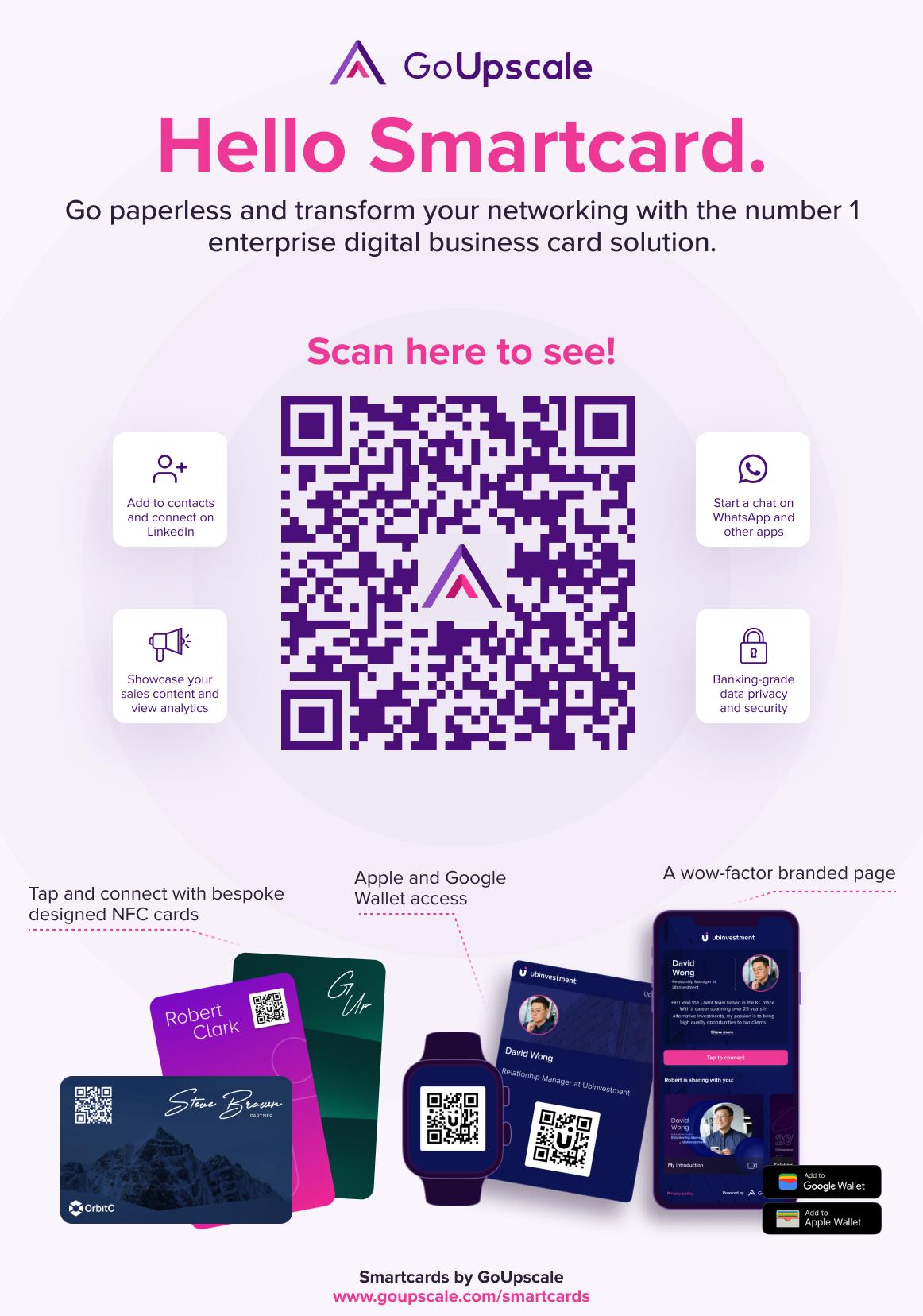
Non-UK-Headquartered Solution Providers (A-Z)
Entersekt
Stellenbosch, South Africa
EPAM Systems
Newtown, PA, United States
ERI
Meyrin, Switzerland
Euroclear
Brussels, Belgium
eVestment
Atlanta, GA, United States
Evooq
Lausanne, Switzerland
Exante
Limassol, Cyprus
Experian
Dublin, Ireland
Expersoft Systems
Steinhausen, Switzerland
FA Solutions
Helsinki, Finland
Facebook
Menlo Park, CA, United States
FactSet
Norwalk, CT, United States
Fenergo
Dublin, Ireland
Financial Risk Solutions
Dublin, Ireland
Financial Simplicity
Sydney, NSW, Australia
FINARTIS
Lausanne, Switzerland
FinIQ
Singapore
FinoComp
Jamberoo, NSW, Australia
FirstRate
Arlington, TX, United States
FIS
Jacksonville, FL, United States
Fitch Ratings
New York, NY, United States
Flanks
Barcelona, Spain
Flybits
Toronto, ON, Canada
Flyer Financial Technologies
New York, NY, United States
Footprint Analytics
Singapore
Forrester
Cambridge, MA, United States
Fortra
Eden Prairie, MN, United States
FundCount
Norwood, MA, United States
FundsDLT
Luxembourg
Fundwave
Singapore
Futora
Tel-Aviv, Israel
Future Processing
Gliwice, Poland
Gartner
Stamford, CT, United States
GBST
Sydney, NSW, Australia
Genpact
New York, NY, United States
GFT
Stuttgart, Germany
Global Cyber Alliance
New York, NY, United States
Global Relay
Vancouver, BC, Canada
Google
Mountain View, CA, United States
GoUpscale
Bangkok, Thailand
Halo Investing
Chicago, IL, United States
Hearsay Systems
San Francisco, CA, United States
Hedge Fund Review
Chicago, IL, United States
HubSpot
Cambridge, MA, United States
Huddlestock
Stavanger, Norway
Hyperscience
New York, NY, United States
IBM
Armonk, NY, United States
iCapital Network
New York, NY, United States
ICS
Sydney, NSW, Australia
IFA Direct Home
Gibraltar
Ignition Advice
Sydney, NSW, Australia
IMTF
Givisiez, Switzerland
indigita
Geneva, Switzerland
Infront
Oslo, Norway
UK WealthTech Landscape Report 2023 135
Non-UK-Headquartered Solution Providers (A-Z)
Institutional Shareholder Services
Rockville, MD, United States
Interactive Brokers
Greenwich, CT, United States
Intercontinental Exchange (ICE)
New York, NY, United States
InterGen DATA
Plano, TX, United States
IntoTheBlock
Miami, FL, United States
InvestCloud
Beverly Hills, CA, United States
InvestGlass
Geneva, Switzerland
Investing.com
Tel Aviv-Yafo, IL, United States
Investment Metrics
Norwalk, CT, United States
Investment Trends
Sydney, NSW, Australia
InvestSuite
Leuvain, Belgium
IQ-EQ
Grand Duchy of Luxembourg, Luxembourg
IRESS
Melbourne, VIC, Australia
Ivanti
South Jordan, UT, United States
Jacobi
San Francisco, CA, United States
Jade Software Corporation
Christchurch, New Zealand
Kapitalwise
New York, NY, United States
Kidbrooke
Stockholm, Sweden
KPMG
Toronto, ON, Canada
Kroll
New York, NY, United States
La Meer
San Jose, CA, United States
Leonteq
Zurich, Switzerland
Lexis Nexis Risk Solutions
Alpharetta, GA, United States
Linedata
Neuilly sur Seine, France
Link Group
Sydney, NSW, Australia
LinkedIn
Sunnyvale, CA, United States
LiquidityBook
New York, NY, United States
Liquidnet
New York, NY, United States
LogMeIn
Boston, MA, United States
Lombard Odier
Geneva, Switzerland
LTIMindtree
Mumbai, India
Lucht Probst Associates (LPA)
Frankfurt, Germany
Luma Financial Technologies
Cincinnati, OH, United States
Luxoft
Zug, Switzerland
m2Wealth International
Hong Kong
MacroMicro
Taipei, Taiwan
MailChimp
Atlanta, GA, United States
Mambu
Amsterdam, Netherlands
Masttro
Zurich, Switzerland
Matter
Copenhagen, Denmark
McKinsey & Company
New York, NY, United States
Mercer
New York, NY, United States
METACO
Lausanne, Switzerland
Microsoft
Redmond, WA, United States
Mirador
Darien, CT, United States
Moody's Analytics
New York, NY, United States
Moonfare
Berlin, Germany
Morningstar
Chicago, IL, United States
Moxo
Cupertino, CA, United States
MSCI
New York, NY, United States
MyComplianceOffice
New York, NY, United States
Nasdaq
New York, NY, United States
Neko Solutions
Lisbon, Portugal
UK WealthTech Landscape Report 2023 136
Neuroprofiler
Vinon-sur-Verdon, France
NexJ
Toronto, ON, Canada
Objectway
Milan, Italy
OpenAI
San Francisco, CA, United States
OpenFin
New York, NY, United States
Oracle
Redwood Shores, CA, United States
Orca
Zurich, Switzerland
Orchestrade
San Mateo, CA, United States
Ortec Finance
Rotterdam, Netherlands
Palantir Technologies
Palo Alto, CA, United States
Palico
Paris, France
PandaConnect
Soborg, Denmark
Pexip
Oslo, Norway
Praemium
Melbourne, VIC, Australia
Private Wealth Systems
Mooresville, NC, United States
Prive Technologies
Hong Kong
Profile Software
Athens, Greece
Prometeia
Bologna, Italy
Proofpoint
Sunnyvale, CA, United States
Purefacts
Toronto, ON, Canada
Qraft Technologies
Seoul, South Korea
Quantifeed
Hong Kong
Raise Partner
Grenoble, France
Raisin
Berlin, Germany
Reliaquest
Tampa, FL, United States
Responsive
Vancouver, BC, Canada
RFA
New York, NY, United States
RiskScreen
St Helier, Jersey
ROYC Group
Stockholm, Sweden
S&P Global Market Intelligence
New York, NY, United States
S&P Global Ratings
New York, NY, United States
Sage Intacct
San Jose, CA, United States
Salesforce
San Francisco, CA, United States
Salt Edge
Ottawa, ON, Canada
SAP
Walldorf, Germany
Satuit Technologies
Braintree, MA, United States
Saxo Group
Copenhagen, Denmark
Scalable Capital
Munich, Germany
Seeking Alpha
New York, NY, United States
SEI
Oaks, PA, United States
Seismic
San Diego, CA, United States
Sensefolio
Chicago, IL, United States
Sentieo
San Francisco, CA, United States
ServiceNow
Santa Clara, CA, United States
Sharesight
Sydney, NSW, Australia
SharpFin
Stockholm, Sweden
SimCorp Coric
Copenhagen, Denmark
SIX Group
Zurich, Switzerland
Slack
San Francisco, CA, United States
Smarsh
Portland, OR, United States
Smartkarma
Singapore
Smat.io
Delémont, Switzerland
Squirro
Zurich, Switzerland
SS&C Technologies
Windsor, CT, United States
State Street Corporation
Boston, MA, United States
Stepstone
New York, NY, United States
StockCharts
Redmond, WA, United States
UK WealthTech Landscape Report 2023 137
Non-UK-Headquartered Solution Providers (A-Z)



Surfly
Amsterdam, Netherlands
Sustainalytics
Amsterdam, Netherlands
Swimbird
Stockholm, Sweden
swissQuant Group
Zurich, Switzerland
Synpulse
Zurich, Switzerland
Tableau Software
Seattle, WA, United States
Tata Consultancy Services
Mumbai, India
Taurus
Geneva, Switzerland
TeamViewer
Goppingen, Germany
TeamWork Management
Geneva, Switzerland
TechRules
Madrid, Spain
TeleMessage
Acton, MA, United States
Temenos
Geneva, Switzerland
theScreener
Nyon, Switzerland
Tiingo
Alexandria, VA, United States
Tiller Technologies
St Helier, Jersey
Tindeco Financial Services
Zug, Switzerland
Topaz Digital
Zug, Switzerland
Trading Central
Paris, France
Trendrating
Lugano, Switzerland
Truss Edge
Naperville, IL, United States
Trusted Family
Brussels, Belgium
TS Imagine
New York, NY, United States
Twelve Data
Singapore
Twilio
San Francisco, CA, United States
Typeform
Barcelona, Spain
UBS Partner
Zurich, Switzerland
Umlaut
Sydney, NSW, Australia
Unblu
Basel, Switzerland
Unicorn Data Services
Lyon, France
Uniphore
Palo Alto, CA, United States
Valuefy
Mumbai, India
Vanguard
Malvern, PA, United States
Venn by Two Sigma
New York, NY, United States
VERMEG
Amsterdam, Netherlands
Vestorly
New York, NY, United States
Vettafi
New York, NY, United States
Virtual Vaults
Zuid-Holland, Netherlands
Voyant
Austin, TX, United States
Voyc
Amsterdam, Netherlands
Wealthbrain
Dubai, United Arab Emirates
Wealth-X
New York, NY, United States
Wealthype
Milan, Italy
Wealth99
Australia
Windmill
Baar, Switzerland
Wipro
Bengaluru, India
Xero
Te Aro, New Zealand
Yahoo
New York, NY, United States
Yext
New York, NY, United States
YieldX
Miami, FL, United States
Zapier
San Francisco, CA, United States
Zoho Corporation
Austin, TX , United States
Zoom
San Jose, CA, United States
UK WealthTech Landscape Report 2023 138
AN INVITATION ONLY, NETWORKING EVENT
A day that brings together COOs, CTOs, CIOs, and their teams from the top EAMs, Private Banks, Wealth Managers, DFMs, Advisers, and MFOs. Owen James, in collaboration with The Wealth Mosaic, present an exciting opportunity to explore the latest developments in technology.


DATES FOR THE DIARY!
FOCUSING ON THE BUSINESS 9/11/2023
London
Why attend as a delegate?

FOCUSING ON SWITZERLAND
14/11/2023
Are you a decision maker from a Private Bank or Wealth Manager
n Strategic engagement - Share best practice
n Meet your peers - Networking at the highest level
n Hear new thinking and explore the latest trends and solutions
n Inspiring insights from external keynote speakers
n Platform for change - An opportunity to work through the key challenges facing both your business and the industry, with a view to find collective ways of driving change forward


n Bespoke and tailored - An opportunity to build your own itinerary enabling you to participate in roundtables
FOCUSING ON THE CLIENT
14/03/2024
London
Why sponsor?
Are you a technology solution provider?

n Participant data
n Brand awareness
n Networking at the highest level through one to ones and hosted mealtimes
n Opportunities to present
n Positioning as a thought leader
n Content creation and hosting opportunities
n Post event follow up opportunities
To
Get in touch today to find out more!
register as a delegate contact John Hall at johnhall@owenjamesgroup.com
Google Village, Zurich sponsorship opportunities contact Daniel Gilmore at danielgilmore@owenjamesgroup.com
For
About our WealthTech Landscape Report Series (WTLRs)
Our benchmark report series is called the WealthTech Landscape Report Series (WTLRs). The intention behind this report series is to cover key wealth management communities including by country/region, type of wealth manager, plus business needs and themes. To date we have produced WTLRs for US, UK, Switzerland, APAC, the Middle East, Global Family Office, and US RIA.
Each WTLR is founded on a curated directory of hundreds of relevant technology and related solution providers to the business needs of the wealth management community in focus. This directory is reviewed and refreshed for every report.
Each report builds on this unique directory resource with a variety of articles and interviews with industry participants, plus a section of featured Solution Provider Profiles and a selection of Solution Provider Showcases. Within each report we look at how global trends, such as next-generation, customer centricity, and AI, affect that country, region, or sector. We also look at country, region, and sector trends such as women of wealth in the Middle East and The war for talent in the US.
This mix of content, profiles and directory come together to form the basis of each WTLR and a report that aims to provide each community within the series with a modern and insightful knowledge resource for its technology and related business needs. A comprehensive and relevant WealthTech guide.
As we move forward, we will further build out these projects with more detailed analysis, research and events. Each WTLR is intended to become a broader and ongoing insight project for each focus community, mixing our online Solution Provider Directory and content, focused reports, events, research, and more.
UK WealthTech Landscape Report 2023 140
Middle East WTLR 2023
A comprehensive guide to the technology and related vendor marketplace with 500+ solution providers and an overview on the data of growing trends.
Swiss WTLR 2022
Featuring 512+ solution providers and 21 insight articles from wealth managers and solution providers on contemporary technology themes relevant to the Swiss wealth management community.

US RIA WTLR 2022
In this first edition of the report, we included 437 solution providers, and 11 articles from solution providers on contemporary technology themes relevant to the this market.
APAC WTLR 2023
This edition of the report includes 15 articles from wealth managers, consultants, and technology solution providers, and a directory with 615 entries from all across the world.
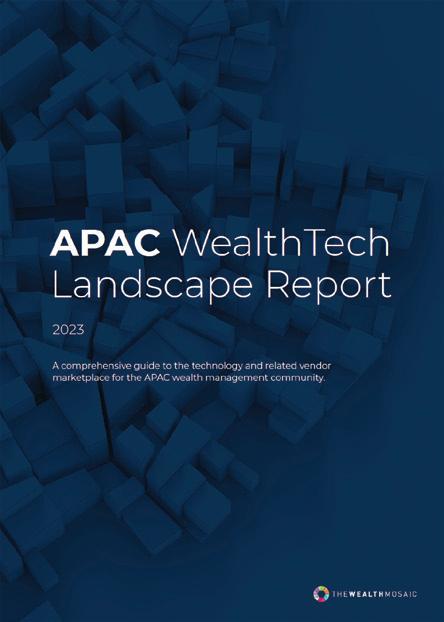
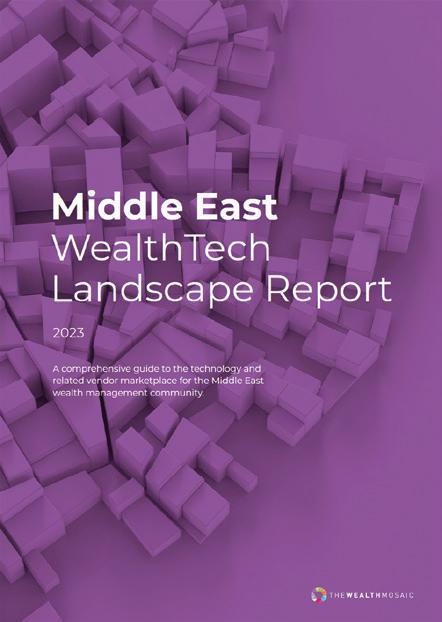
UK WTLR 2022
The 2022 edition of the report featured 726 solution providers within the directory, supported by 11 articles evaluating the evolution of technology themes in the UK wealth management space.

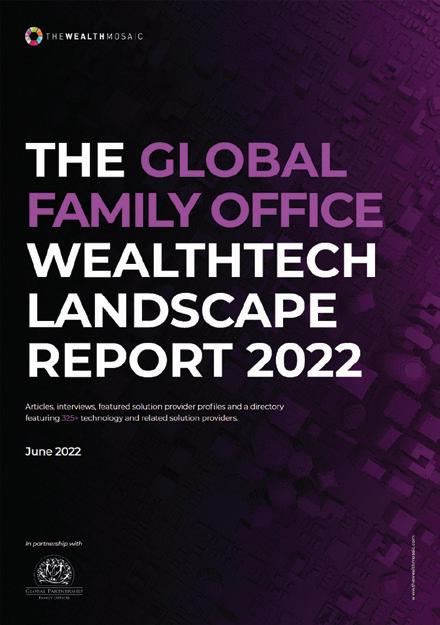
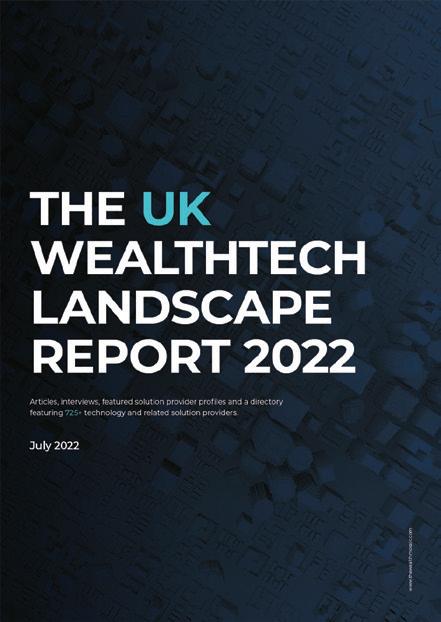
Global Family Office WTLR 2022
This edition of the GFO report featured 338 solution provides and 11 thoughtprovoking articles focused on relevant contemporary technology themes.
Swiss WTLR 2024 February US WTLR 2024 April European WTLR 2024 June APAC WTLR 2024 October
Planned WTLRs for 2024 UK WealthTech Landscape Report 2023 141
Previous WTLRs
About The Wealth Mosaic
The Wealth Mosaic (TWM) is an increasingly well-known and highly-regarded knowledge resource, closing the gap between the evolving business needs of wealth management businesses across the world and the growing marketplace of technology and related solution providers selling into the market.
For Wealth Managers, the buy side of our marketplace, TWM is designed to enable discovery of key solutions, solution providers and knowledge resources by specific business needs.
For Solution Providers Vendors, the sell side of our marketplace, TWM exists to support the positioning, exposure and business development needs of these firms in a more complex and demanding market.
Discover The Wealth Mosaic at www.thewealthmosaic.com
UK WealthTech Landscape Report 2023 142
About Us
We are a UK-headquartered online solution provider directory and knowledge resource, focused specifically on the wealth management community.
Built around a curated and constantly growing and evolving directory of solution providers to the wealth management sector across the world, our business is founded on five core principles that make us different from other offerings in the market:
• Wealth management-focused
• Directory-first
• Research-led
• Online-first
• Accessible
Behind this report, the engine room of our business in delivering all of the above is our website.
This is available to any user 24/7, 365-days a year. As of early April 2023, our website hosts almost 2,500 solution provider profiles and hosts well over 5,000 solution profiles from these businesses. Each of these
“ UK WealthTech Landscape Report 2023 144
solutions is tagged to at least one of the 40 headline Business Need categories across our first two live marketplaces (Technology and Data, and Consulting, Research and Support Services). These Business Need categories create the first level of filtering around our Solution Provider Directory.
As we focus on further growth, we expect that maintaining and evolving this resource will provide users with even more business and solution profiles relevant to their business needs, more refined Business Need categories, more sub-categories and more focused tagging. This will allow any wealth manager to more precisely pinpoint the solution providers and offerings that are relevant to their needs. This should then support solution providers to more effectively position themselves and their offerings to be discovered by the right users.
Alongside the core directory focus, we will continue to add and also further develop the content, knowledge resources and tools within the website to support the user in their discovery, learning and engagement process.
The Digital Marketplace for Wealth Management Discover The Wealth Mosaic at www.thewealthmosaic.com
Alongside the core directory focus, we will continue to add and also further develop the content, knowledge resources, and tools within the website to support the user in their discovery, learning and engagement process.
Project Timeline
Q1 2024
WealthTech Annual Report 2024



Q1 2024
Swiss WealthTech Landscape Project (Event and Report)

UK WealthTech Live Q1 2024
Q2 2024
US WealthTech Landscape Project (Event and Report)

Q2 2024
Europe WealthTech Project (Event and Report)


UK as a Wealth Centre Q3 2024
Q4 2024
APAC WealthTech Project (Event and Report)
To learn more about these reports, please write to us at office@thewealthmosaic.com UK WealthTech Landscape Report 2023 145
Our Services
The engine room of The Wealth Mosaic is our Solution Provider Directory (SPD). As of early October 2023, the SPD includes over 8,000 Business and Solution Profiles (and growing) from businesses around the world that serve, seek to serve, or are relevant to the evolving business needs of the broad wealth management sector. Soon to be significantly updated, this resource will be categorised by features and functions such as geography (origin as well as relevance), types of wealth management business served or targeted, themes, and more. An increasingly broad and valuable resource for the wealth management sector.
To support our goal of delivering a deep knowledge resource for the sector, in addition to the build, maintenance and development of the SPD, we are
increasingly working with partners, clients and the industry across five core service pillars: Membership, Content, Reports, Events and Research.

Offering a supporting fuel to help drive the engine that is the SPD, each of these service pillars also features standalone service offerings available to both wealth managers and solution providers to support their specific business needs whether that be positioning, exposure, insight, learning, networking or more.
TWM offers a menu of products and services within each service pillar which can be consumed by our clients either as 'push' (you participate in a TWM project such as a report or event) or 'pull' (you ask us to support your individual needs with a specific service).
UK WealthTech Landscape Report 2023 146
Membership
For Solution Providers, a Membership of TWM offers enhanced Business and Solution Profiles in our Solution Provider Directory (SPD), the ability to publish content on our website, prioritisation in the SPD, some amplification of your content, monthly analytics, and more.
Reports
• WealthTech Landscape Report Series
• WealthTech Views Report Series
• WealthTech Annual
• WealthTech Innovators
• As a Wealth Centre
Content
• Written (articles, interviews, The Wealth Mosaic Talks To, whitepapers)
• Video (1-on-1 interviews, talking heads, event videos)
• Podcast & Webinar (1-on-1 interviews/discussions, panel discussions)
Events
• WealthTech Live
• WealthTech Matters
• WealthTech Hive
• Tailor-Made & Event Support
Research & Insights
• Whitepapers
• Tailor-Made Research
• Wealth & Tech Insight Digest
• UK Wealth Manager Market Map
Campaign
Campaign features a variety of TWM services, products, and tools to deliver ongoing support for your specific content, marketing, and lead generation needs.
If you'd like to know more or participate in our upcoming projects, contact us at office@thewealthmosaic.com
UK WealthTech Landscape Report 2023 147
www.thewealthmosaic.com Brook House, Mint Street, Godalming, GU7 1HE, UK Contact Us UK WealthTech Landscape Report 2023 148
publication
The Wealth Mosaic
of
Copyright © The Wealth Mosaic 2023 All rights reserved Get in touch: office@thewealthmosaic.com Discover more about us at www.thewealthmosaic.com
This publication constitutes marketing material and is the result of independent research. The information and opinions expressed in this
were produced by
Limited., as of the date
writing and are subject to change without notice.



 Stephen Wall Founder of The Wealth Mosaic
Alison Ebbage Editor-in-Chief of The Wealth Mosaic
Stephen Wall Founder of The Wealth Mosaic
Alison Ebbage Editor-in-Chief of The Wealth Mosaic














 Carol Katz Partner and Knowledge Lawyer in the Tax and Wealth Planning Group at Mishcon Private
Sam Beeby Head of Wealth and Investment Management Consulting at Cognizant
Danny Cox Head of Communications at Hargreaves Lansdown
Christopher Baxter Senior Global Solutions Consultant at aixigo
Tom Bucktrout Senior Sales Manager at CREALOGIX
Chris Handley IT Strategy and Change Director at Rathbones
Michael Basi Head of Wealth Proposition (EMEA) at InvestCloud
Iwan Schafthuizen Managing Director Business Development at Ortec Finance
Nils Frowein CEO of additiv
Fredrik Davéus CEO of Kidbrooke
Ian Ewart Board Adviser
Grayson Greer Managing DirectorGlobal at of First Rate
Sameera Udayangana Head of Engineering at WealthOS
Carol Katz Partner and Knowledge Lawyer in the Tax and Wealth Planning Group at Mishcon Private
Sam Beeby Head of Wealth and Investment Management Consulting at Cognizant
Danny Cox Head of Communications at Hargreaves Lansdown
Christopher Baxter Senior Global Solutions Consultant at aixigo
Tom Bucktrout Senior Sales Manager at CREALOGIX
Chris Handley IT Strategy and Change Director at Rathbones
Michael Basi Head of Wealth Proposition (EMEA) at InvestCloud
Iwan Schafthuizen Managing Director Business Development at Ortec Finance
Nils Frowein CEO of additiv
Fredrik Davéus CEO of Kidbrooke
Ian Ewart Board Adviser
Grayson Greer Managing DirectorGlobal at of First Rate
Sameera Udayangana Head of Engineering at WealthOS
































































 Charlotte Gregory Partner
Charlotte Gregory Partner







 Waleed Khan
Head of Client Support UK - Wealth waleed.khan@ortec-finance.com
Waleed Khan
Head of Client Support UK - Wealth waleed.khan@ortec-finance.com









 Martin Ross Chief Technology Officer martin.ross@pointgroup.io
Martin Ross Chief Technology Officer martin.ross@pointgroup.io

 Steve D'Souza Direct Sales Director steve.dsouza@wealth-dynamix.com
Steve D'Souza Direct Sales Director steve.dsouza@wealth-dynamix.com
 Robert Roome Chief Strategy Officer robert.roome@wealth-dynamix.com
Robert Roome Chief Strategy Officer robert.roome@wealth-dynamix.com

 Christine Schmid Head of Strategy christine.schmid@additiv.com
Christine Schmid Head of Strategy christine.schmid@additiv.com


 Christopher Baxter Senior Solution Consultant - Global christopher.baxter@aixigo.com
Christopher Baxter Senior Solution Consultant - Global christopher.baxter@aixigo.com





























































































